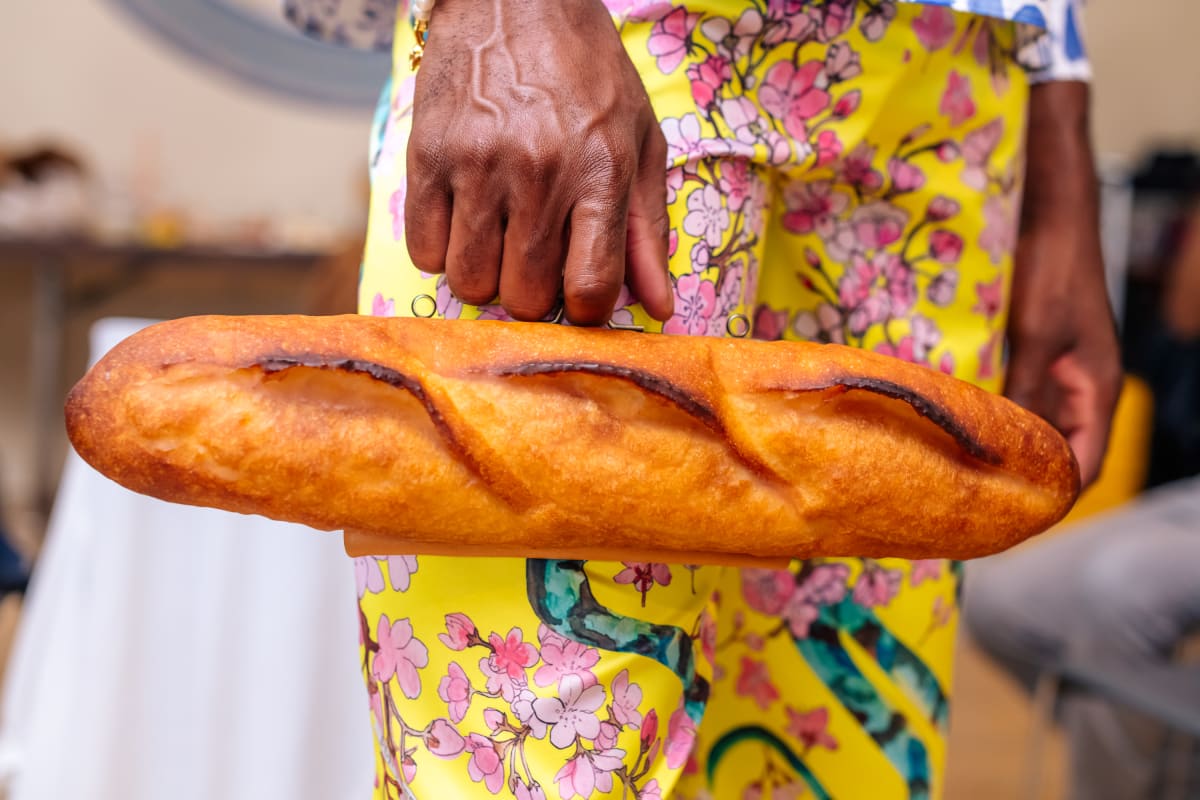Tom Scott visits the small Swiss ski town of Zermatt, where petrol cars have never been allowed. In the 1980s, the town skipped right from horse-drawn carriages to locally-built electric vehicles, which are made pretty much by hand and are expensive — but they are also easy to maintain and repair and can last for 30-50 years. Because space is at a premium, the town tightly controls who can own a vehicle and most of allowed vehicles are delivery vans, public transportation, or other vehicles with a communal use.
Tags: cars · Tom Scott · videoShared posts
No Cars Allowed in This Swiss Town (Except Tiny Electric Ones)
SarahThis is amazing
Aaro, 20
“I’m wearing a tunic kinda night dress and old shoes by Nike. I’m inspired by androgyne style and looks.”
1 July 2023, Helsinki Pride
Strat, 31 Wu, 30

Strat, 31
Wu, 30
Strat, 31: “ I’m wearing a Misbhv top, thrifted shorts, SWEAR boots, underwear from a gay bar in Detroit, a belt and necklace from eBay, Guess heart necklace, and gas station sunglasses. I’ve been inspired recently by early 2000s Fruits looks, some Galliano, and mostly all the dolls out there.”
Wu, 30: “I’m wearing Tekla shirt, shorts from I’m Sorry by Petra Collins, kicks by Margiela – all from this lil Montreal company called Ssense. A purple jacket by Pronounce (from Shanghai), with a less purple worker jacket from Carhartt. On top of all this mess, my Marine Serre sunglasses and a Dior skinny tie from my college graduation fit. This look is inspired by JT Firstman.”
May 7, 2023 ∙ Williamsburg
We Asked 100 People to Scream as Loud as They Can
SarahI love this and it makes me want to scream too!
This is great: The Cut asked 100 people to scream as loud as they could in front of a camera. For some, it was cathartic while others found it uncomfortable. Some folks didn't know how to scream which I don't entirely understand?
This video reminded me a lot of Ten Meter Tower, one of my all-time favorite short documentaries, in which dozens of people are filmed jumping from a 10-meter diving platform for the first time. Both videos deal with inner vs. outer selves and people's comfort with expressing vulnerability. (via colossal)
Tags: videoNicole Duennebier’s Sumptuous, Ominous Still-Lifes
SarahI love these! The ominous light, the slightly dying colors, the threat of jelly, all great
In Nicole Duennebier’s exhibition “Tender Burden,” at 13 Forest gallery in Arlington from May 20 to July 14, 2023, she finds inspiration in the “memorial flowers and the trinkets we leave behind to commemorate other people’s lives.”
The Malden artist paints sumptuous still-lifes of flowers and wreaths and moths and gray fish. She uses the term “Pronkstilleven,” a 17th century Dutch term for ostentatious, ornate still-lifes, in one of her titles—signaling the inspiration she’s been drawing from the Dutch “old masters.” And perhaps as well those paintings’ concerns with ravishing beauty as well as lessons about the transitoriness of life, the ever presence of death and decay.
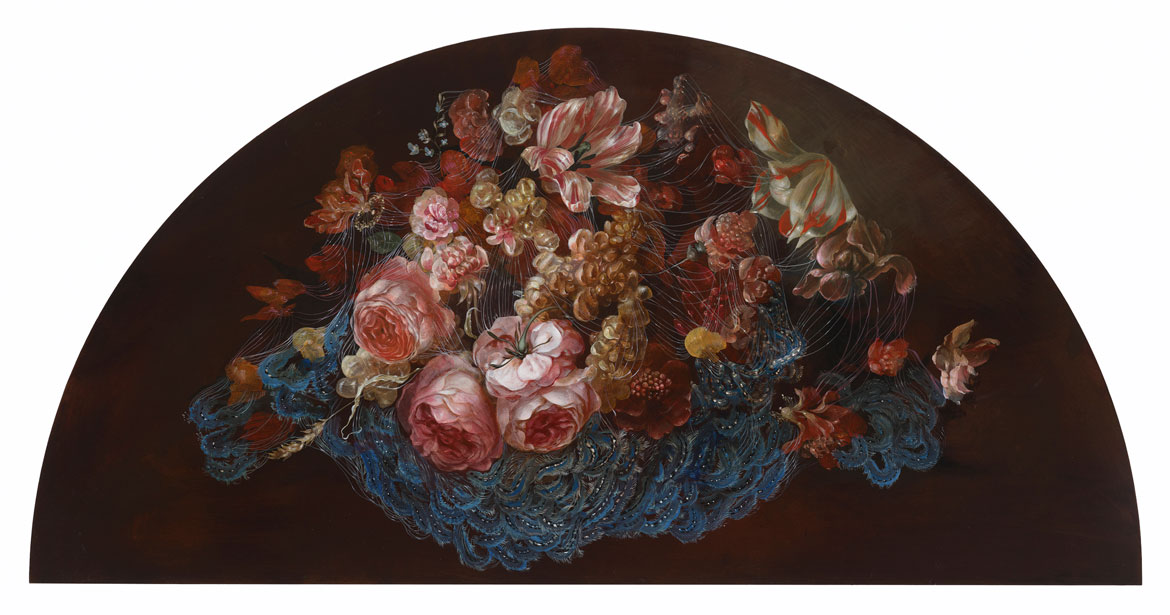
Duennebier seasons all the beauty with ominous undercurrents. Maybe there are contemporary environmental parables encoded here with Duennebier’s addition of tent caterpillars. A dazzling yellow speckled, blue mob of tent caterpillars swarm underneath a bouquet of pink and white blossoms covered with webs in “Tent Worm Bouquet” and cluster around flowers and blue sculptures in “Tent Worm with Blue Sculpture.” The insects can sometimes ravage forests by ravenously devouring of leaves and needles. In all their beauty is danger.
Previously:
• The Haunting Beauty Of Nicole Duennebier’s Flower Grotto Paintings
• Caitlin and Nicole Duennebier’s Big Furry Dead Monster
• Nicole Duennebier’s Sumptuous Paintings Evoke The Old Masters—If They Painted Oozing Piles Of Meat
If this is the kind of coverage of arts, cultures and activisms you appreciate, please support Wonderland by contributing to Wonderland on Patreon. And sign up for our free, occasional newsletter so that you don’t miss any of our reporting. (All content ©Greg Cook 2023 or the respective creators.)
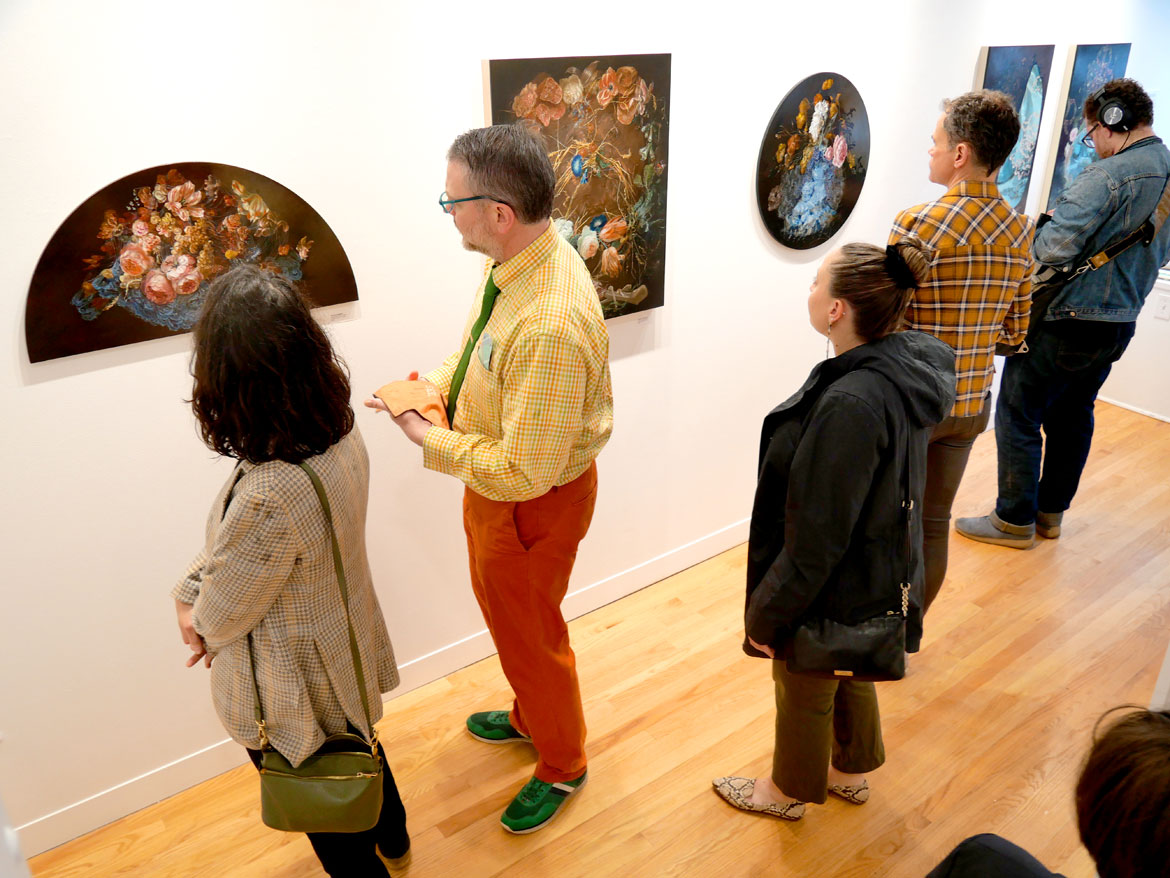
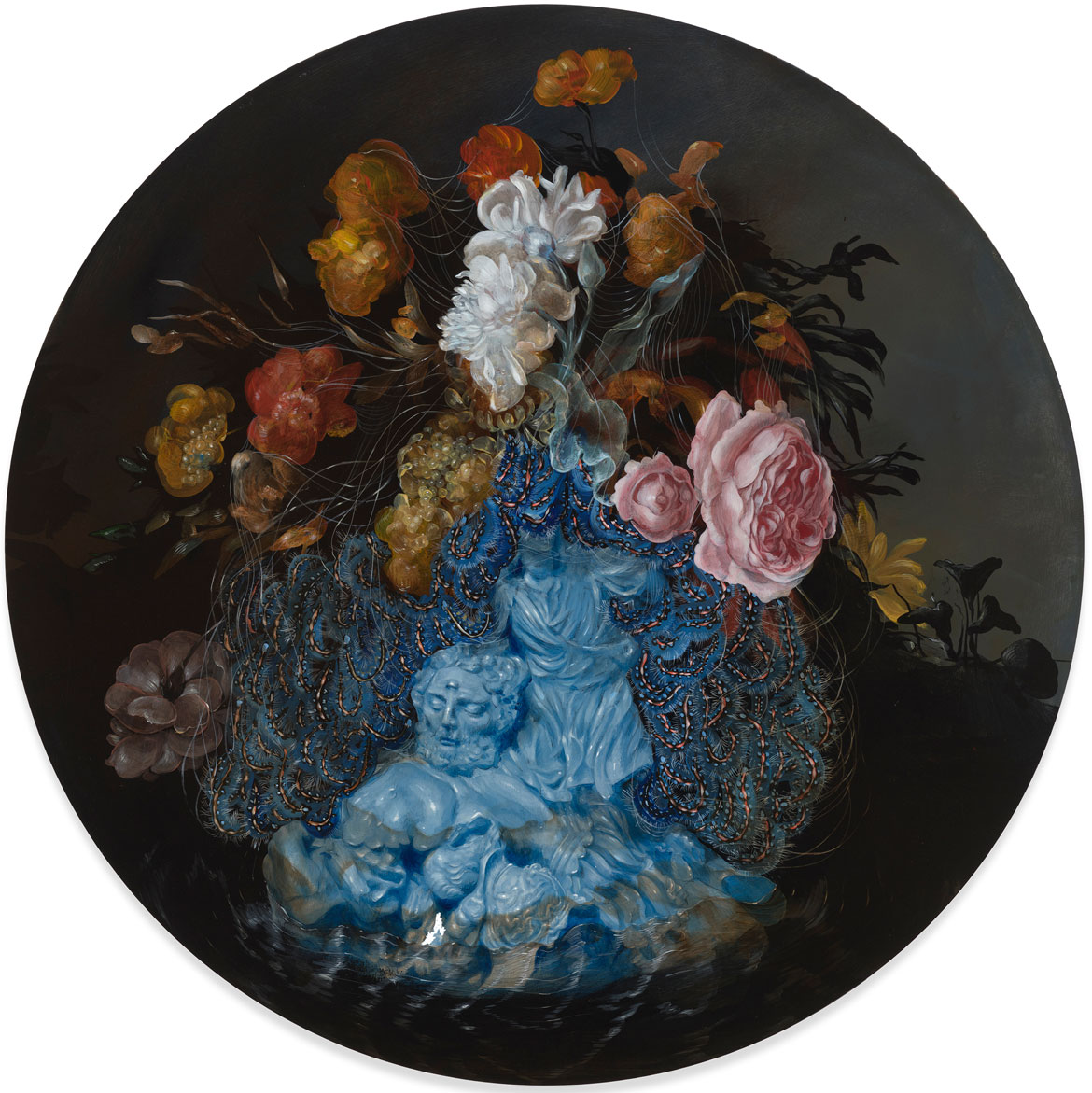
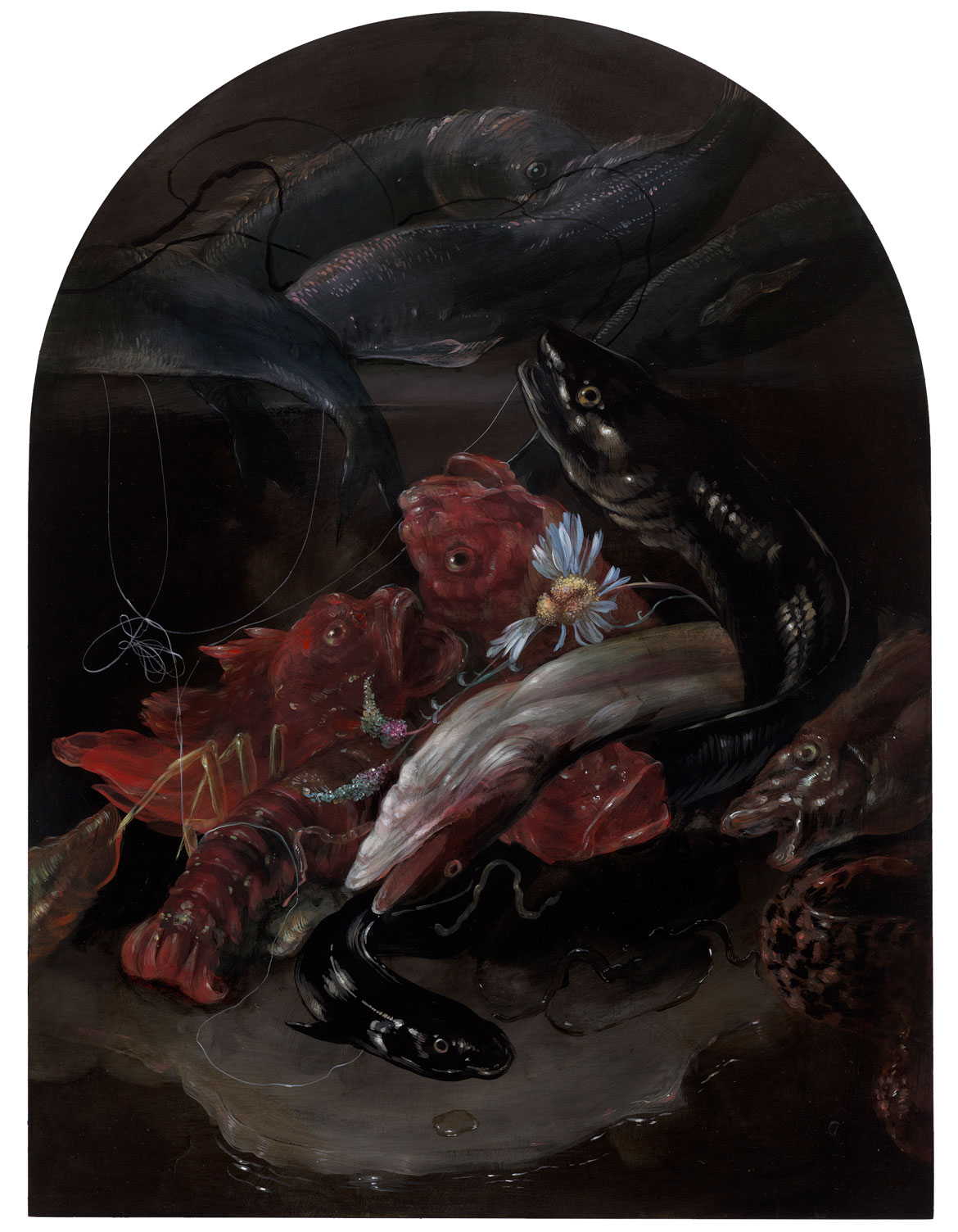
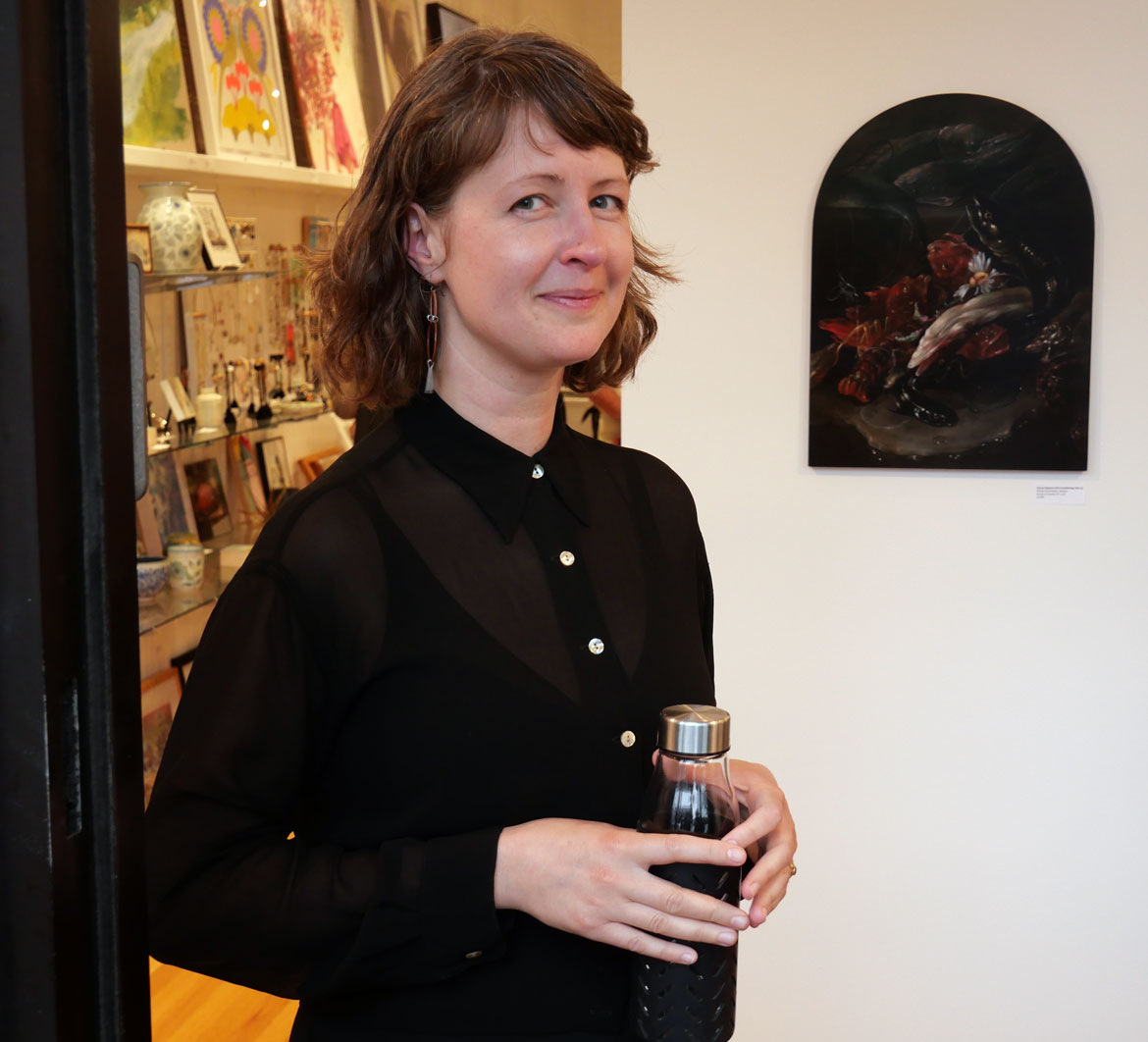
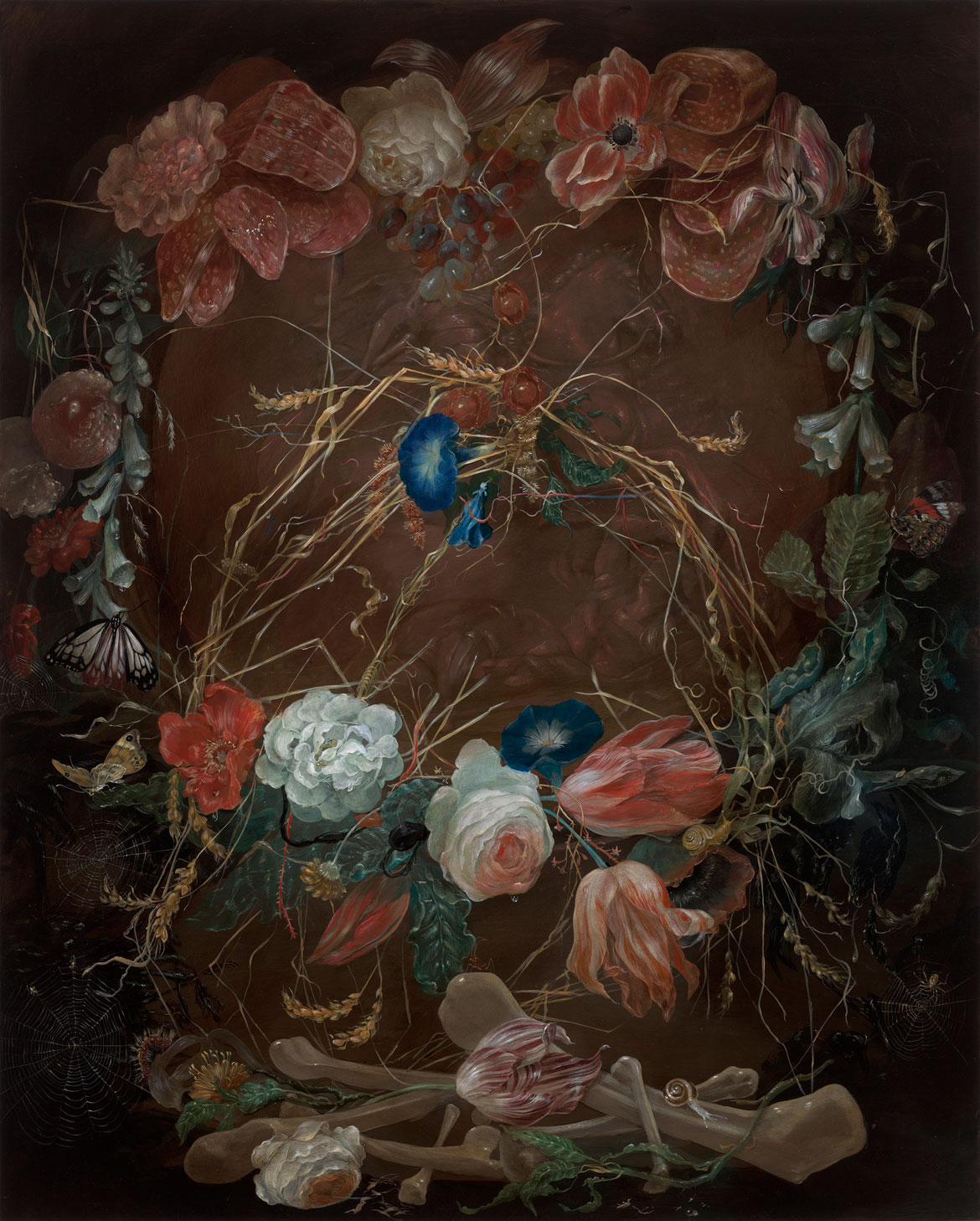

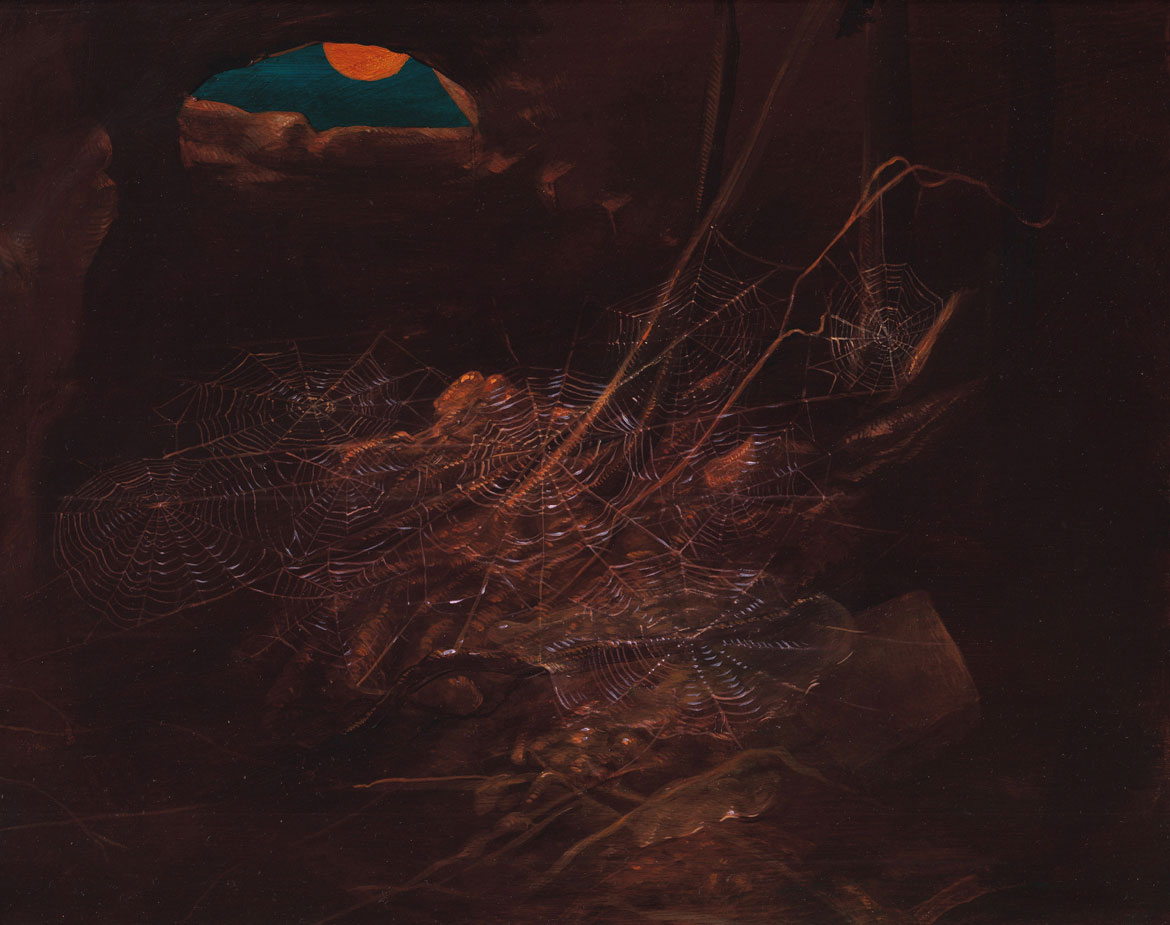

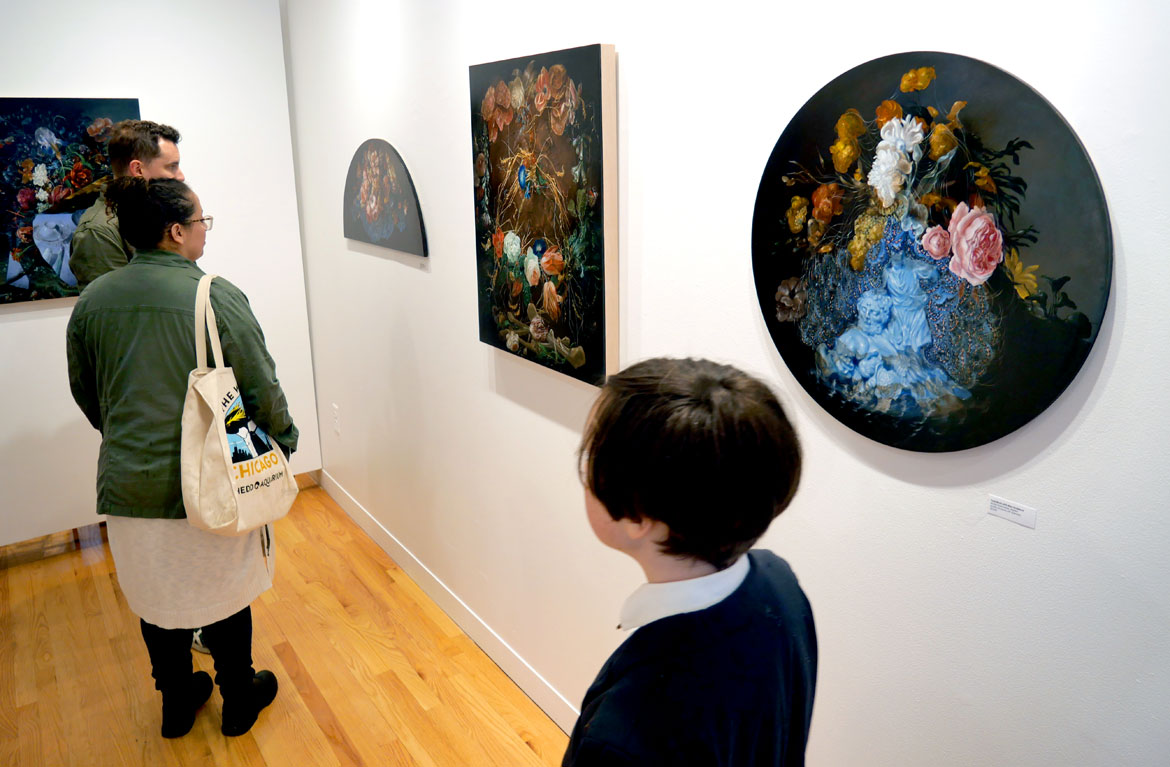
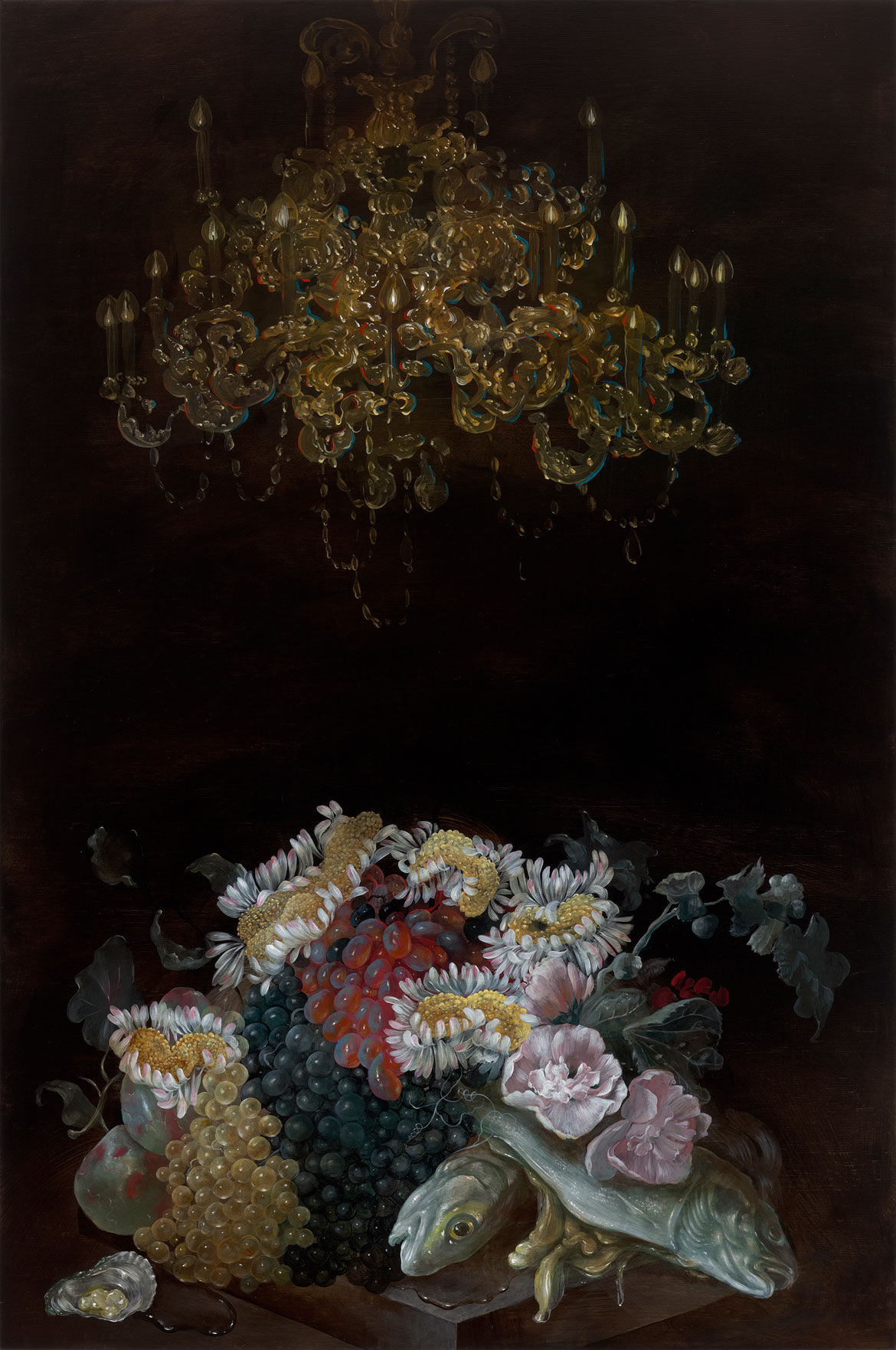
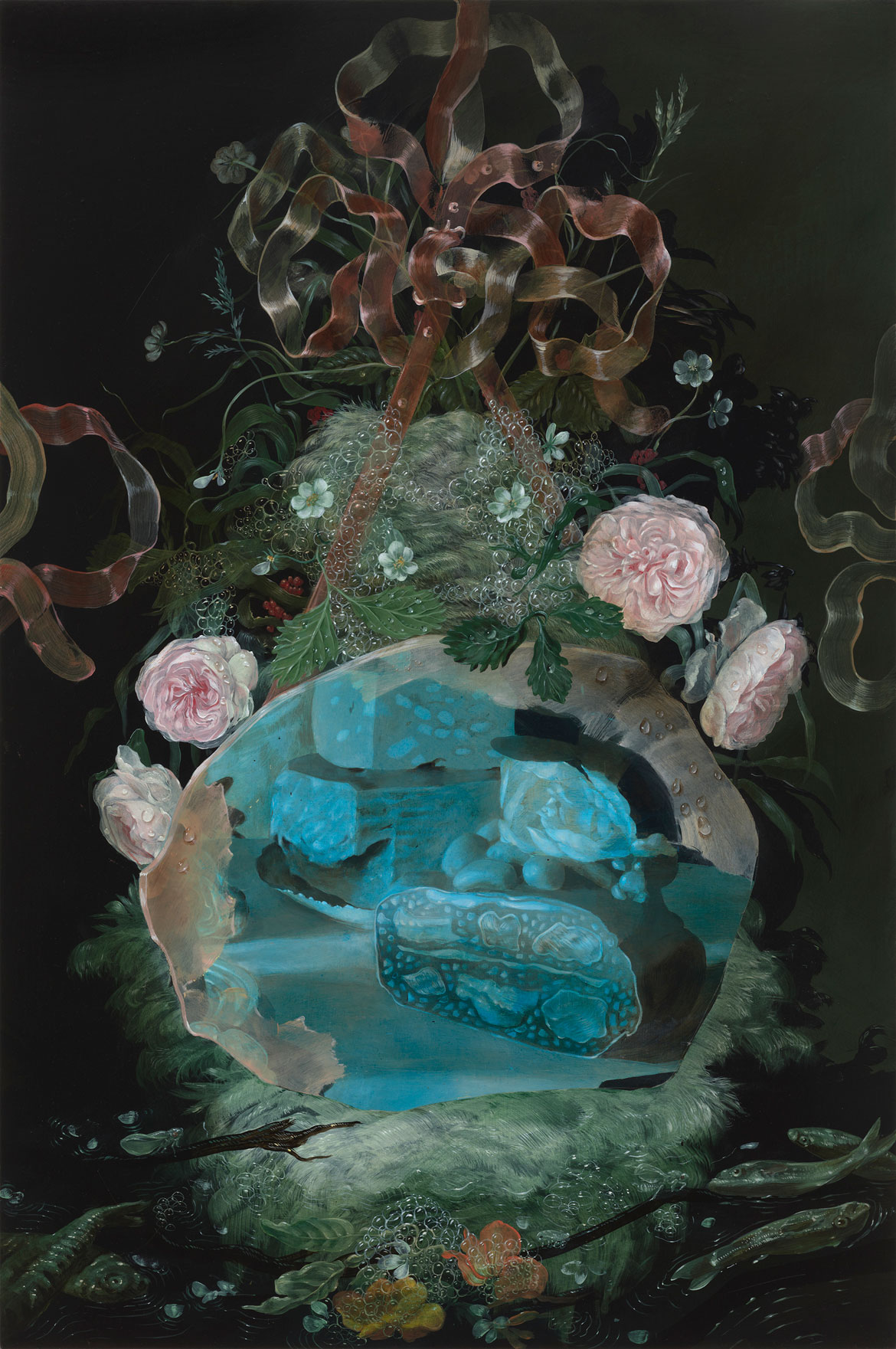
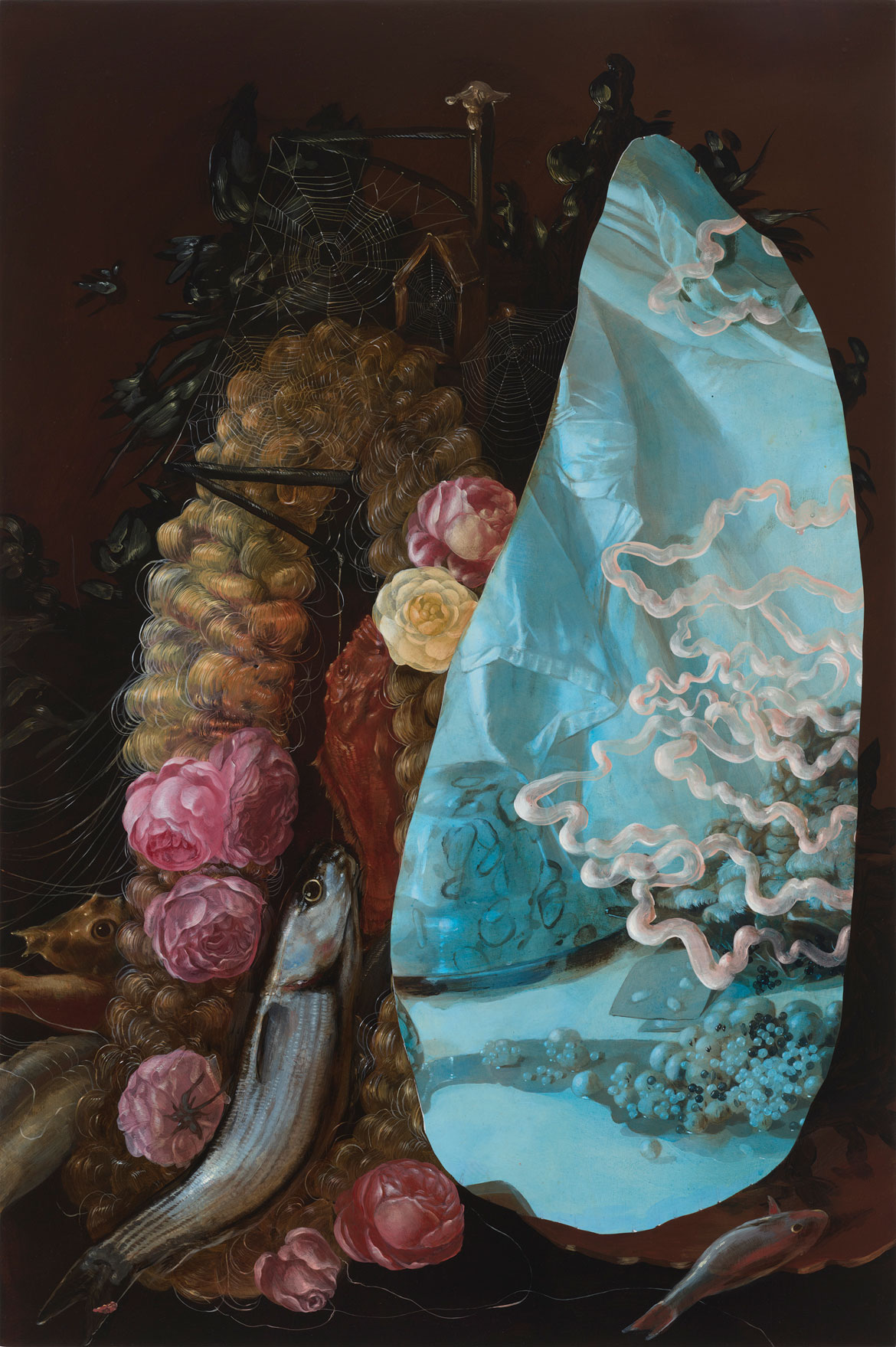
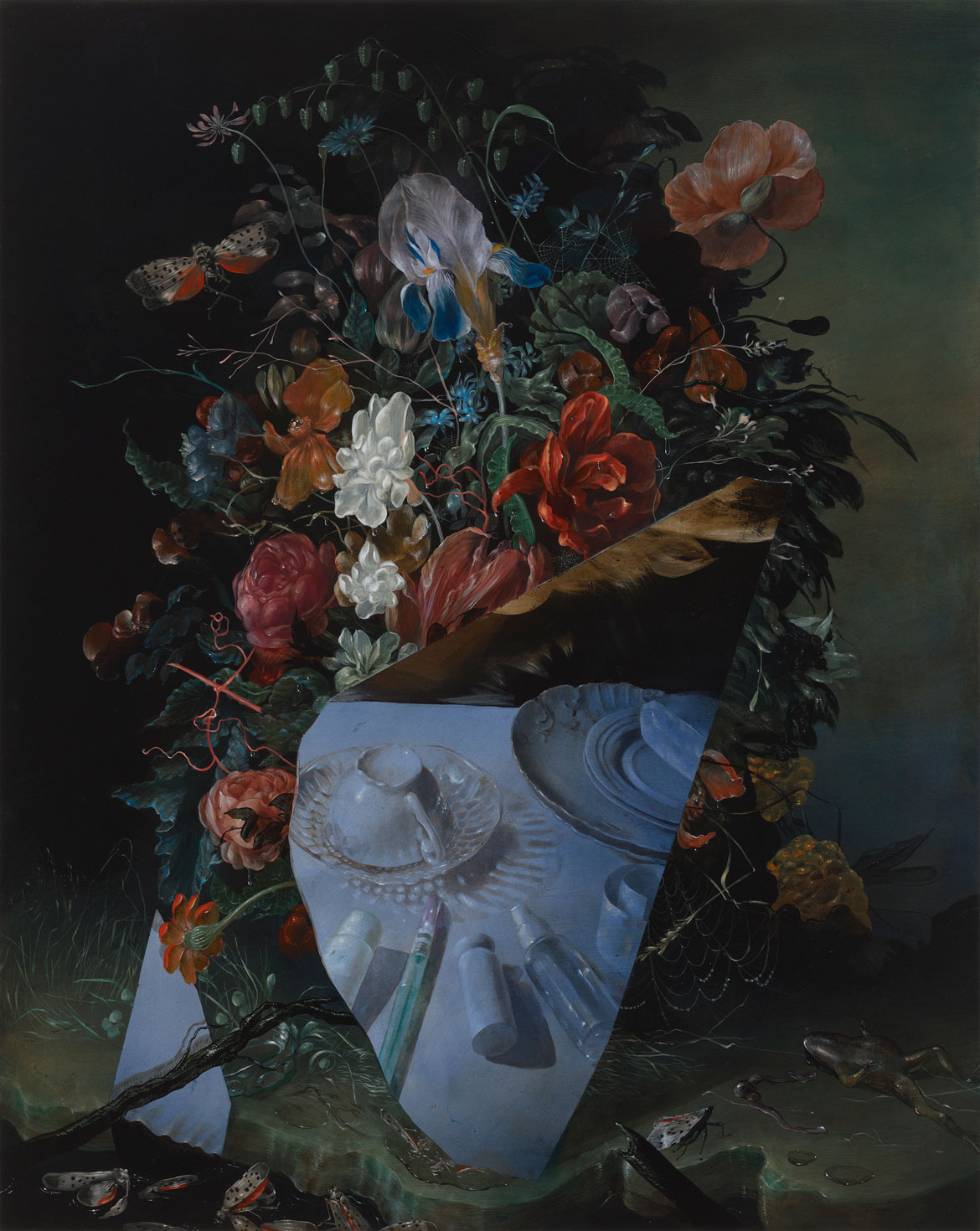
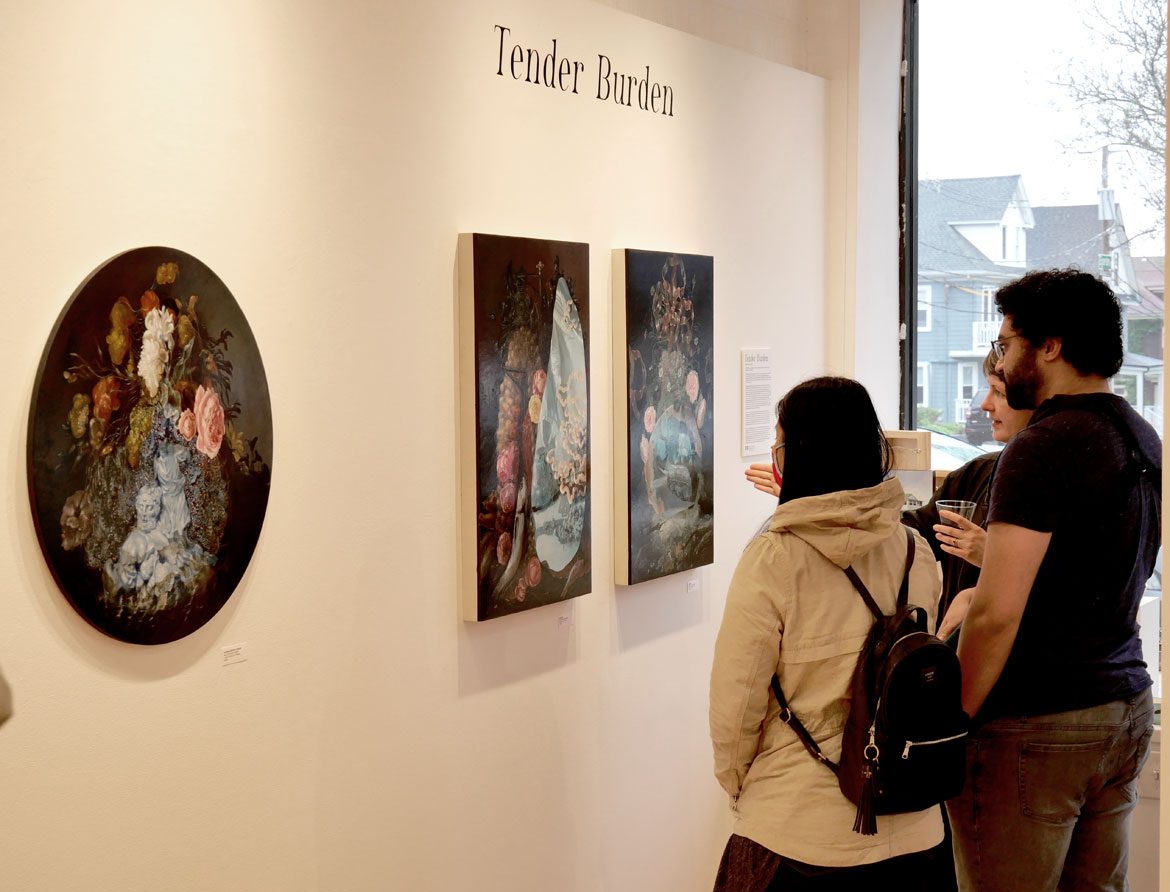
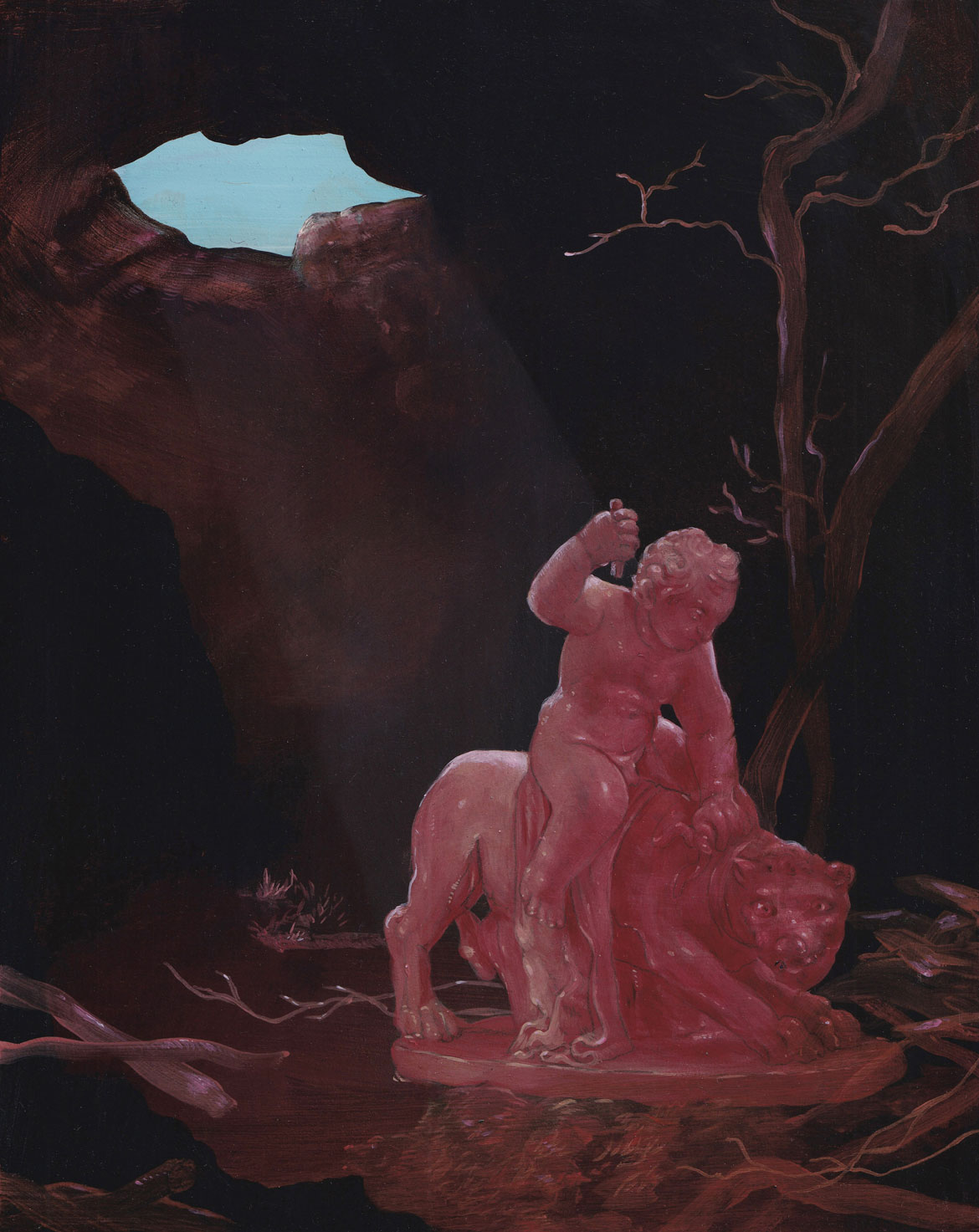
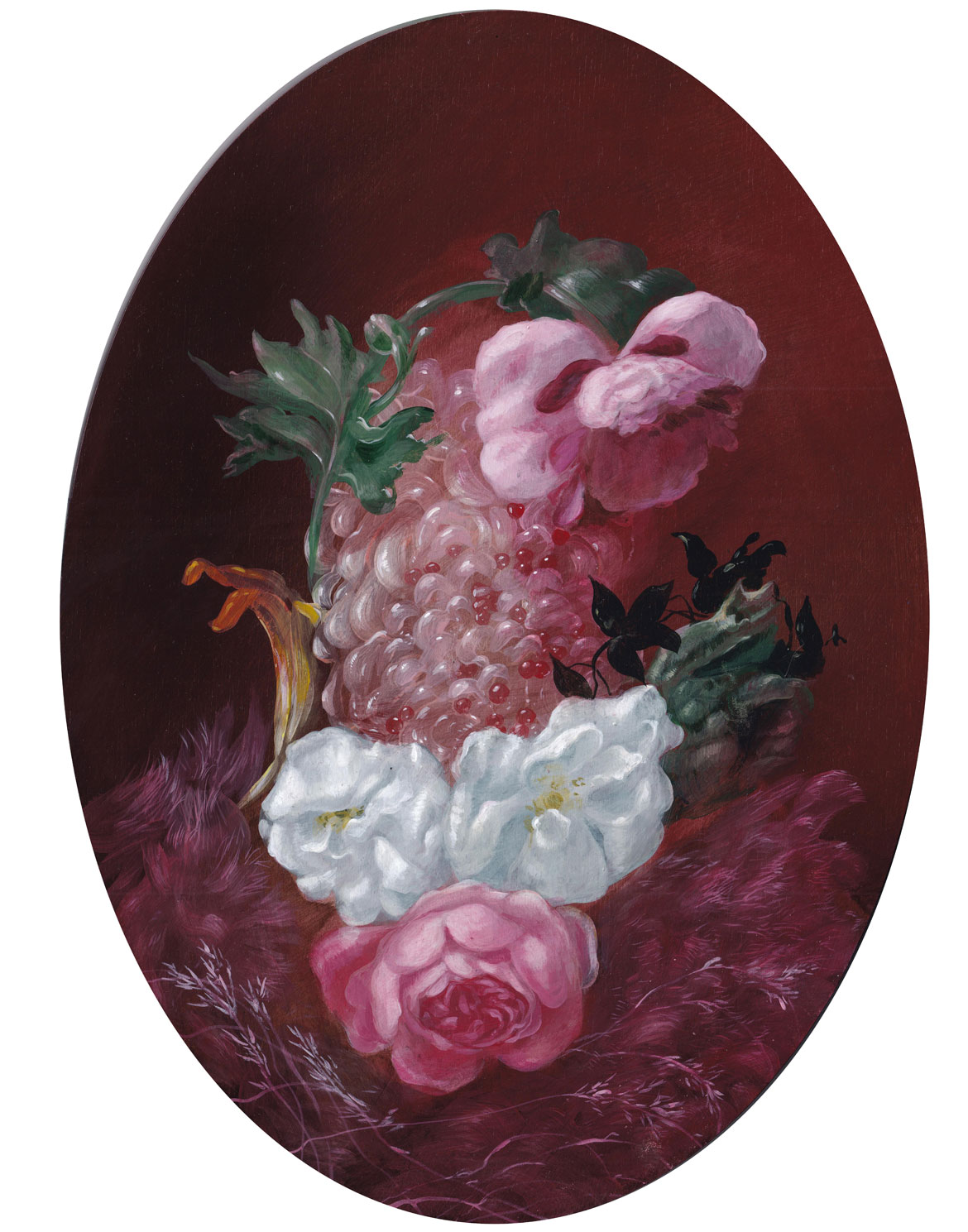
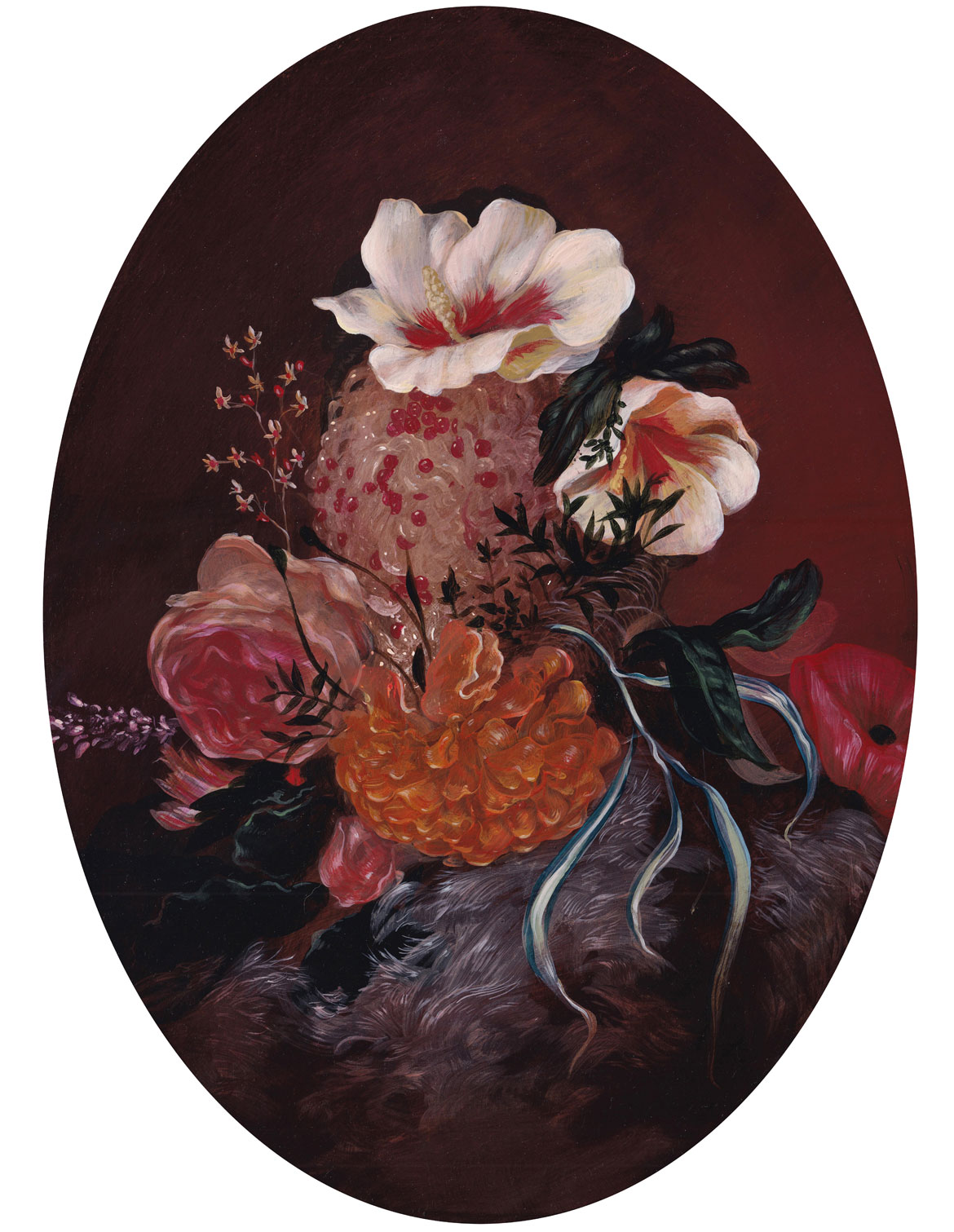
Martin Prekop’s Mirror House Is For Sale
The problem was the view.
“If you looked out the bathroom window, you looked onto a brick wall,” the artist Martin Prekop tells me. “There was a beautiful wood behind it, but you couldn’t see it.”
So he began covering that wall outside the main bedroom’s bathroom at the right rear of the house with mirrors that he custom cut to 2 inches wide by 8 inches long to match the size of the exterior bricks. Then he added more mirrors to the exterior of the house. And more mirrors. And more mirrors. Thousands of them. Until he’d covered nearly the whole exterior of the brown brick, split-level ranch house house at 897 Field Club Road in Pittsburgh’s leafy upscale Fox Chapel neighborhood.
“You never know how many bricks your home is made up of until you decide to put mirrors on every one,” Prekop joked to a gathering of Mattress Factory members at the house in 2016. “It is like an art project that never ends.”

Prekop tells me, “It took maybe 15 years total time to cover it.” The home became known as the Mirror House. (Though Prekop says, “I never called it anything.”) Having the mirrors follow the grid of the bricks gave the dazzling shimmer an underling sense of careful order. The house appears both bejeweled and as if it’s disappearing into the surrounding greenery. Sometimes it feels as if the house is watching you.
“We get notes in our mailbox all the time from kids saying they love the house and their father hates it,” Prekop told the Pittsburgh Post-Gazette in April 2023.
“Most often I hear the shocking statement that no one would ever buy this place because of what I’ve done to it,” Prekop told the Pittsburgh Post-Gazette in 1998. “As if I wanted to sell it! We’re not planning on leaving.”
But Prekop retired in 2018 after years of teaching art and leading colleges, and is aiming to move closer to his grown children and grandkids. So this spring, he has put the Mirror House up for sale.
An Exceptionally Ugly House
Martin Prekop and his wife Martha, a fiber artist and toy designer, bought the house in 1993. He had been a teacher and dean at the School of the Art Institute of Chicago, and was relocating to Pittsburgh to become dean of Carnegie Mellon University’s school of music, drama, design and art.
“The house was an exceptionally ugly house,” the 83-year-old recalls. “It was this sort of nasty brownish brick. It was pink and green on the inside.”
But he bought it because “I could afford it. It was in a good school district. My youngest son was just starting high school. It was nice and big. It had a three-car garage, a very big garage, and I was looking for a shop.”
Prekop was too busy with his new job at Carnegie Mellon the first year after the family moved in spend much time on the house, which had been built in 1969. But the first thing Prekop did was turn the garage into a woodshop where he built tables and kitchen cabinets for the house—“half art and half cabinetry,” he tells me—and which would also serve as a studio where he made art.

He had been born in Toledo, Ohio, in 1940 and grew up there. He studied at Cranbrook Academy of Art in Michigan (“That had a huge influence on me because it was a craft school and a design school”), then earned a master’s degree at Rhode Island School of Design in Providence. He spent a couple years in England on a Fulbright scholarship. He was offered a couple teaching jobs there, but his wife Martha wanted to return to the U.S. So he taught for a couple years at the St. Petersburg Junior College and the University of South Florida in Tampa, before teaching at the School of the Art Institute of Chicago, where he became the head of the painting department, then grad school dean, then undergrad dean, then overall dean.
Outside of those jobs, Prekop made conceptual photos. A 1970 exhibition on the rooftop of Chicago’s Museum of Contemporary Art, included his photos of views from the rooftop arranged around the rooftop at the spots were each view was photographed. His 1972 series “Ruler Trees” photographed rulers wedged between aspen trees. Over the years, he’s also made paintings and sculptures. Prekop tells me, “The work I was doing in Chicago incorporated mirrored pieces.”
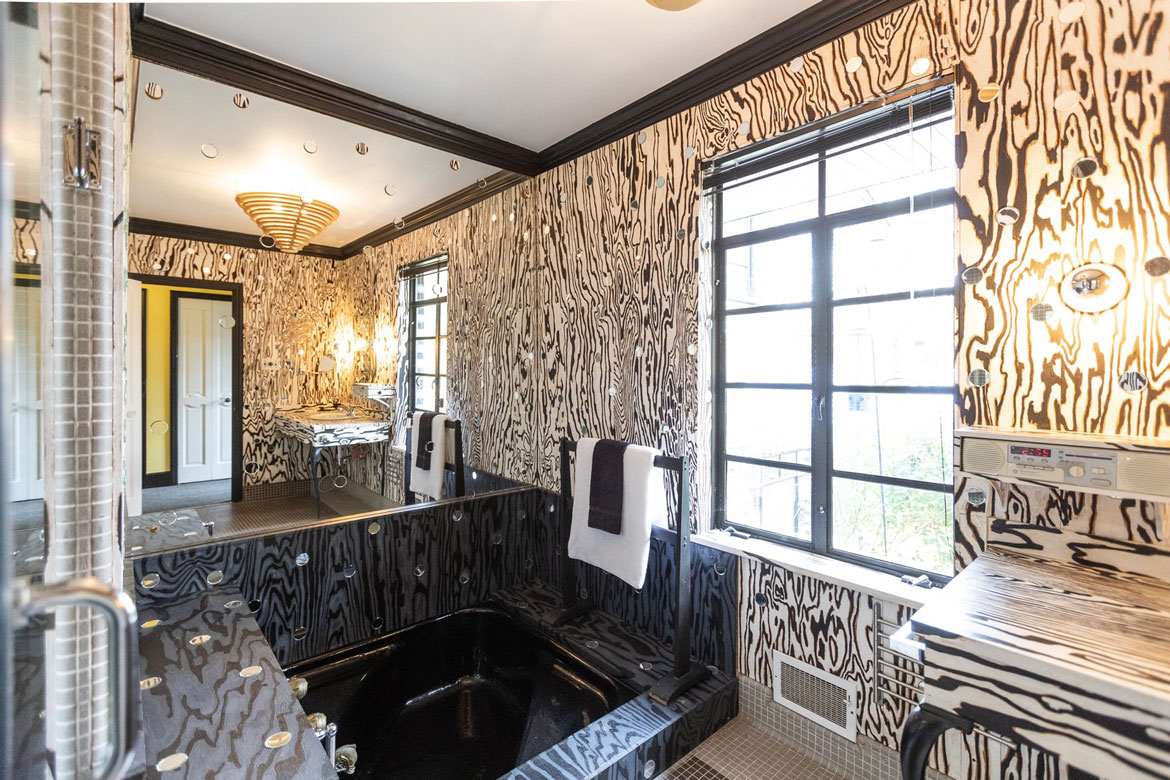
Inside Outside
“There is an inside outside refrain and response that goes on between the inside and outside of the house,” Prekop told the Pittsburgh Post-Gazette in April 2023.
As Prekop got settled into this role of dean at Carnegie Mellon, he began transforming the bathroom off the primary bedroom at the right rear of the house. “That’s the first room I attacked. I covered the walls. I covered everything with painted plywood,” Prekop tells me. He painted the plywood with a black and white faux wood grain, painted freehand following the grain of the wood. And he affixed little polkadot mirrors all over the walls.
The house’s interior was “really, really dark,” Prekop told TribLive in April 2023. He turned it into a custom-designed paradise for an artist and lover of the arts. He added skylights—eventually around two dozen in all—to fill the rooms with natural light. The house became mainly black and white, with accents of red and blue and natural wood. Furnishings included midcentury modern furniture designed by Le Corbusier and Ludwig Mies van der Rohe. The feeling is post-modern, like the flat geometric primary-hued abstractions of early Modernism revisited in a bigger, broader, more playful way, plus mirrors.
There’s a red and white checkerboard pattern on wall next to red and white front door, which opens onto a living room with working fireplace. White polkadots decorate the black railings of a central stairway—the dot motif rhymes with the mirrors and can feel a bit like film strips. The stairs lead up to seating area at the back of the house, with a mirror screen as room divider that connects to walls shelving about 3,000 jazz and classical records and hundreds of CDs. He listens to them via a 1960s vintage Klipschorn and contemporary Magnepan speakers.
An upstairs hallway, lined with picture rails to display art (opposite the laundry room), leads to an upstairs back bedroom on right. One bedroom served for a time as home to Martha’s orchid collection.

A dazzling dining room on front left has a table and chairs painted in black-and-white faux wood grain, that can also bring to mind a zebra. “It uses the organic nature of the plywood to give expression to itself,” Prekop told Pittsburgh magazine in May 2023. A pair of mirrored chandeliers hang over the table. The walls and ceiling, between four skylights, shimmer with rectangles and strips of mirrors.
That dining room connects with the woodshop studio. There’s a photo darkroom in basement. A 12-foot-tall room at rear left of the house (its boxy exterior is now clad in red steel siding) was built as art “staging space” and gallery, where he’s hosted half a dozen exhibits by other artists over the years. Though, he acknowledges that “the stereo has taken over” that room.
Downstairs at back is a library and home theater screening room with a big projection system, two leather seats, and a collection of hundreds DVDs and Blue Rays (he favors The Criterion Collection).
Out back is a deck and a yard with two fish ponds and meadow grass that grows tall.

A Living Piece Of Sculpture
Prekop began covering the house’s exterior with mirrors, “then purchased mirrors from a company going out of business and added mirrors inside,” Prekop told TribLive in April 2023. He made a “simple little jig” to cut 2-inch by 8-inch rectangles from a 12-inch square mirror. “I can cut them so there’s no waste,” he tells me. (Two 2×4 rectangles add up to the size of a brick.) “I put them on the house with double-sided tape and a glob of silicone seal.”
“I saw it as a piece of sculpture, a living piece of sculpture. It changed all the time. I did interventions in the trees—mirror trees, bottle trees,” Prekop tells me. Framed rectangles of blue, yellow, white and red climbed up the trunk of birches like paintings by Dutch artist Piet Mondrian paintings that had broken apart and run loose. (These days the interior is also hung with copies he’s made of “Mondrian paintings to scale out of Formica.”) “A lot of temporary sculpture in the trees and even in the house was to be photographed.”

“My photography practice is focused almost exclusively on projects of the house and around the house, in the backyard,” Prekop told Pittsburgh magazine in May 2023. He photographed the house with an 11×14 negative Deardorff camera that he modified to accommodate a custom 16×20 back that held paper instead of film. Rather than recording film negatives, the camera made prints directly onto the paper, each one unique. The darks and lights are often reversed, as in a film negative, making everything seem strange and radiant. Prekop tells me, “That was the only kind of photographs I did for like 10 years.”
The house sits on an acre and a half of land. For later artworks, he photographed sculptures that he made from rulers, and photographed rulers among the trees in the backyard, and incorporated rulers directly into assemblage paintings. Sometimes arrangements in the Mirror House or the way he exhibits photos (sometimes interspersed with mirrors) can call to mind film strips. His “Interval” paintings from the 2010s painted and cut black and red and white vertical stripes into wood panels. “They are based on the idea of marking time, as in a ruler,” Prekop told Trib Live in 2015. “And also with some concern I’ve had with music and rhythm, repetition and so forth.”
Prekop created a whole room installation painted with faux woodgrain and Adirondack chairs that he called “Prekops At Home” in 2003 for the Pittsburgh Biennial Exhibition at the Pittsburgh Center for the Arts. He tells me, “I built it to represent that house.”

Art And Life Coming Together
Prekop’s Mirror House is about a half-hour drive northwest from downtown Pittsburgh, where one can also find Randyland, a visionary apartment building and yard filled that creator Randy Gilson has filled with assemblage sculptures with the bright hues and sugar rush of a carnival.
“There are people who see this house that way, kind of an eccentric house,” Prekop tells me. Instead he suggests the Mirror House has something of the immersive artist studio, like minimalist sculptor Donald Judd’s spare Manhattan apartment and studio and Judd’s expansive Marfa, Texas, residence and studio. Or Dutch painter Piet Mondrian’s Paris studio in the 1920s, where you seemed to walk into one the flat primary-colored grid abstractions that he painted.
And there’s maybe some kinship with Frank Lloyd Wright’s masterpiece 1937 Fallingwater house, located about a 90-minute drive away in Mill Run, Pennsylvania, known for its iconic cantilevered terraces that seem to float above a stream below.
But Prekop clarifies, “Mine comes from a long interest in Shaker furniture, this idea of art and life coming together.”

Prekop and his current wife Jesha Chen are moving near Bard College at Annandale-on-Hudson, New York, to be near his youngest son, an artist who recently sold a painting to New York’s Museum of Modern Art, and the son’s painter wife and their 2-year-old son, who’ve been priced out of New York City. “I should have done it five years ago,” Prekop says of his planned move.
The sale of the Mirror House puts Prekop’s creation at risk of destruction. “I sort of accept it,” he tells me. “The tree sculptures, they only have a three- or four-year life. They’ve changed over time. The mirrors do fall off. Every spring, after winter, half a dozen fall off.”
Prekop told realtor.com in May 2023, “I don’t expect it to stay exactly the same, but the parts of it like the mirrored components inside the house, I’m hoping they’ll keep that.”
“I don’t expect to miss the house much at all because I have done it and been here 30 years,” Prekop told Pittsburgh Post-Gazette in April 2023. “I am ready to go on to new stuff.”
Prekop resists defining a meaning of the Mirror House. But he allows it’s related to the Shaker merging of art and life into one. Before covid, it was a place to invite students to see what an artist’s home and studio were like. And there’s just the shimmering dazzlingness of the place.
What is it all about? “It’s really obvious once you see it. It’s very physical,” Prekop tells me. “It’s very beautiful when the weather changes.”

Sources:
Interview with Martin Prekop by Greg Cook, May 2023.
Jessica Adamiak, “15 Truly Bizarre Vacation Rentals,” Time, Aug. 5, 2014.
Alan G. Artner, “Prekop Gets Dean’s Post At Mellon,” Chicago Tribune, Aug. 12, 1993.
Nicole Busing and Heiko Klaas, “Martin Prekop: Obfuscation As Strategy,” https://www.nextleveluk.com/article/obfuscation-as-strategy, 2012.
Carnegie Mellon University College of Fine Arts, “Professor of Art Martin Prekop Retiring from CMU After 25 Years,” https://www.cmu.edu/cfa/news-and-events/featured-news/2018/professor-martin-prekop-retiring.html, July 4, 2018.
Rosa Collucci, “The Mirror House is For Sale — Could You See Yourself Living Here?” Pittsburgh magazine, May 1, 2023.
Donna J. Domin, “Reflected Interest,” Trib Live, Dec. 17, 2005.
Ryan Hoffman, “The Mirrored House cited as ‘truly bizarre vacation rental’ by Time,” Next Pittsburgh, Aug. 18, 2014.
Bob Karlovits, “’Truly bizarre’ O’Hara house gives guests lots to reflect on,” Trib Live, Aug. 8, 2014.
Joanne Klimovich Harrop,”O’Hara couple opens their mirrored home for an ‘Airbnb Experience,’” Trib Live, March 11, 2022.
Joanne Klimovich Harrop,“Mirror image: Quirky O’Hara home for sale for $899,000,” Trib Live, April 29, 2023.
Mattress Factory, “RECAP // Factory 500: Martin Prekop’s “Mirrored House,” http://artyoucangetinto.blogspot.com/2016/01/recap-factory-500-martin-prekops.html, Jan. 27, 2016.
Donald Miller, “CMU dean uses whimsical touches with serious intent,” Pittsburgh Post-Gazette, Dec. 26, 1998.
Kurt Shaw,” Art review: ‘Martin Prekop’ at Art Space 616 in Sewickley,” Trib Live, April 22, 2015.
Patricia Sheridan,”Buying Here: Artist’s house of mirrors in O’Hara priced at $899,000,” Pittsburgh Post-Gazette, April 23, 2023.
Tiffani Sherman, “Pittsburgh’s Mirror House Re?ects Artist’s Vision and Has Already Attracted a Buyer,” realtor.com, May 11, 2023.
Jan van der Marck, “Peter Davies, Roger Hendricks and Martin Prekop,” Artforum, December 1970.
If this is the kind of coverage of arts, cultures and activisms you appreciate, please support Wonderland by contributing to Wonderland on Patreon. And sign up for our free, occasional newsletter so that you don’t miss any of our reporting. (All content ©Greg Cook 2023 or the respective creators.)
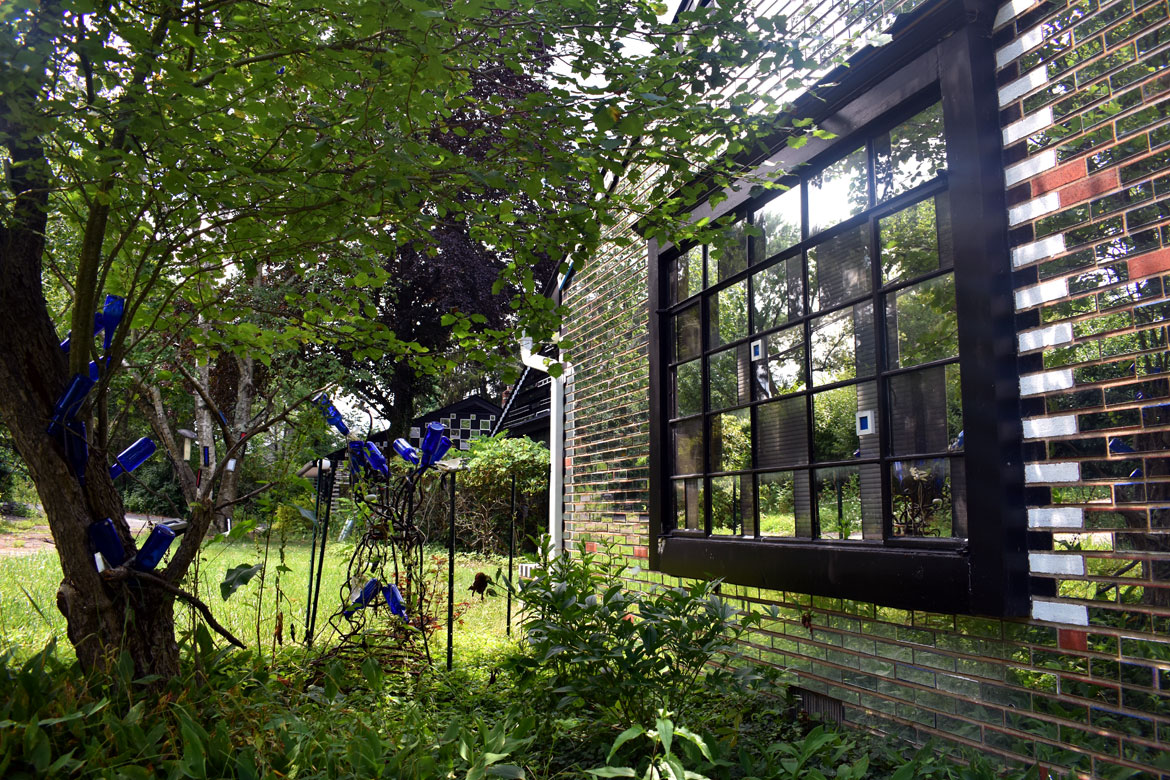
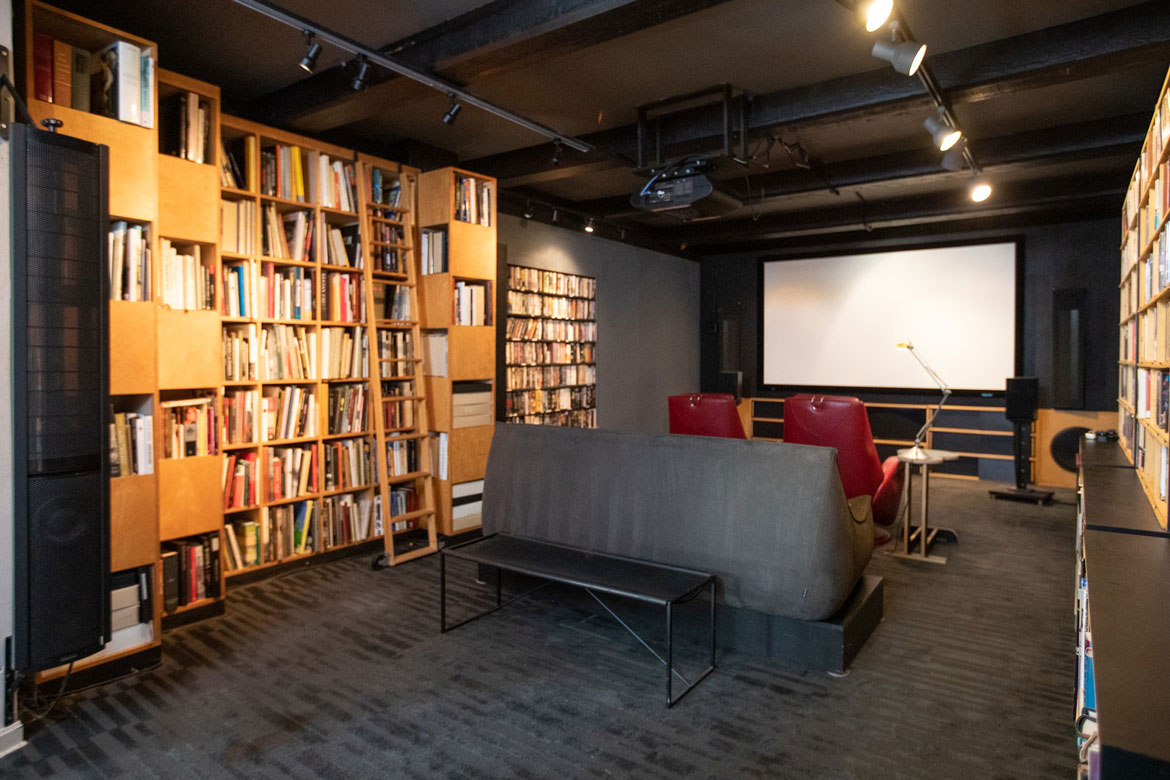



Forgetting How to Be Yourself
SarahMe too, Jason.
For the New Yorker, Louisa Thomas on major league pitcher Daniel Bard, who has struggled with the yips on and off during his career.
Many baseball players have minor control issues at one point or another. Sometimes it happens after an injury, when a player is relearning how to throw, over-attending to discrete motions that used to feel fluid and natural. "Overthinking" is the simple way to put it: the brain's prefrontal cortex trips up the sensory cortex and the motor cortex. In other cases, the mind can essentially go blank. Players usually snap out of it, the way Bard had years before. But the brain can get stuck in certain patterns, and the yips can take over in a way that no one fully understands.
I used to write quite a bit about the sort of practiced autopilot that's necessary to perform at a high level and what happens when the wheels come off the wagon and you start overthinking and second-guessing. From a 2021 post about Simone Biles' case of the twisties:
This phenomenon goes by many names — performance anxiety, stage fright, choking, the yips, cueitis (in snooker), and target panic (for archers) - and the world-class are not immune. Daniel Day-Lewis had stage fright so bad he quit the stage decades ago — an affliction he shared with Laurence Olivier, Barbra Streisand, and Mikhail Baryshnikov. If you've read anything at all about this stuff, Biles' case of the twisties doesn't seem so unusual or mysterious — it's just one of those things that makes her, and the rest of us, human.
Back to Bard, who tried a bunch of different fixes for his pitching problems:
Once Bard acknowledged the problem, he tried every available fix. He met with sports psychologists; he saw a hypnotist; he meditated. He whispered mantras, which he found counterproductive — athletes "don't think in words, we think in shapes, feelings, and visions," he told me. He had a rib removed, to help with the blood-flow problem caused by thoracic-outlet syndrome. He tried different arm slots. Adair posted inspirational messages around their house. At one point, she and Bard drove to a Holiday Inn to meet a woman who used eye-movement therapy to treat soldiers with P.T.S.D. Bard also tried a technique called tapping: you tap your fingers on certain places on your head, in a certain order, to reframe traumatic memories. It didn't work.
I don't know if anyone else has felt like this, but I think I might have the yips — not for a sport but for my life. I feel like I have forgotten how to naturally be myself. My preferences, what I enjoy doing, what I think about certain things, how I feel, how I feel about how I feel — it all feels forced right now, overthinking and second-guessing galore. What Would Jason Do? The hell if I know...but I do know that if you're asking yourself what you would do in a certain situation instead of just doing it, you've already lost.
Like Bard, I've tried a bunch of different things recently to fix this, to seemingly little avail. Perhaps thinking about it as the yips but for my life will help me address it?
Tags: baseball · Daniel Bard · Louisa Thomas · relaxed concentration · sportsSaturday Morning Breakfast Cereal - Gifted

Click here to go see the bonus panel!
Hovertext:
People on patreon seemed to be traumatized by this, and I guess what I'm saying is for a couple bucks a month, you could've been traumatized a day early.
Today's News:
Berlin in 1945
Seven minutes of color film footage of Berlin in 1945, right after the end of World War II. Lots of bombed out buildings, soldiers, bicycles, rebuilding, and people going about their daily business.
Be sure to watch all the way to the end...there's an incredible aerial shot of the Brandenburg Gate and the Unter den Linden that shows the scale of damage done to the city's buildings. More of that aerial footage here. (via devour)
[This was originally posted on May 4, 2015.]
Star Wars by Balenciaga
SarahThis is so weird!
Well this is some bizarre good fun — turns out that the campy goofiness of Star Wars and the campy seriousness of high fashion make for a pretty good combination.
See also Lord of the Rings by Balenciaga and Game of Thrones by Balenciaga. Oh, and Hipster Star Wars.
Tags: artificial intelligence Balenciaga fashion movies remix Star Wars videoDon’t worry about style

1. “Don’t worry about style. It will be expressed no matter what you do. Style is part of the way your brain is wired.”
—Luke Sullivan
2. “I never went out of my way to invent a style. I haven’t got a style — I just draw and it’s that way.”
—Ralph Steadman
3. “The problem with art today: the artist believes he must find a style (or a schtick really) and defend it with his life. And if all the schticks are already taken, he must pull one out of his ass. He must find one, invent one, fabricate one, for he can be nothing if he cannot be original.”
—Eddie Campbell
4. “‘One of the problems for the great modern dancers is that they developed their own style,’ which led to an overuse of the same muscle sets. A body needs balance and, as it ages, different ways to build strength and stamina.”
—Twyla Tharp
5. “Style is a capitalist invention. It’s a trademark. It’s very useful in the world of commerce to have a good trademark, but it wasn’t my first concern. I got restless…”
—Art Spiegelman
6. “Self-plagiarism is style.”
—Alfred Hitchcock
7. “The way to professional accomplishment: you have to demonstrate that you know something unique, that you can repeat, over, and over and over until ultimately you lose interest in it… The model for personal development is antithetical to the model for professional success….Whenever Picasso learned how to do something he abandoned it.”
—Milton Glaser
8. “In our current cult of originality, the pressure is to have a personal style as soon as possible, and the classroom environments often have this mentality as well. Everyone is freaking out: “What’s my style? What’s my thing?” It’s too much too fast. This race for originality has, over the years, spread from that future-goal timeline to just after college to (now) inside college itself. A safety zone no longer exists.”
—Dash Shaw
9. “When I talk to young composers, I tell them, I know that you’re all worried about finding your voice. Actually you’re going to find your voice. By the time you’re 30, you’ll find it. But that’s not the problem. The problem is getting rid of it.”
—Philip Glass
10. “Don’t worry about a style. It will creep up on you and eventually you will have to undo it in order to go further.”
—Gary Panter
11. “Style is selection. These things all exist in the world. We don’t invent anything, but we do look around and go towards the things that connect with something within us.”
—John Patrick Shanley
12. “Artists; you do know, don’t you, That your mistakes are your style.”
—Jerry Saltz
13. “I always think of style as something that’s the distance between what you want something to look like, and what your hand and brain make it look like unintentionally. And there’s quite a gap there, and there’s some interesting stuff in that gap.”
—Daniel Clowes
14. “Originality, personality, or style can neither be encouraged nor prevented. Forget the matter.”
—Lou Harrison
15. “Comments about style sound strange to me. ‘You work in this style or that style.’ As if you had a choice in the matter. What you’re doing is trying to stay alive! And continue! And not die! What you want is an experience of making something that you haven’t seen before.”
—Philip Guston
16. “You heard the style / I think you missed the point”
—Beastie Boys
17. “Punk was not a style of music. It was the state of your mind.”
—Mike Watt
18. “Your style comes out of your attitude — what kind of a person you are, your personality, how you see things.”
—Elmore Leonard
19. “A writer’s personality is his manner of being in the world: his writing style is the unavoidable trace of that manner. When you understand style in these terms, you don’t think of it as merely a matter of fanciful syntax, or as the flamboyant icing atop a plain literary cake, nor as the uncontrollable result of some mysterious velocity coiled within language itself. Rather, you see style as a personal necessity, as the only possible expression of a particular human consciousness. Style is a writer’s way of telling the truth.”
—Zadie Smith
20. “After 40 years, what I came to care about most was not style, but the breath of life.”
—William Maxwell
Let them wear blankets
SarahMaybe not those shoulders, but I am on board!

At the risk of sounding trite, the humble blanket has stepped up as a metaphor of our times and a recurring motif at the AW23 shows. A symbol of post-Covid comfort and tactility as well as warmth (the UK energy crisis continues) and survival (another day, another earthquake), we just can’t be separated from our security blankets.
Styling wise, they appeared as travel accessories in the menswear shows (specifically, Armani’s rolled travel blanket), on blanket influencer Pharrell Williams for his Louis Vuitton announcement photo and Moncler Genius appearance, fashioned into entire coats at Burberry and unfathomably fierce at Saint Laurent (above).
Perhaps most fabulous of all, Saint Laurent’s evening blanket (a tribute to dinner blankets perhaps – remember those?), a sheer, satin-bordered affair draped across skyscraper-esque shoulders and secured with a brooch (below). Sunglasses not optional…

But why wait til next winter? Begg & Co is the Brit fashion pack’s favourite blanket-meisters. They have just joined forces with COS to launch this lambswool and cashmere check blanket – buy it here*.
WORDS: Disneyrollergirl / Navaz Batliwalla
IMAGES: Saint Laurent AW23
NOTE: Most images are digitally enhanced. Some posts use affiliate links* and PR samples. Please read my privacy and cookies policy here
CLICK HERE to get Disneyrollergirl blog posts straight to your inbox once a week
CLICK HERE to buy my book, The New Garconne: How to be a Modern Gentlewoman
CLICK HERE to buy my beauty book, Face Values: The New Beauty Rituals and Skincare
How Travel Inspired Betye Saar’s Magical Art
In 1968, Betye Saar embodied her growing interest in ritual and ancestral traditions in “Africa,” one of her first assembles. It’s a small wooden box that hinges open to reveal a photo of a Black tribal figure (she was then often using images from National Geographic magazine), buttons, striped Kente fabric, mirrors, a spine bone, brown fur, and a toy circus elephant split in two. The artist seems to be reaching out for connection to a place she’s not yet been.
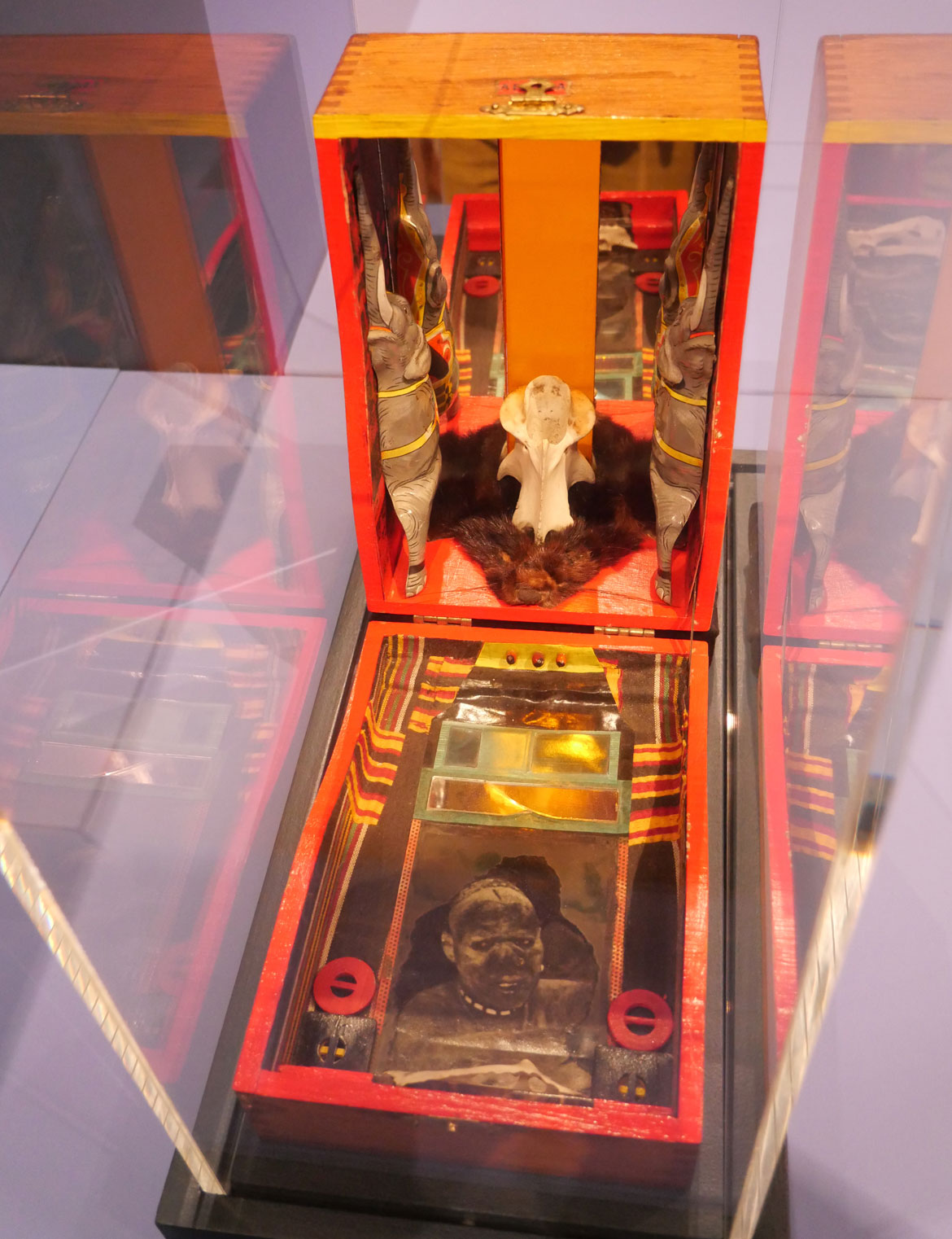
“Sometimes I feel like a medium, the connection between the material and the message. Sometimes, the message is the secrets of Africa, Egypt, Oceania, or the limbo of before birth / after death,” Saar wrote in a 1975 artist statement. “…Sometimes the message charts of strange rituals or whispers of faded memories.”
The dazzling exhibition “Betye Saar: Heart of a Wanderer” at Boston’s Isabella Stewart Gardner Museum from Feb. 16 to May 21, 2023, explores how world travels have inspired the Los Angeles artist’s work—from the sketchbooks she made while on the road to the iconic, magical assemblages that she put together upon her return home.
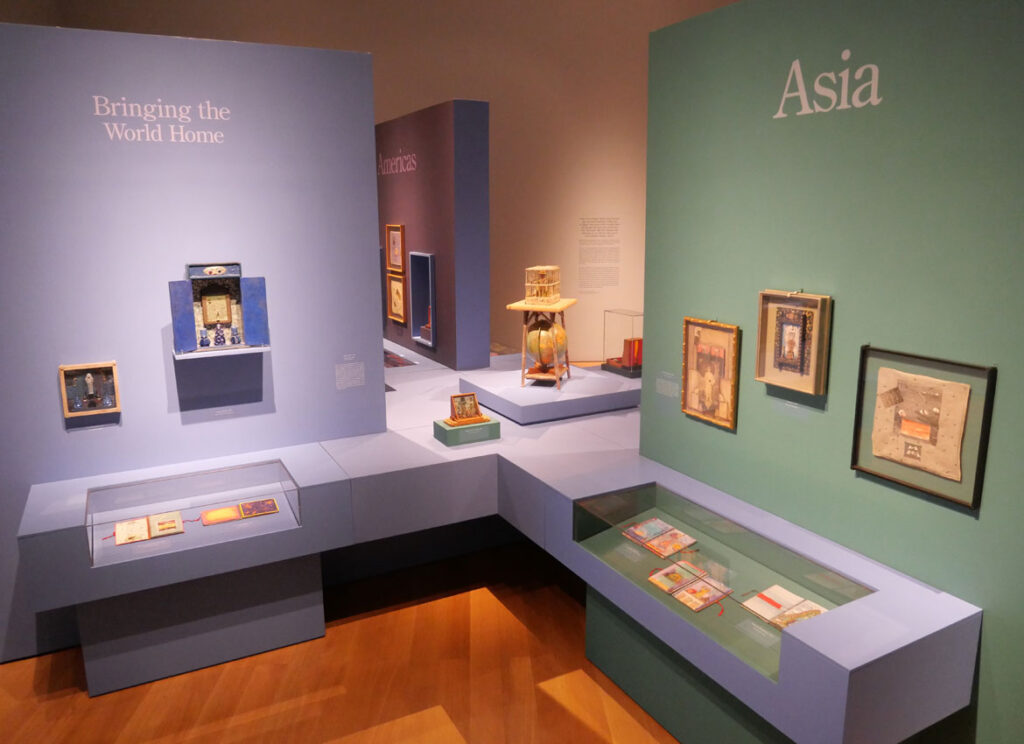
Saar traveled to Europe and Morocco in 1968, then she began to travel widely in the 1970s, when she was in her 40s and her three daughters were adolescents, old enough to be without her for a while. Art fellowships and awards often funded her passage.
Saar’s early travels seem to parallel the Black Arts Movement and Black Power civil rights movement’s searching for the ancestral and spiritual roots of the African diaspora. She visited Haiti in 1974 and ’78, Mexico in 1975, Nigeria in 1978. “I was really interested in going to Haiti because I had never really been to an all-Black country,” Saar told Gardner exhibition curator Diana Seave Greenwald in 2021. Saar went on to visit Taiwan, Japan, Egypt, Bali, Brazil. “To date,” the museum says, “she has visited 32 countries.”
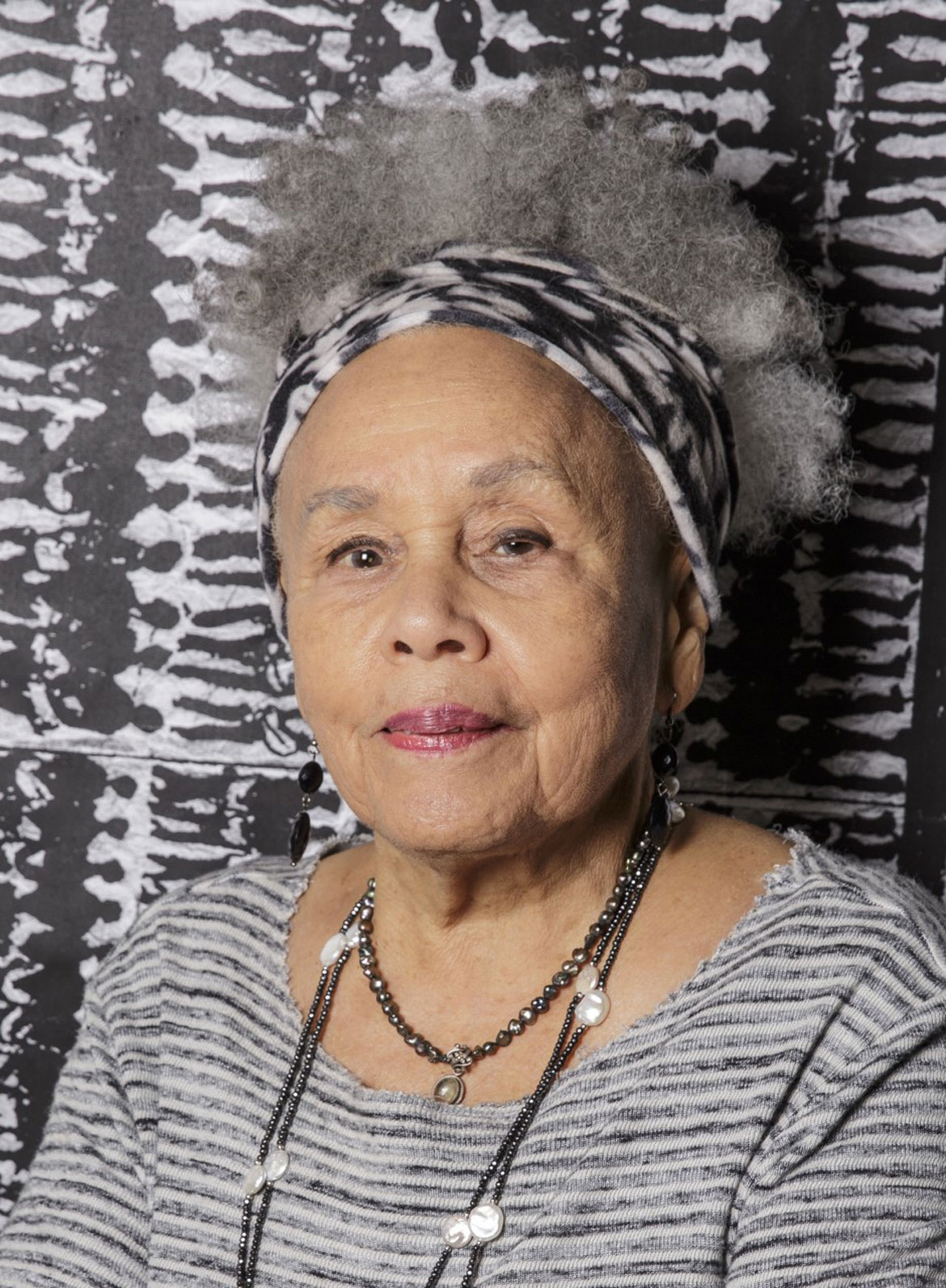
Betye Saar was born in Los Angeles in 1926, her father a Black man from Louisiana, her mother a white woman from Iowa. Her family moved to Pasadena in the early 1930s. She watched Italian immigrant Simon Rodia constructing his 100-foot-tall Watts Towers near her grandmother’s house, like soaring mosaiced church steeples hand-made from glass, pottery, tile, concrete and steel between 1921 and 1954—an inspiration she would carry with her through her life. She studied design at Pasadena City College and the University of California at Los Angeles, graduating in 1949. She founded a design and jewelry firm, married in 1952 and bore three daughters. She studied printmaking at California State University at Long Beach in 1959. The family moved to Laurel Canyon in 1962, where she still lives and works.
Saar made etchings and screenprints in the early 1960s of galloping horses, women and unicorns, pregnant mothers, tarot cards. Around 1966, her art shifted to assemblage. California then was a hotbed of assemblage art that was by turns visionary and politically-engaged—including by Edward Kienholz, Wallace Berman, George Herms and especially the Black artists John Ouftterbridge, Noah Purifoy, Melvin Edwards and Ed Bereal. Purifoy and Judson Powell organized a 1966 exhibition at the Watts Towers Arts Center of art made from the wood, metal and other rubble from the 1965 Watts Uprising. Saar was also inspired by the retrospective of Joseph Cornell’s dreamy surreal assemblages at the Pasadena Art Museum in 1967.
Saar’s early assemblages featured occult imagery—astrology, tarot, palmistry, phrenology, suns, moons, stars. She collected materials to use at LA swap meets and flea markets—and later during her travels. She incorporated family photos, jewelry and fabrics.
Then in groundbreaking and hugely influential artworks, Saar began reclaiming the racist Aunt Jemima pancake mix advertising icon. In “The Liberation of Aunt Jemima,” a small, powerful 1972 shadowbox (not on view here), Saar took a 1930s plastic mammy memo and pencil holder and added a little rifle and Black Power fist, turning the enslaved nanny into a freedom fighter. “My intent was to transform a negative, demeaning figure into a positive, empowered woman … a warrior ready to combat servitude and racism,” Saar said in 1998 (as quoted in the catalog for her 2005 retrospective “Extending the Frozen Moment”).
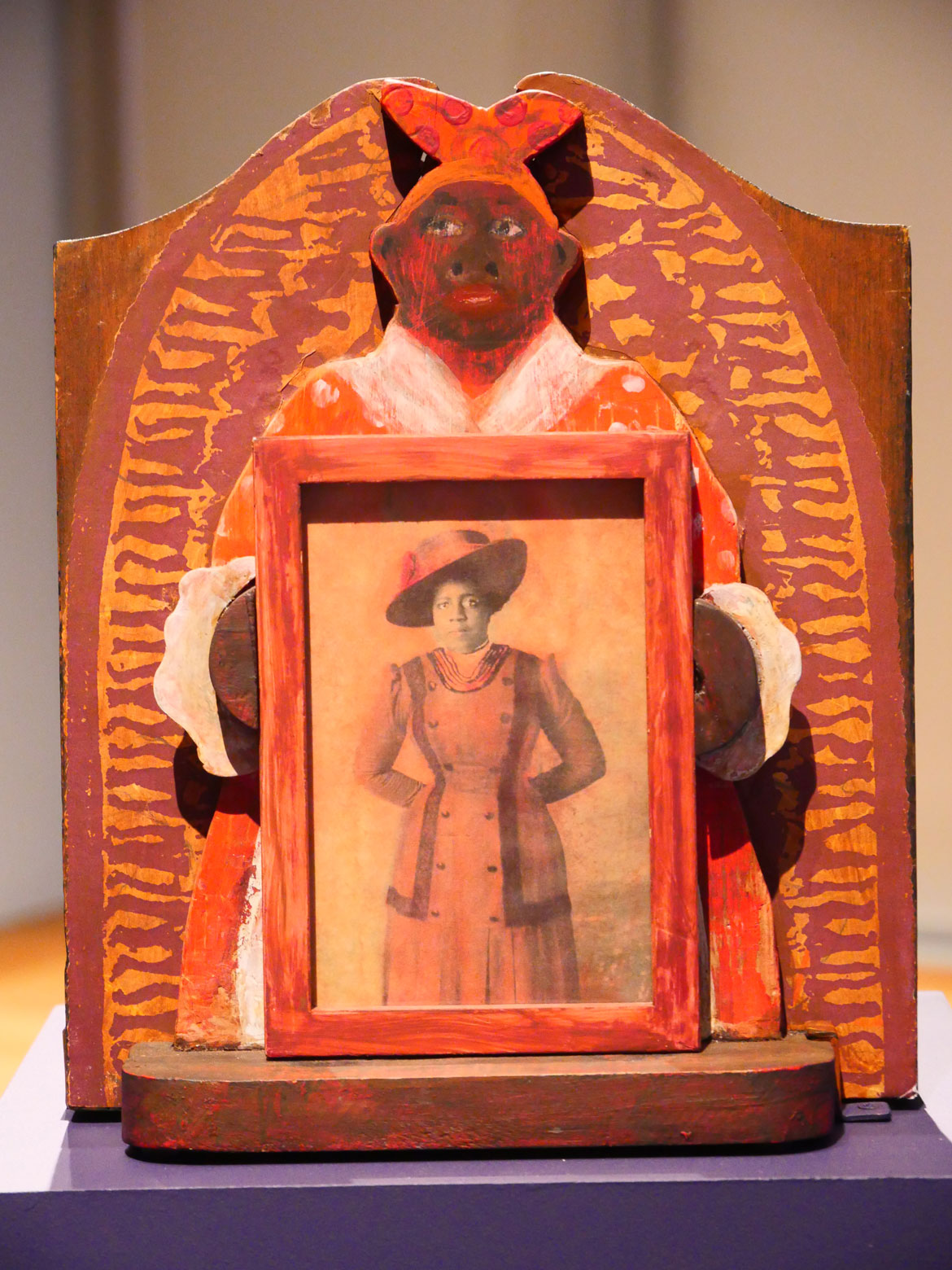
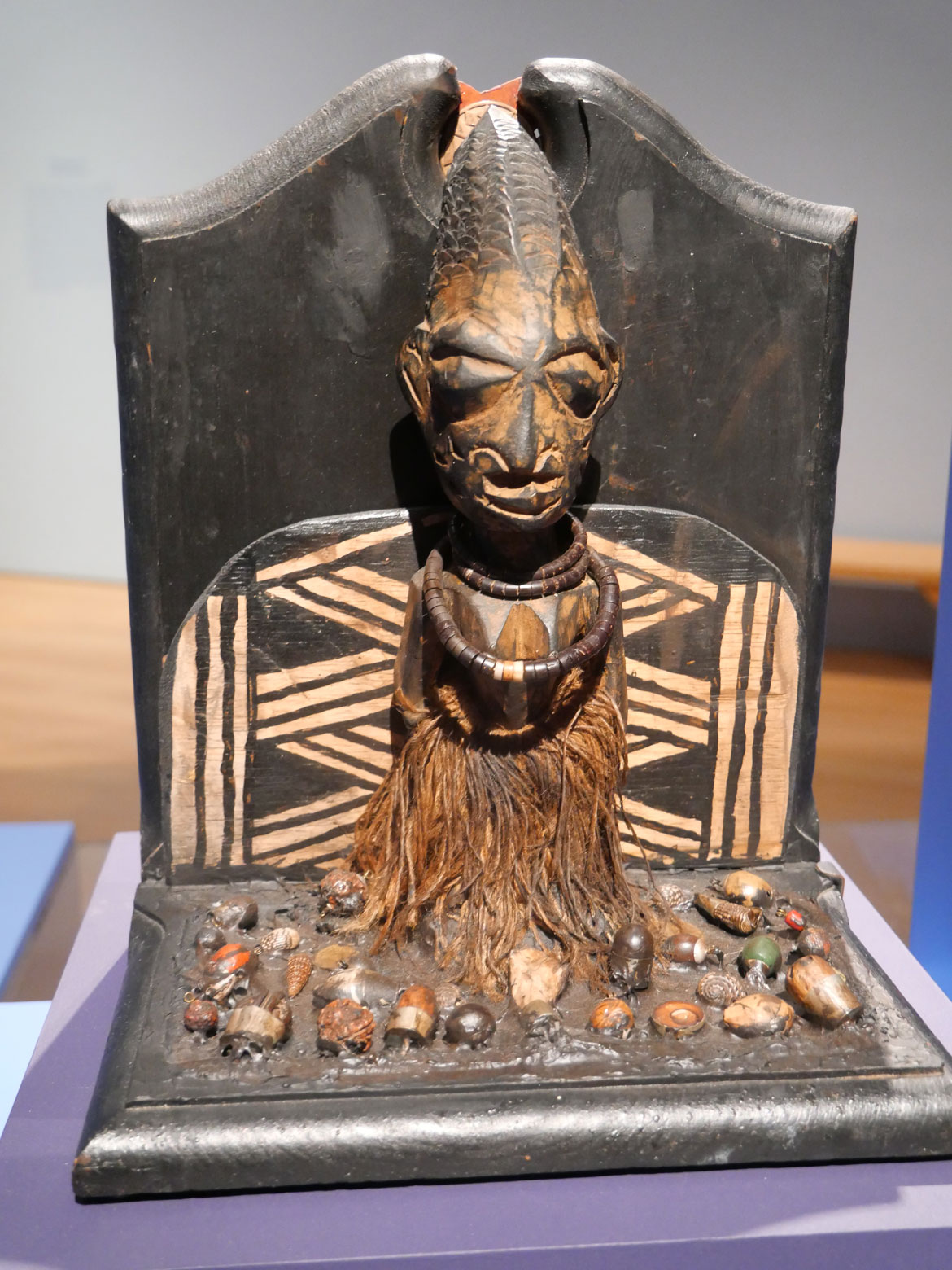
The Gardner exhibition includes Saar’s 2006 assemblage “Migration: Africa to America II.” On one side is a traditional carved African figure. On the reverse is a painted Aunt Jemima holding a vintage photo of an elegant Black woman in a broad-brimmed hat and early 20th century dress. A faded slave ship diagram appears behind them. It feels like a history of African roots, enslavement, liberation, continued oppression.
“My purpose in creating these works is to remind us about the struggle of African Americans and to reclaim the humiliating images of how these workers were once portrayed,” Saar told Jane Carpenter in 2003. “I feel that, however painful, there is honor in re-presenting the past. Racism should neither be ignored or satirized, as it is a form of bondage for everyone, regardless of color. Racism cannot be conquered until it is confronted.”
While in Chicago with the artist David Hammons for the National Conference of Artists in 1970, Saar visited Chicago’s Field Museum of Natural History. “That’s when my work turned from European mysticism to third-world mysticism,” Saar told Carol Eliel, curator of the 2019 exhibition “Betye Saar: Call and Response” at the Los Angeles County Museum of Art, in 2018. “Before I was using symbols that were more Eurocentric. But when I went to the Field Museum, in the basement they had all this work from Africa, Oceania, and even China and Japan—everything that wasn’t European, which was displayed nicely upstairs. All this other strange stuff was down in the basement . We were the only people there, down in this basement with this weird, fetish, magic stuff.” (Note: “Extending the Frozen Moment” and the 2011 exhibition “Now Dig This: Art & Black Los Angeles 1960-1980” place this trip at 1970, the Gardner exhibition puts the trip in 1974, and Eliel dates the visit to 1964.)
Back home in Los Angeles afterward, Saar collected similar materials to use in her work—“leather, hair, shells, bones.” She wanted her assemblages to embody “a Black or African American consciousness or awareness, and recycling it into art form,” Saar told Eliel in 2018.
Saar’s inspirations came to include folk art, visionary art and yard shows, bottle trees and shrines, African-American culture, Haitian Vodou, the Watts Towers, the midcentury California assemblage art movement, Byzantine reliquaries, the Black Arts Movement, the Black Power civil rights movement that arose after the assassination of Martin Luther King Jr. in 1968, and feminism (she participated in the groundbreaking cooperative Womanspace gallery with Judy Chicago and others).
Saar’s art sketchbooks are typically working objects, spiral-bound books filled with schematic diagrams jotted in ballpoint pen to plan out the art ideas inspired by the materials she’s found. “Which comes first, the sketch or the object? It’s the object. The object comes first,” Saar told Eliel in 2018. “I start with the found object and transform it, making it into something different, changing the idea of its use into an emotion or a feeling.”


But on her trips abroad, Saar made travel sketchbooks and scrapbooks, begun on the road and often finished in her LA studio. In these books, collages, drawings and paintings are worked up into stand-alone artworks. During her 1974 trip to Haiti, for example, which is included in the Gardner exhibition, Saar filled the sketchbook she carried with images of crosses, feathers, moon and suns, tourist stamps, the Citadelle Laferrière, stamps featuring President M. Jean-Claude Duvalier, playing cards, rainbows. sacred hearts, a scrap of paper reading “Hoodoo Creek.”
“Her finished assemblages,” a Gardner exhibition sign says, “speak more to her fascination with Haitian Vodou, a religion that combines elements of West and Central African religions and Catholicism. Her trips throughout the Americas deepened her interest in hybrid religions—from Vodou to Santéria—that have their origins in communities of enslaved people who were forcibly transported from West and Central Africa to the Americas.”
“Whenever I travel, I like to go to the shrines, or relics of shrines. A lot of things have been taken away, but there’s always some place that carries materials from the alternative religion…like the botánicas, or [other stores] that are connected with alternative spirituality, Vodou and things like that,” the Gardner museum quotes Saar.
Saar’s assemblages are powered by alchemical combinations of found beads, perfume jars, masks, clocks, chains, pocket knives, wind-up toys, bells, statues of birds and faces and Buddhas. She often incorporates bird cages that evoke slavery, prison, whats in our minds, caged birds, escape, freedom.
Saar skillfully uses the the stagecraft of shrines and altars—the central focus, objects that seem freighted with the past and a feeling of the ancestors, mysterious and perhaps symbolic resonances between the objects, the hierarchy of objects from little to big, the use of mirrors and glass and rich colors to make the artworks visually dazzle, the motif of eyes that feel as if they’re watching us. The modest scale of her assemblages often make them feel like the altars found in homes or shops, small, personal, intimate holy spaces flashing with energy amidst the jumble of everyday life.
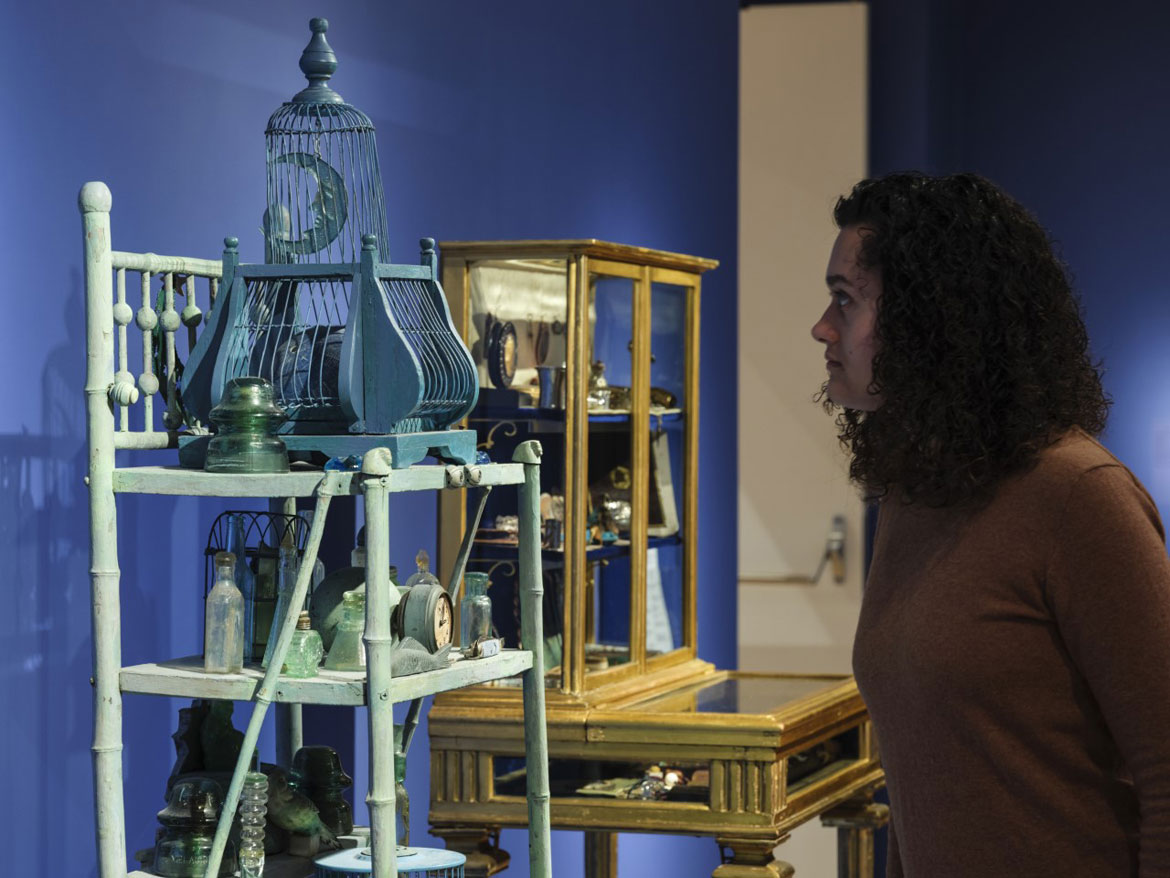
Attending the Second World Black and African Festival of Arts and Culture in Lagos, Nigeria, in 1977, inspired Saar to regularly incorporate “the names of African spirits and images of African masks in her work,” an exhibit sign explains.
Saar was inspired by “widespread Buddhist practice of bringing offerings to local temples and shrines,” the museum says, during her U.S. State Department supported 1988 tour of East and Southeast Asia, including Malaysia. She sent home boxes of materials for her art. Recalling this trip, she told Greenwald in 2021, “I love to get off of a plane at a place and I don’t understand the language you’re speaking. I don’t understand why they dress that way. … As soon as you get off … you would just right away be in an entirely different situation.”
A 1994 artist residency in a villa in Bellagio, Italy, drew her “to the mystical, evocative pageantry of Catholic ritual,” the museum says.
During a 2000 trip to Egypt, Saar told Greenwald in 2021, “One of the things that I found interesting was how important Nubia [present-day Sudan] was to Egypt. And most of the people there [in Egypt] had dark skin and kinky hair. You know, like the Nubians did. And now, in our history, they never even mention Nubia. … Wow. Racism is something.”
Her adventures fueled her art. “Spirituality means different things to different people, but it’s the feeling that I’m after,” Saar said in 1994. “The feeling that when you look at something that I do…that you feel different, or…curious about something that is unknown in your own self.”
If this is the kind of coverage of arts, cultures and activisms you appreciate, please support Wonderland by contributing to Wonderland on Patreon. And sign up for our free, occasional newsletter so that you don’t miss any of our reporting. (All content ©Greg Cook 2023 or the respective creators.)
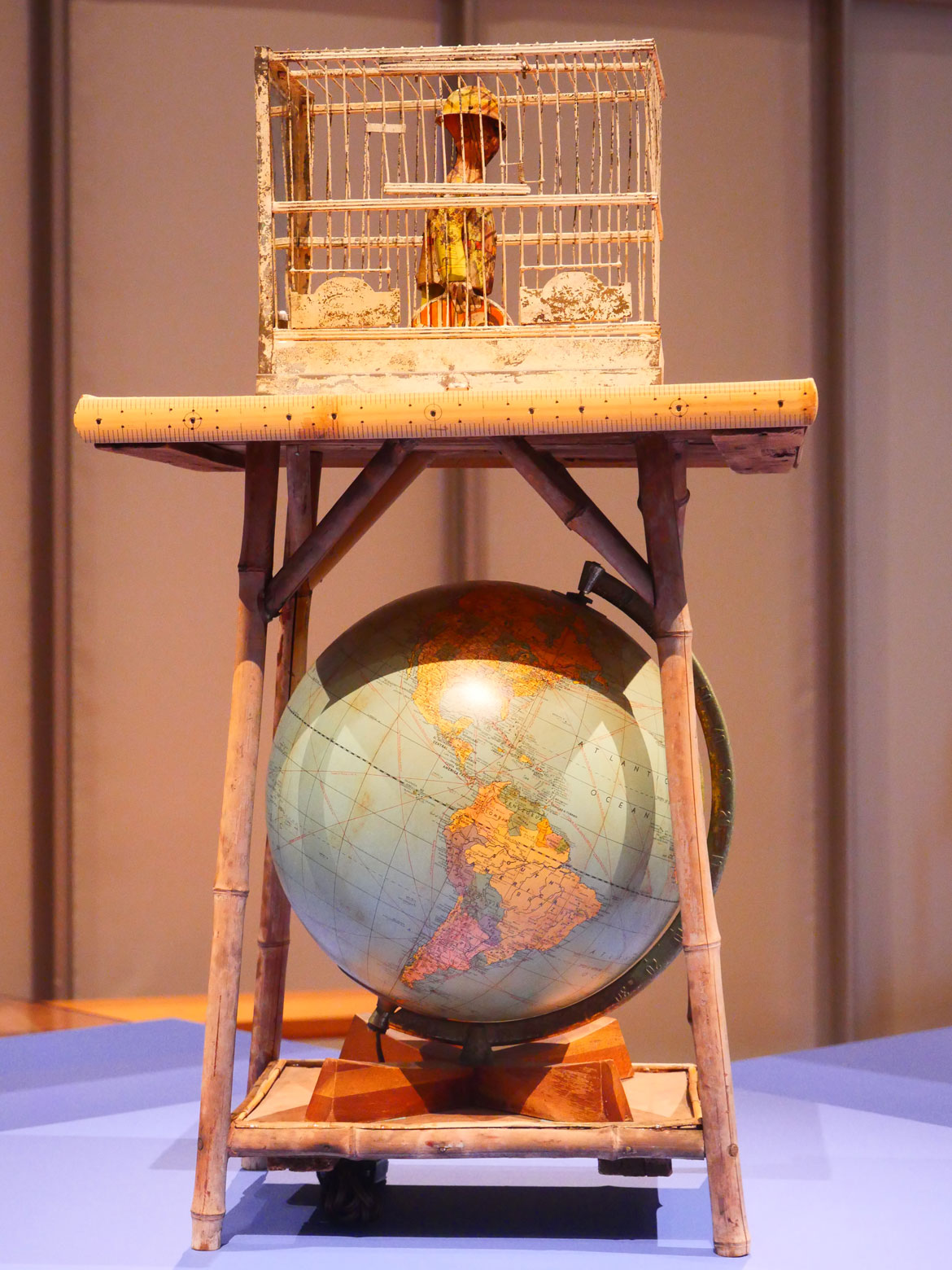
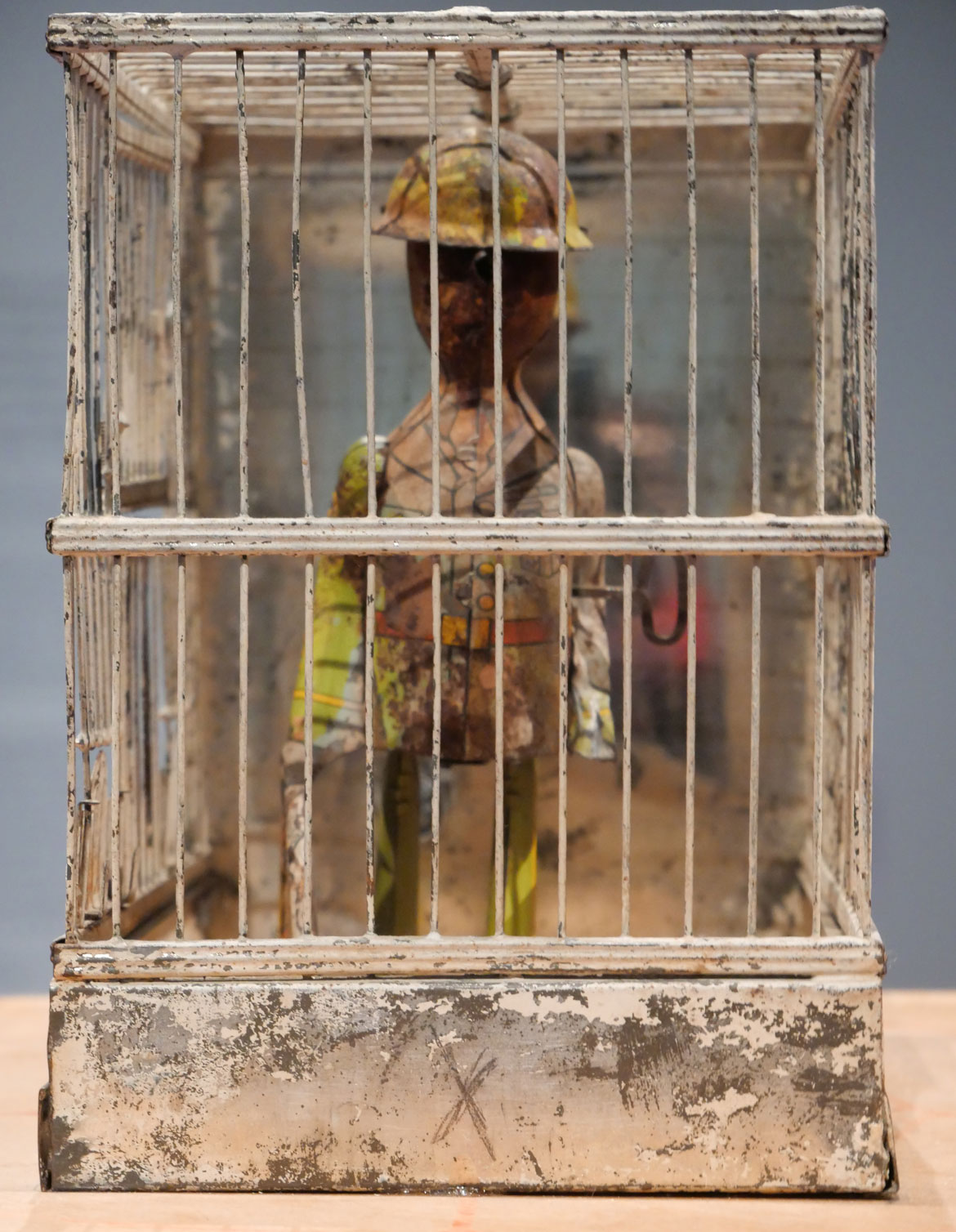
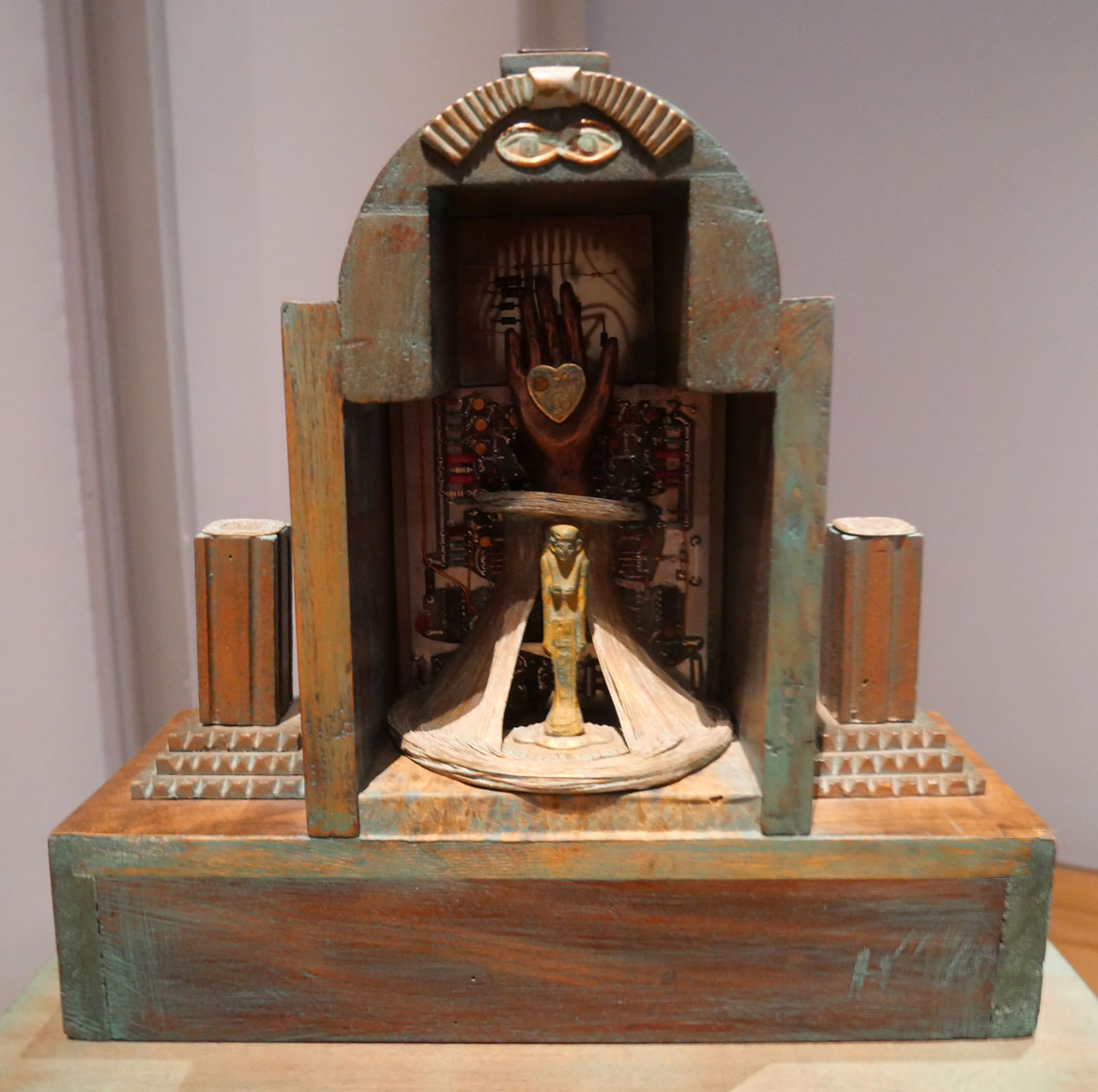
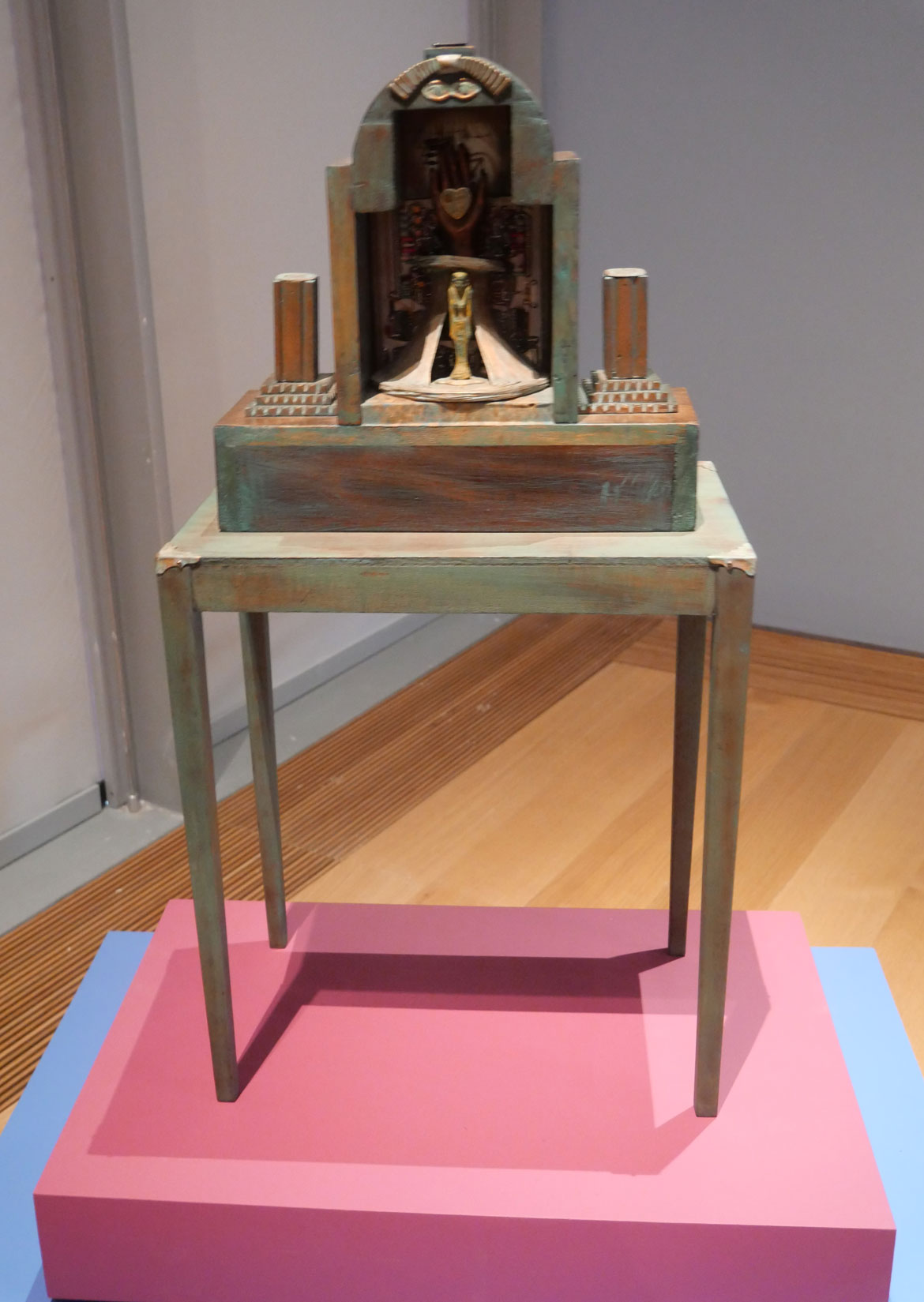
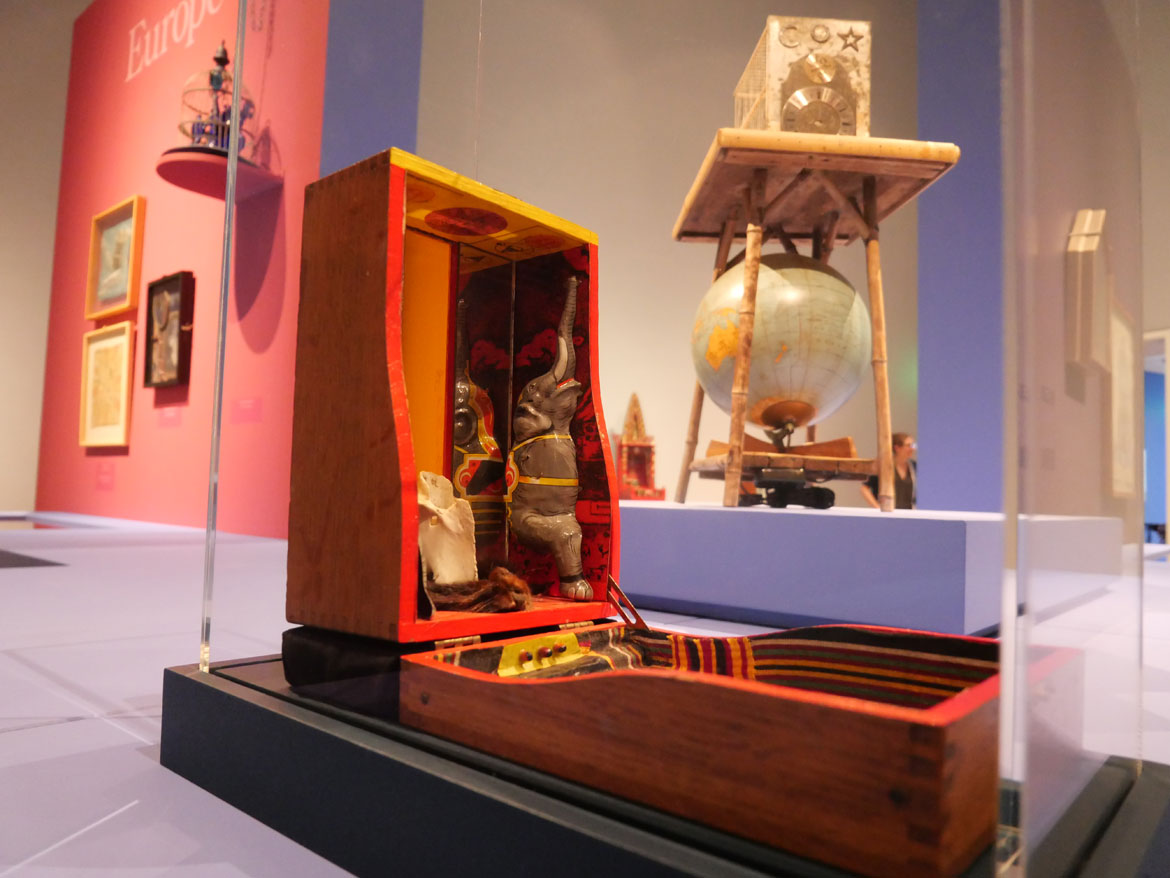
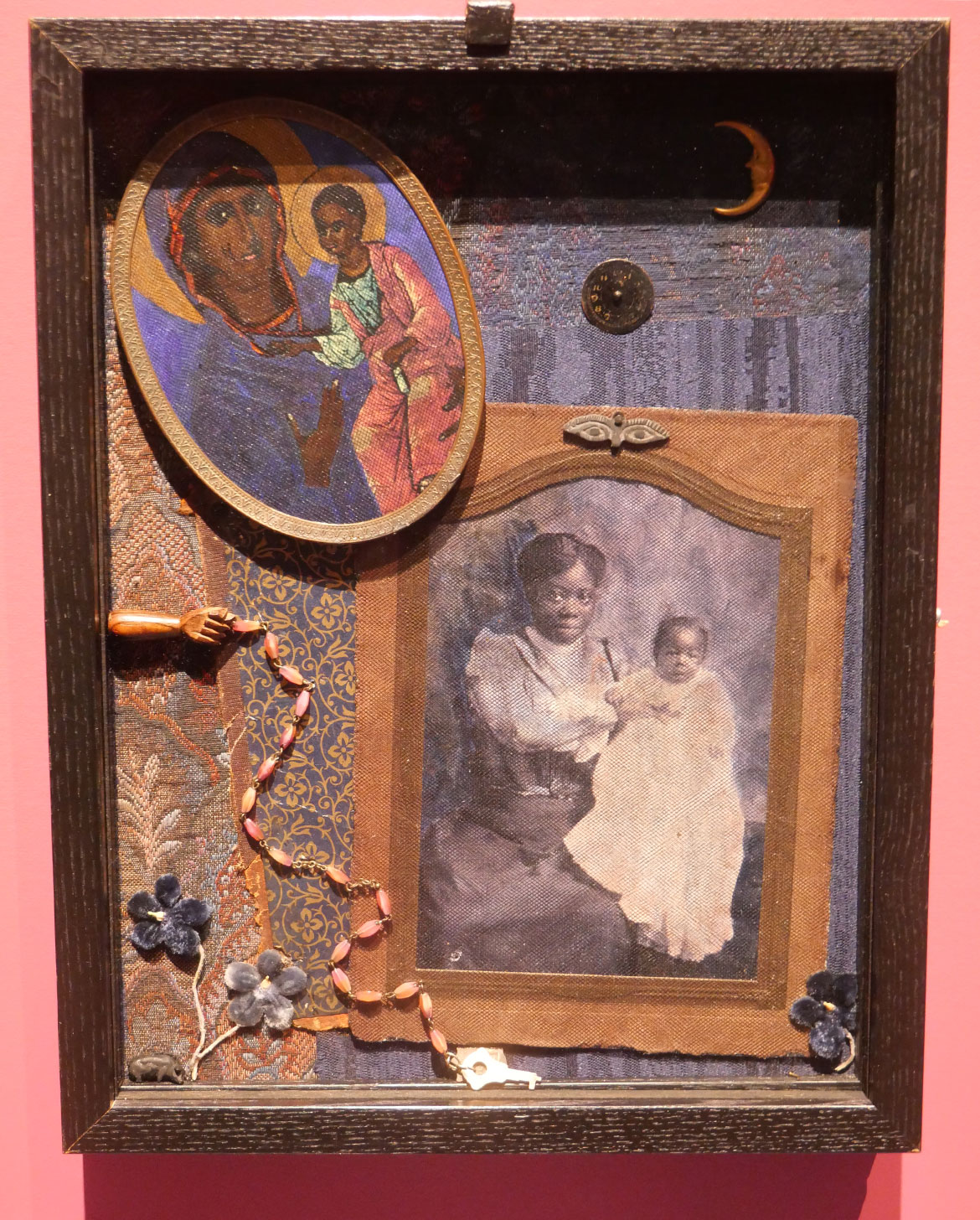
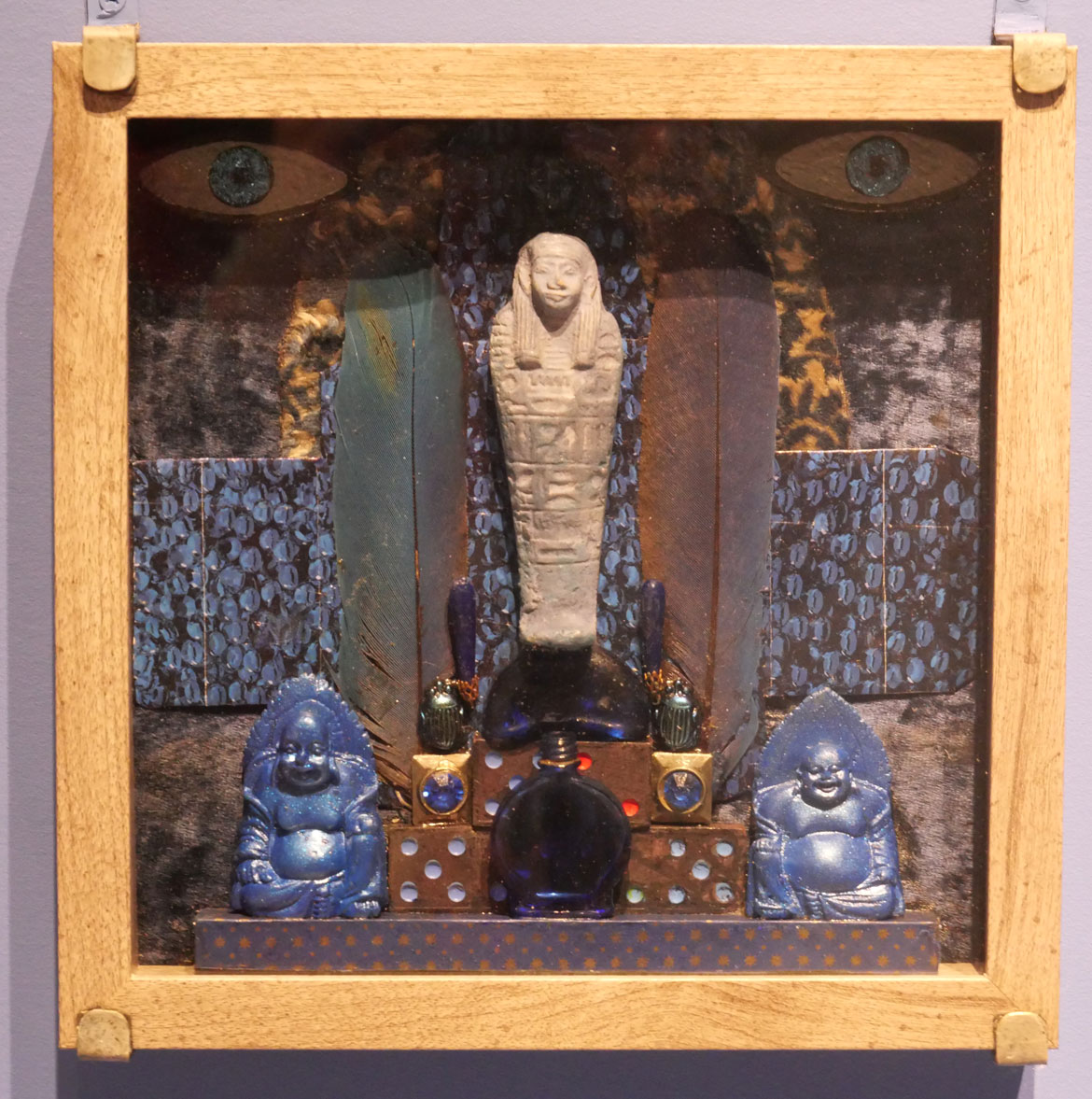
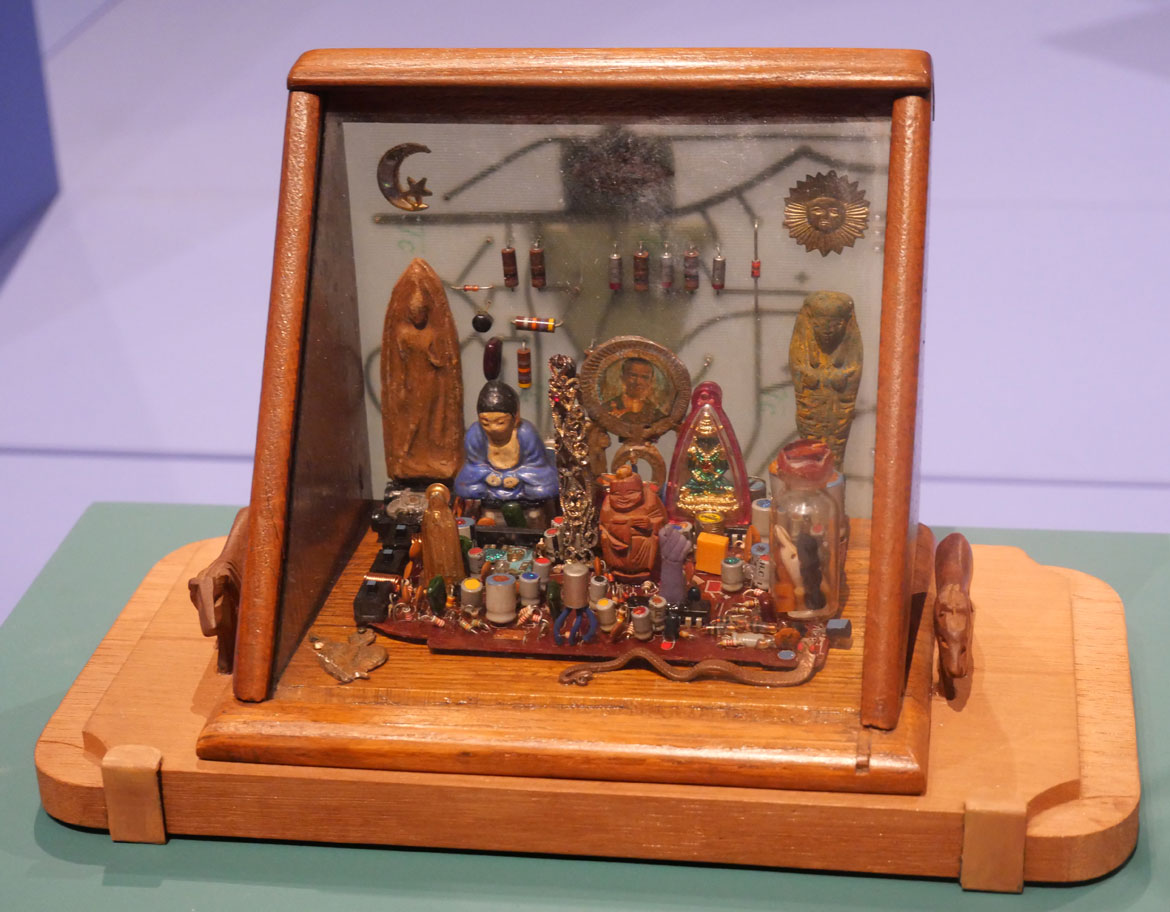
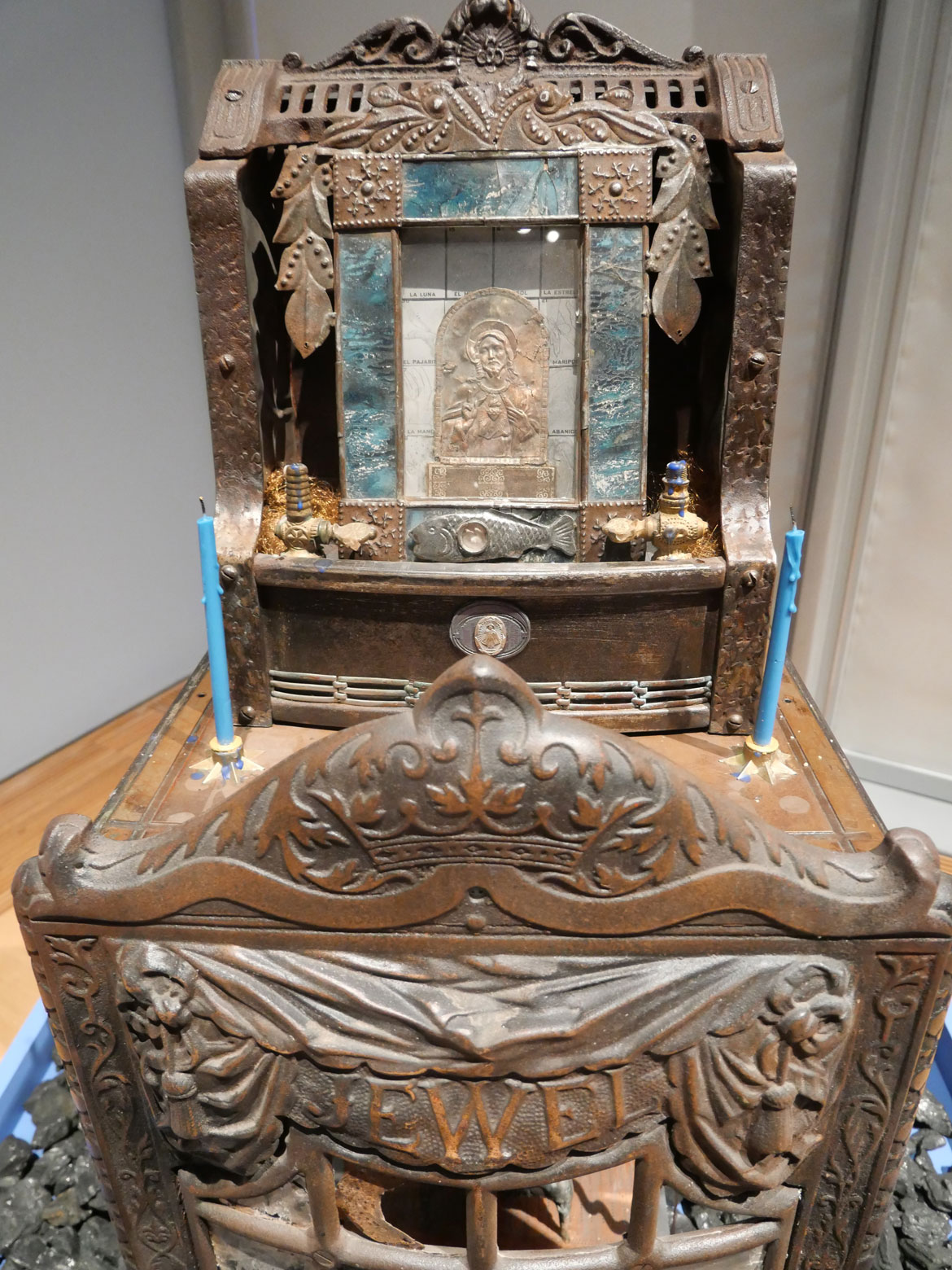
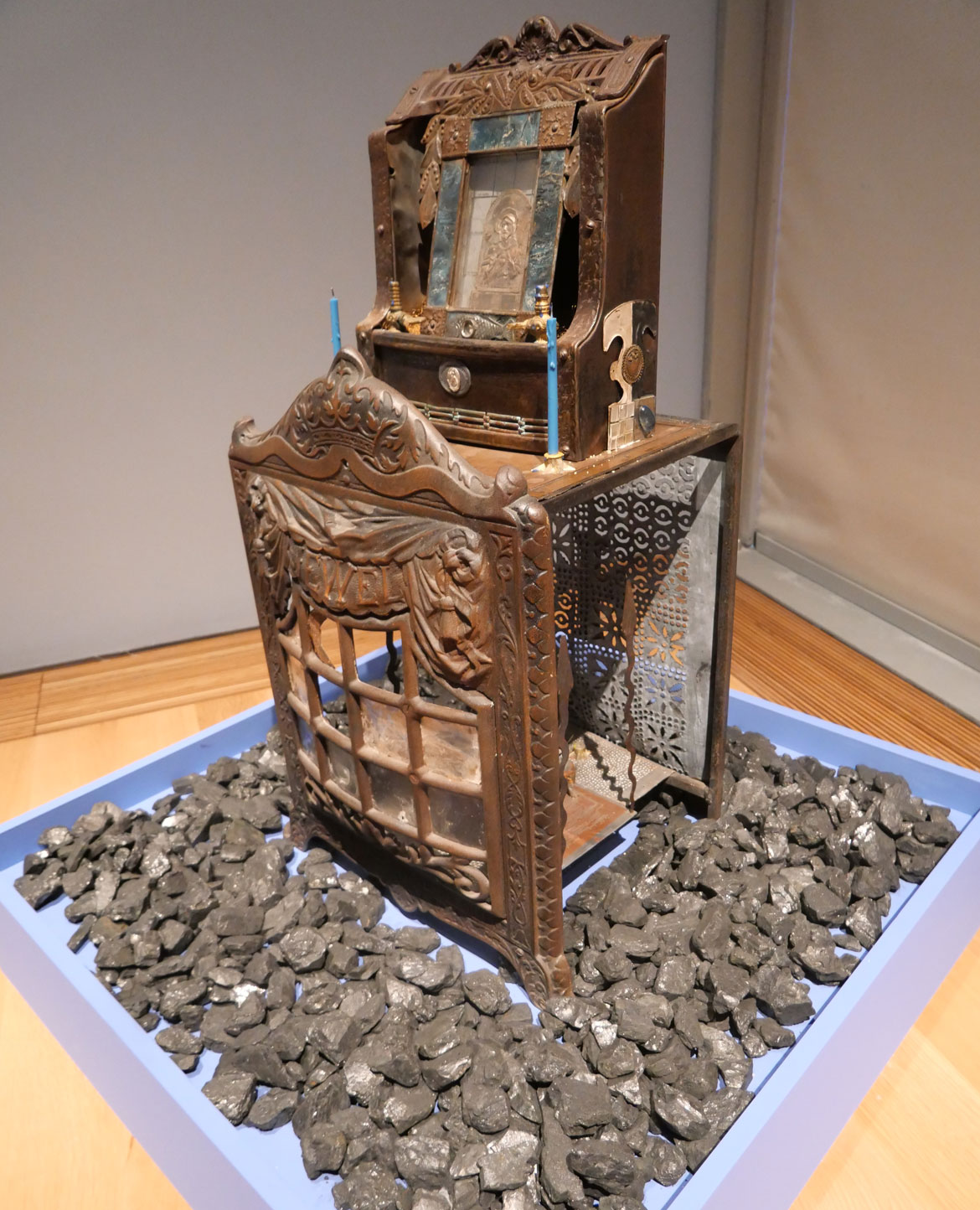
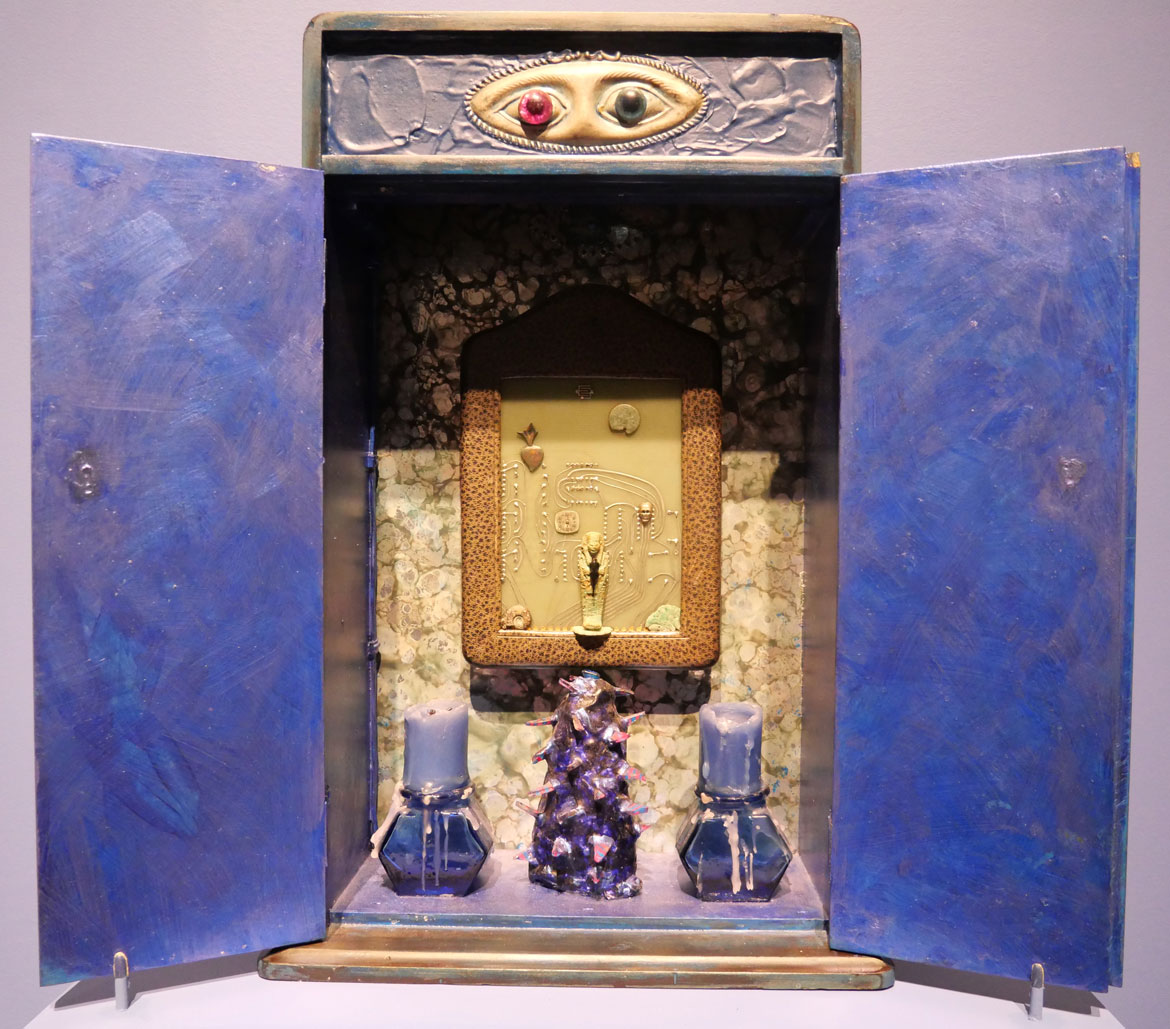
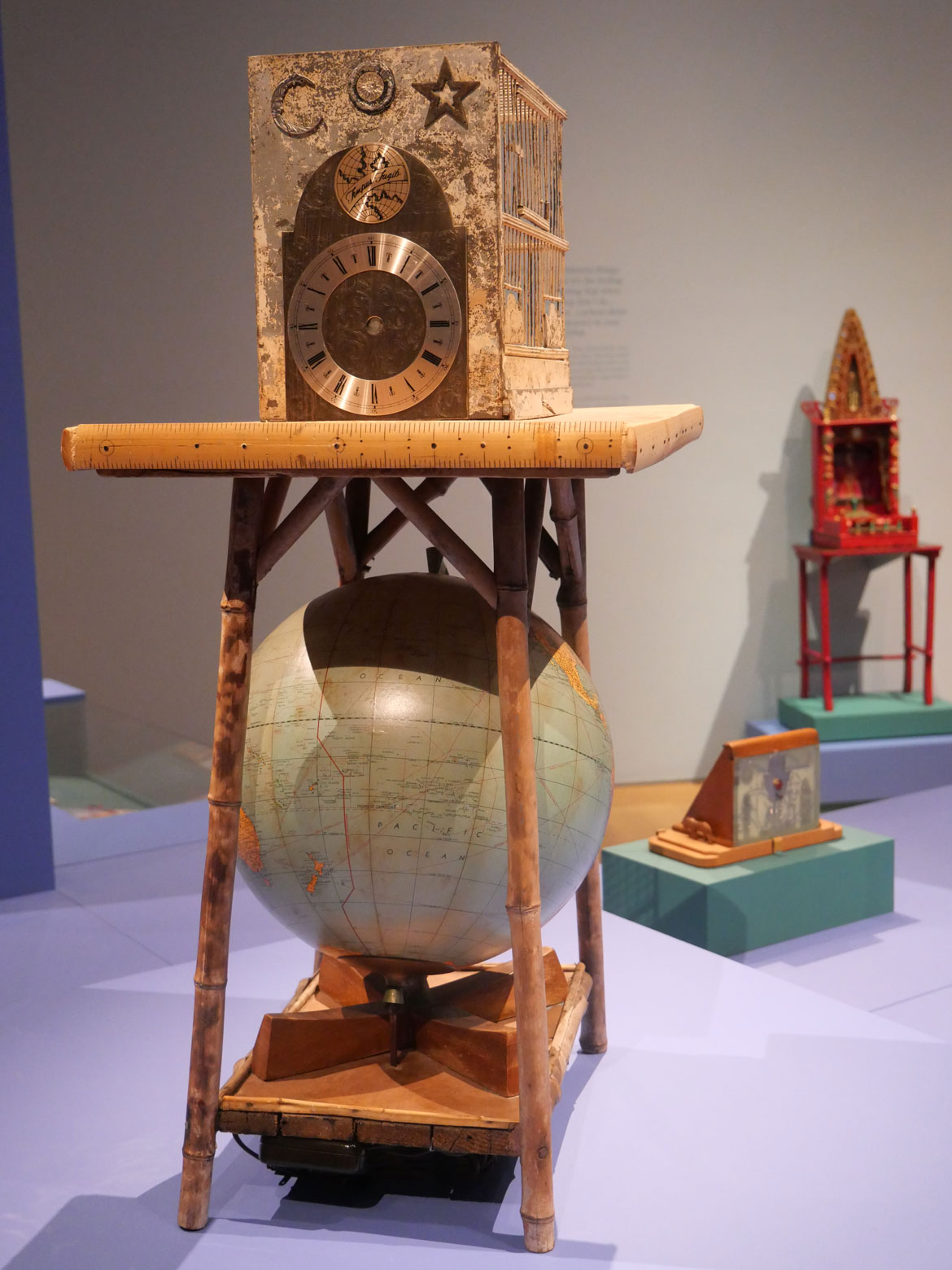
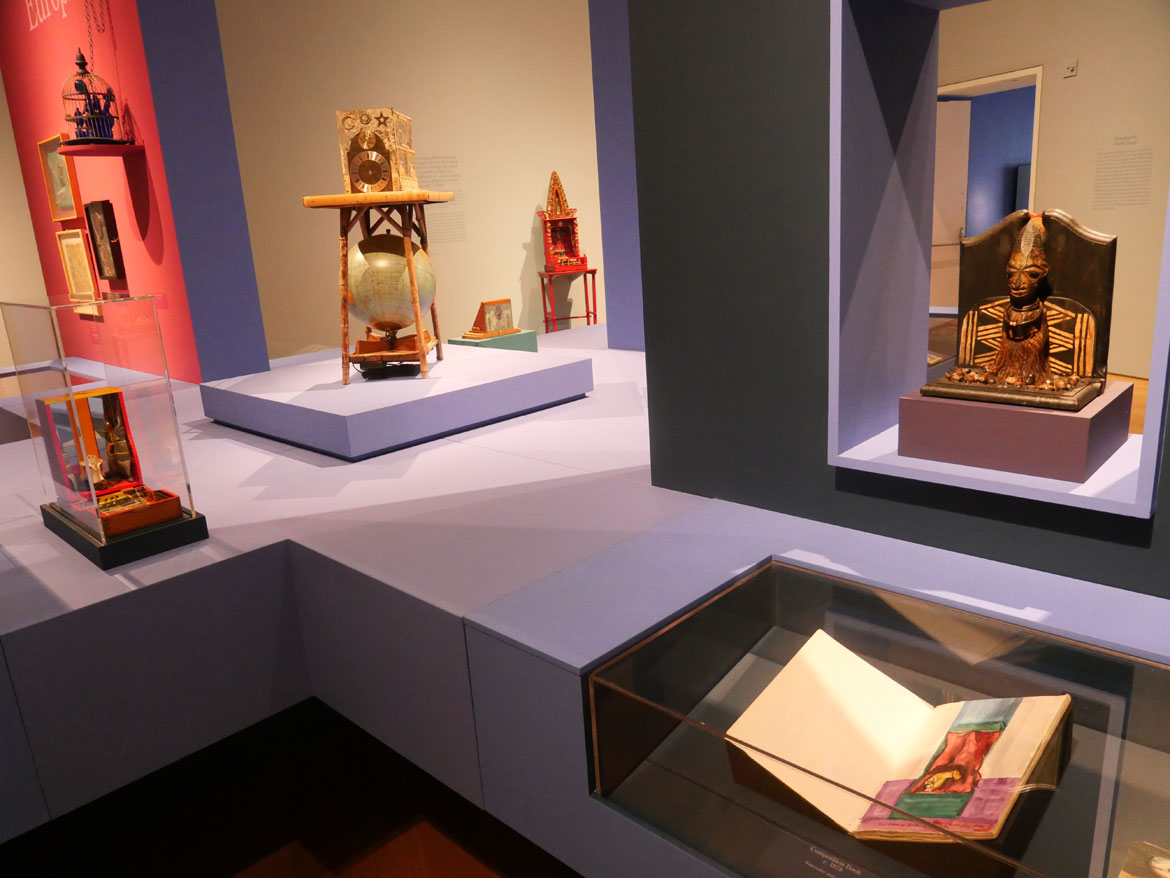

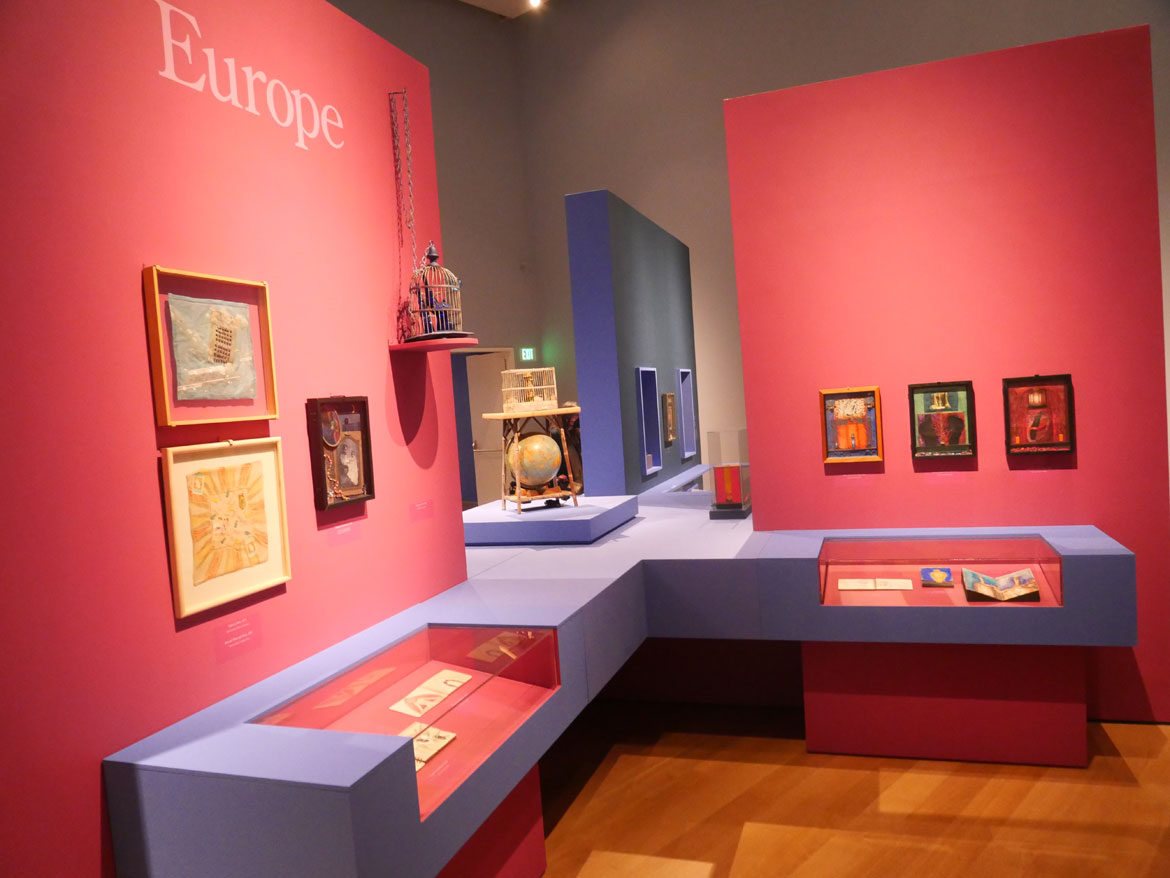
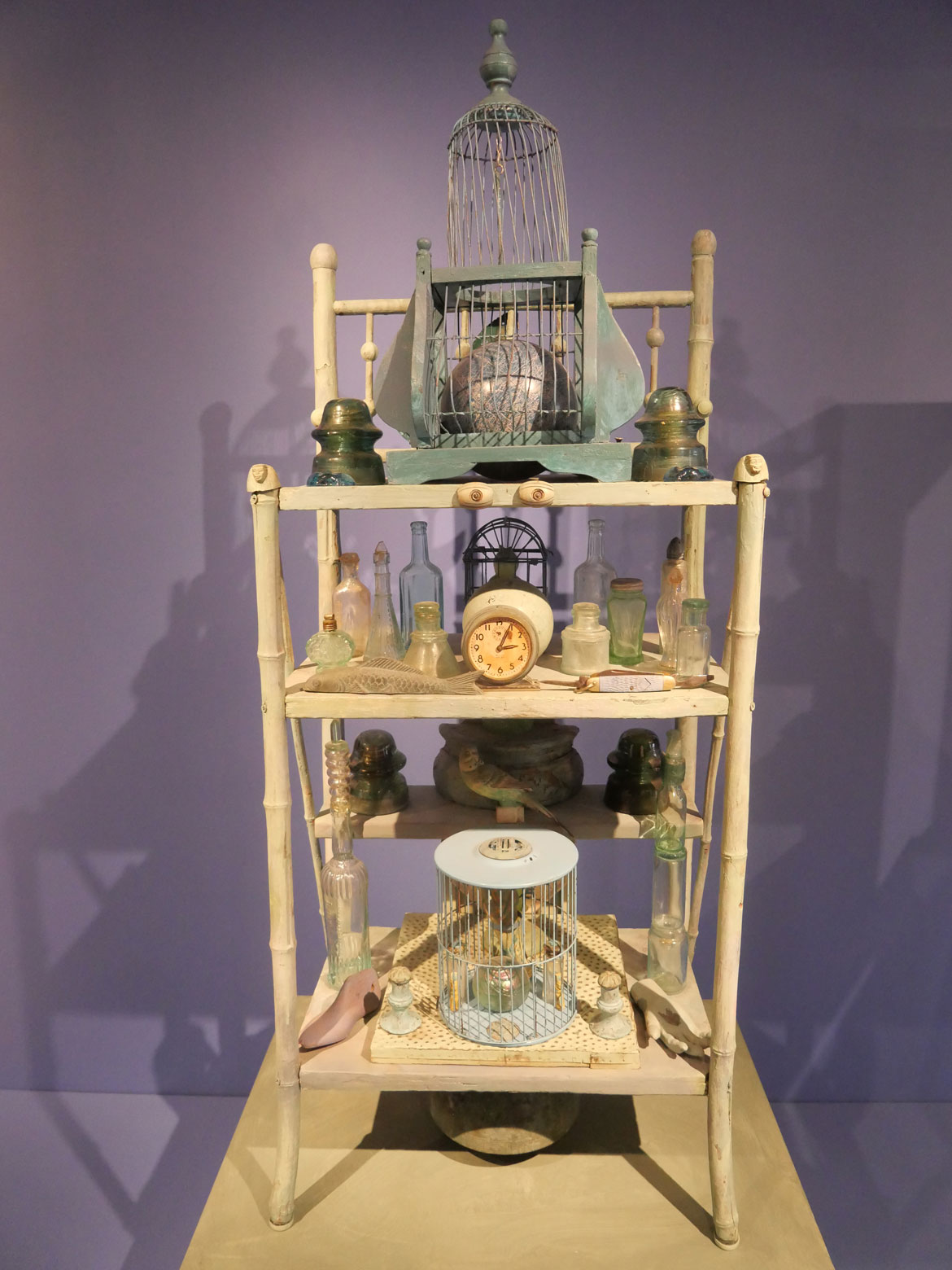
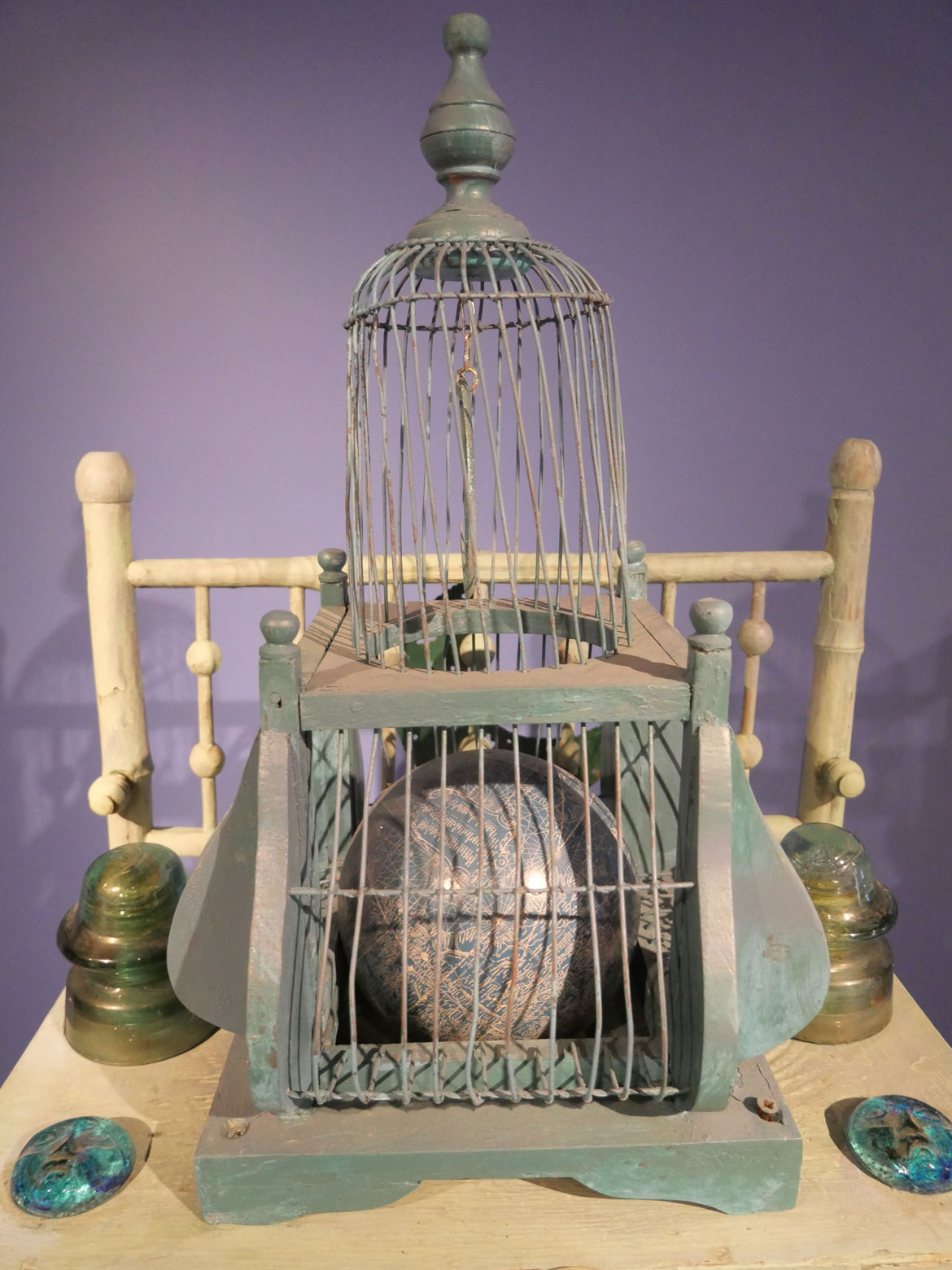
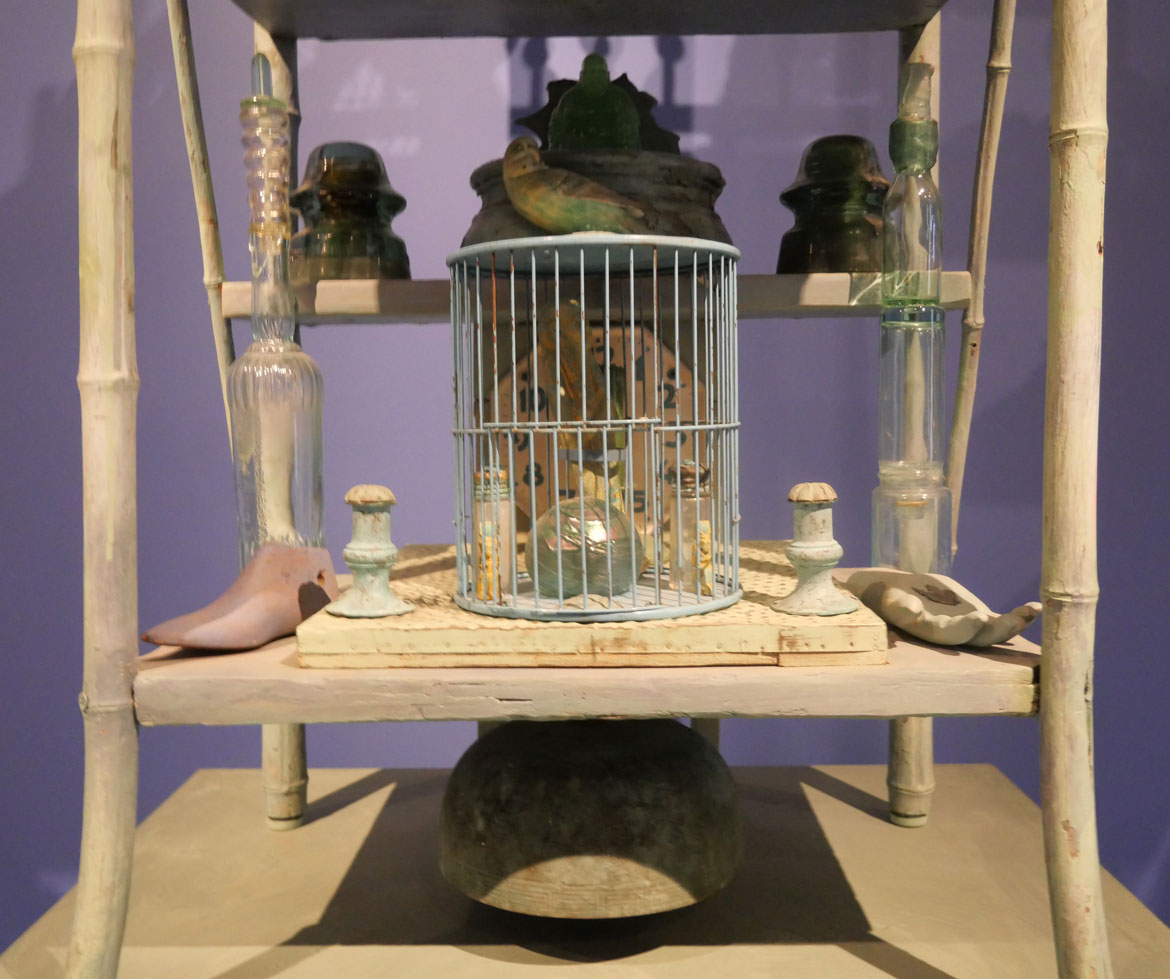

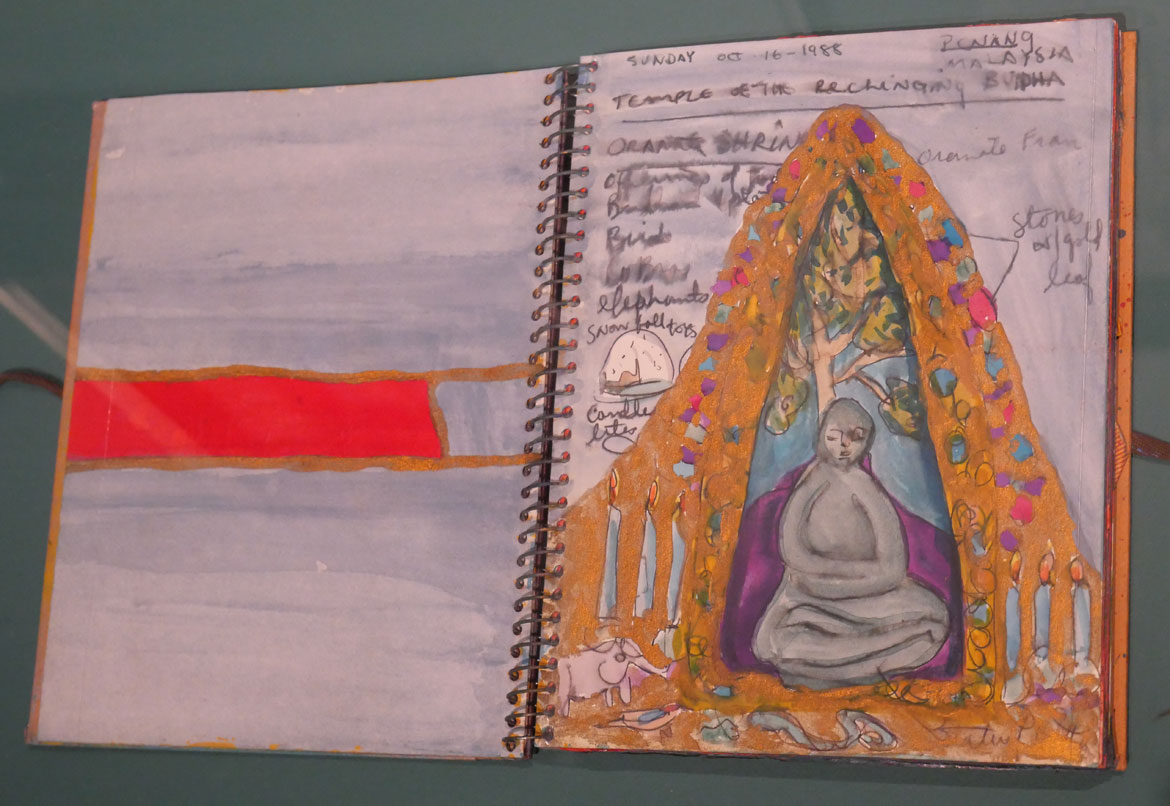
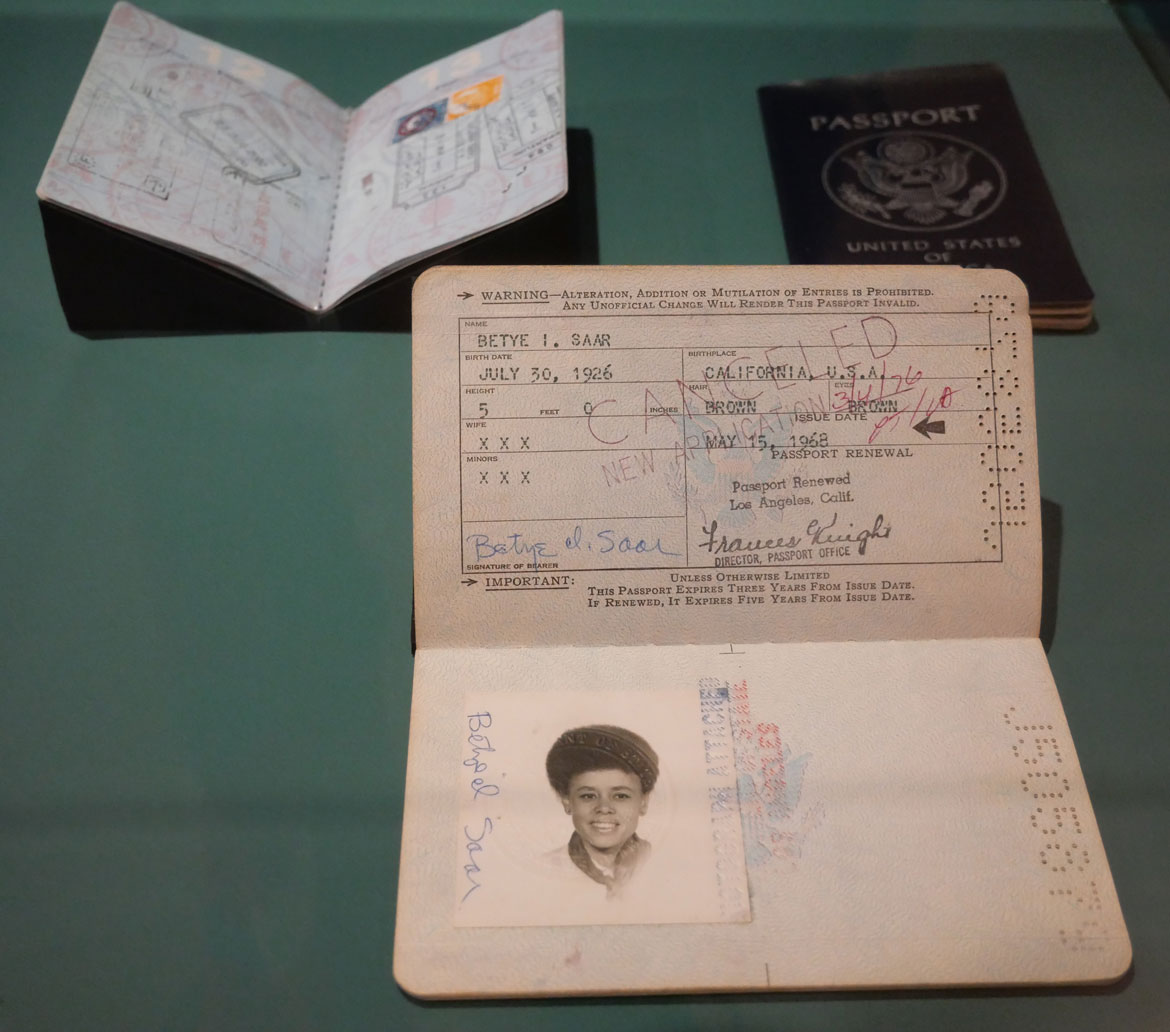
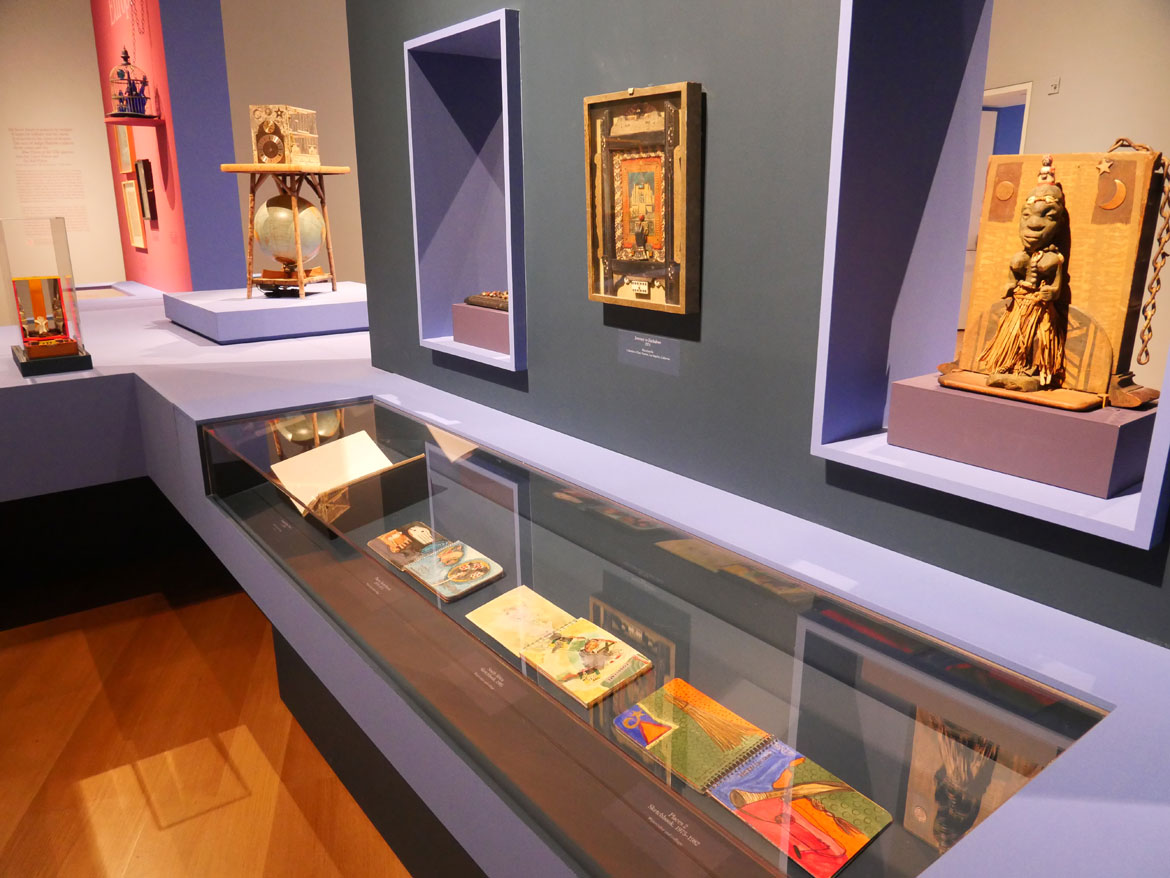

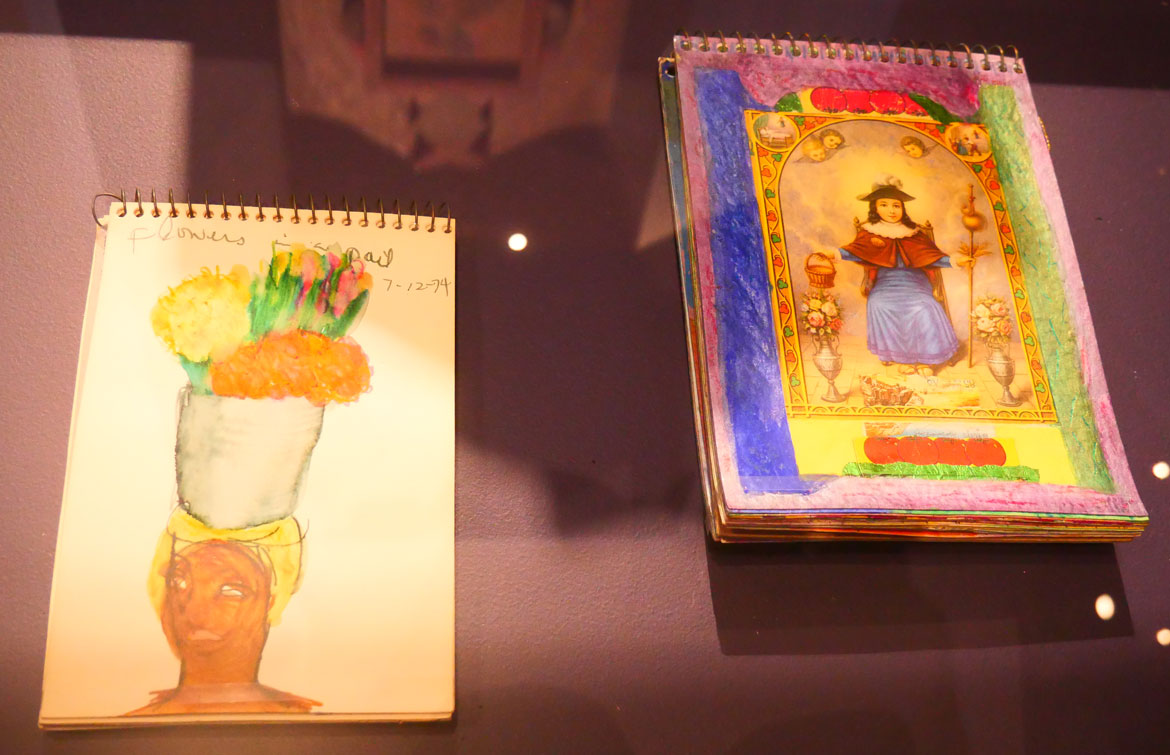
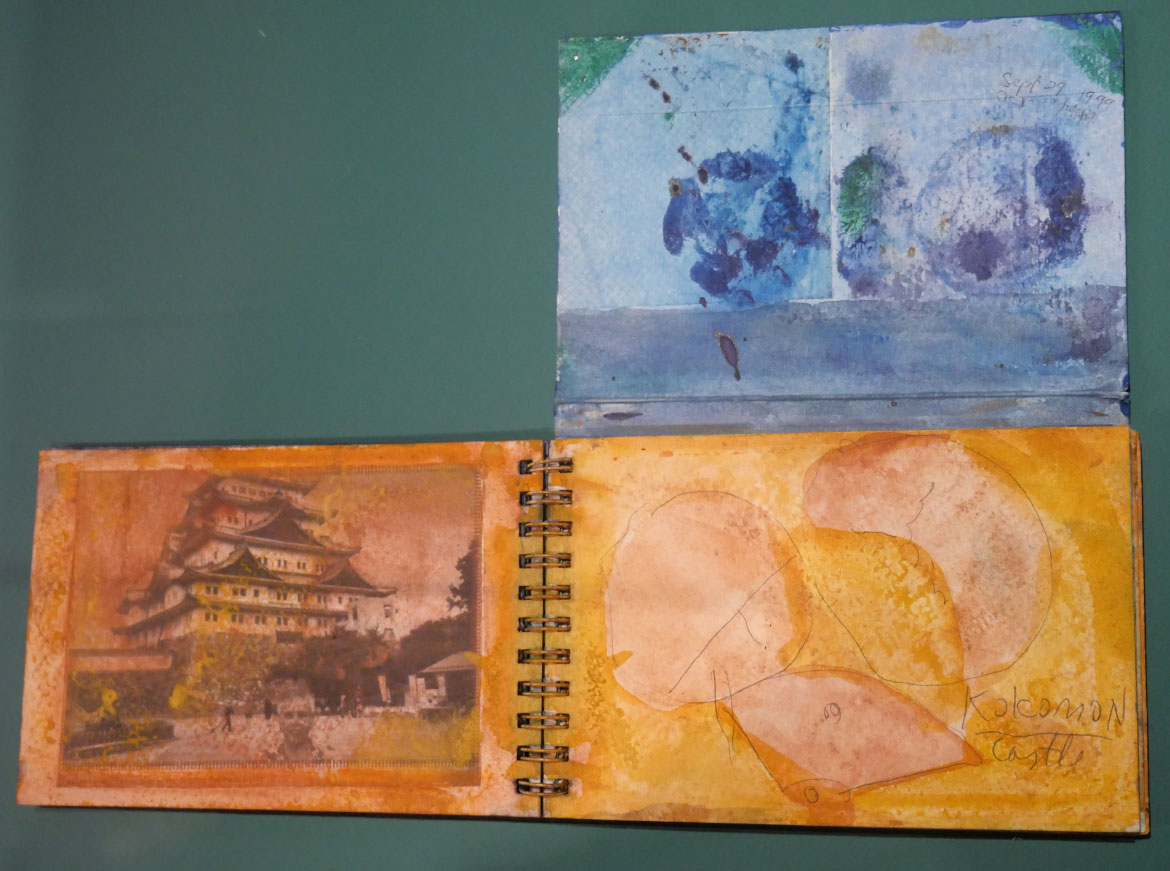
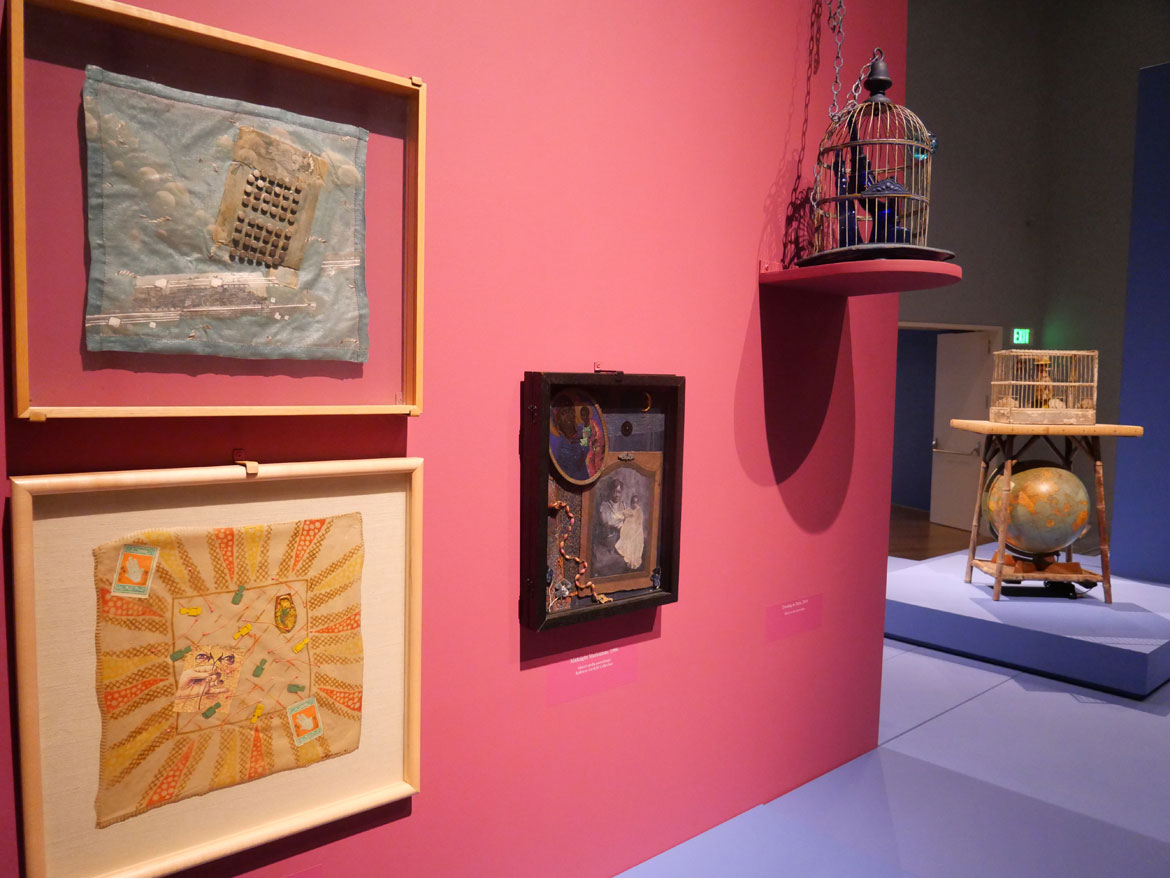
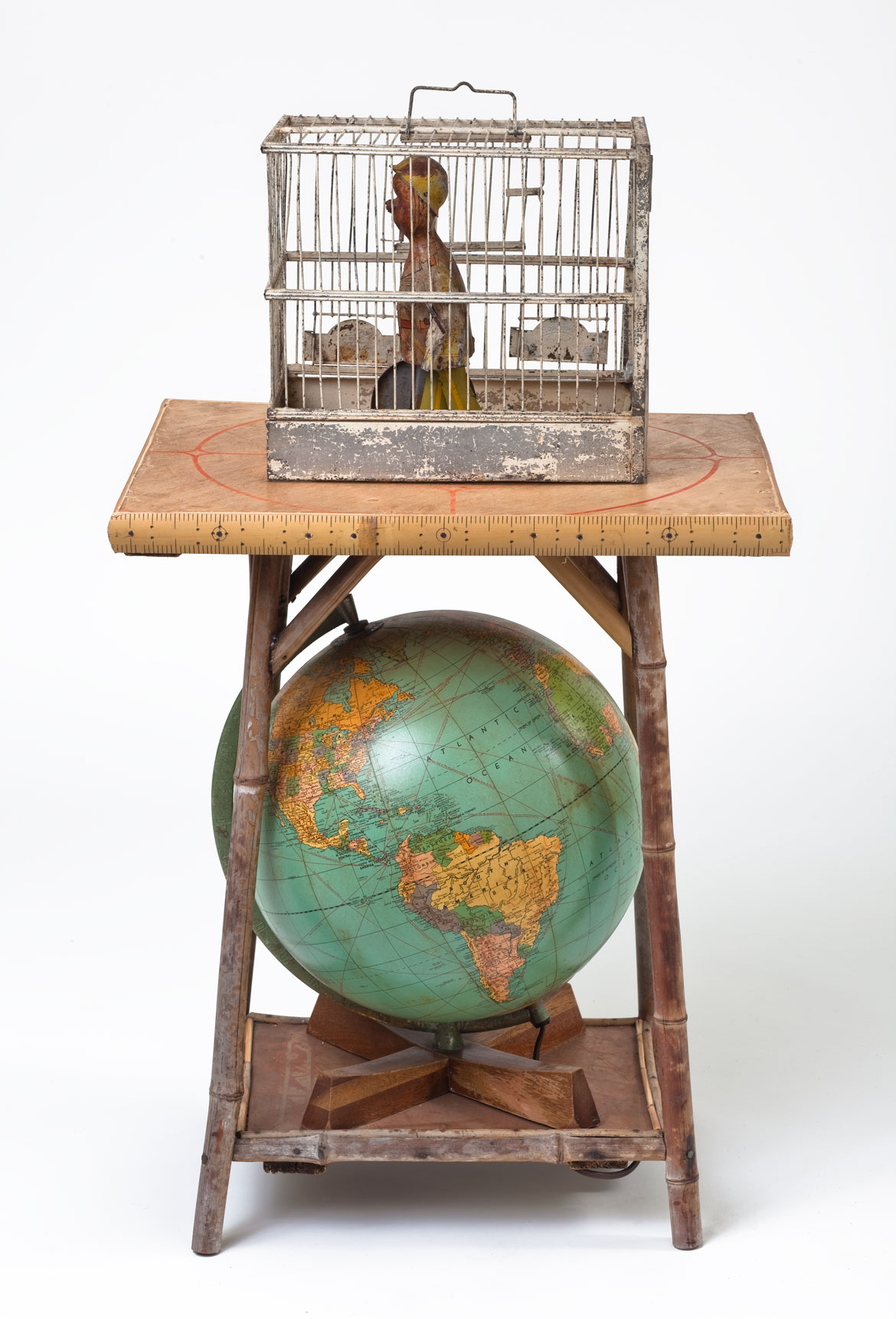
A blog post is a search query to find your people
Saraha reminder
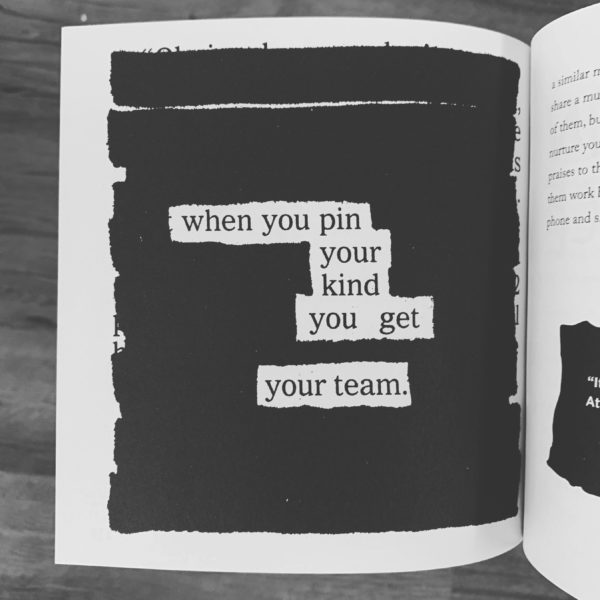
I loved Henrik Karlsson’s piece, “A blog post is a very long and complex search query to find fascinating people and make them route interesting stuff to your inbox.”
He writes:
A blog post is a search query. You write to find your tribe; you write so they will know what kind of fascinating things they should route to your inbox. If you follow common wisdom, you will cut exactly the things that will help you find these people. It is like the time someone told the composer Morton Feldman he should write for “the man in the street”. Feldman went over and looked out the window, and who did he see? Jackson Pollock.
So what do you write about to find your people?
You ask yourself: What would have made me jump off my chair if I had read it six months ago (or a week ago, or however fast you write)? If you have figured out something that made you ecstatic, this is what you should write. And you do not dumb it down, because you were not stupid six months ago, you just knew less. You also write with as much useful detail and beauty as you can muster, because that is what you would have wanted.
If you do this, Karlsson says, “You will write essays that almost no one likes…. Luckily, almost no one multiplied by the entire population of the internet is plenty if you can only find them.”
This is really a great summary of the best thing that writing and sharing your work can do for you.
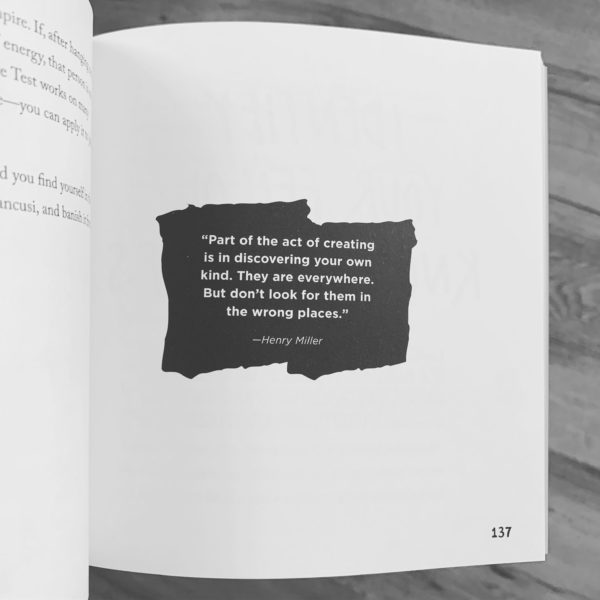
Prince’s Legendary Concert at First Avenue in 1983
SarahSharing for Andy although I don't think anyone reads anything anymore. Damn every tech company for killing actual online communities because they aren't profitable
I have never seen this before so maybe you haven’t either: a full-length video recording of Prince and the Revolution playing at First Avenue in 1983. This show marked the first time Prince played Purple Rain in public; it’s this recording of the song (lightly edited and reworked) that you hear on the album of the same name released the next year. From a piece in The Current about the show:
Before the 1984 blockbuster Purple Rain catapulted Prince on to the national stage, there was an Aug. 3, 1983 benefit concert for the Minnesota Dance Theatre at the recently re-branded First Avenue. It was there that the budding pop star debuted much of the Purple Rain album tracks, and recorded the versions of “Purple Rain,” “I Would Die 4 U” and “Baby I’m A Star” heard in the film and soundtrack.
“Those versions were almost exactly what he did live,” said longtime Prince producer David Rivkin, also known as David Z.
Since technology at the time couldn’t record wireless bass well, Rivkin said, Prince later added bass overdubs. He did some content edits, cutting the song down from about 14 to nine minutes.
“It was incredible; I mean little did I know it was gonna be that big of a recording,” Rivkin said. “Prince was really not a well-known figure back then. This is the kind of recording that launched him into super stardom.”
From Anil Dash’s piece on how Purple Rain came to be:
While Prince and the Revolution had been carefully rehearsing Purple Rain all summer, adjusting each detail of how the song was structured and played, Prince’s nearly-unequalled ability to spontaneously take a live performance to the next level was certainly on display that August night.
Exemplifying this ability is the repeated lilting motif that Prince begins playing on his guitar at 4:40 in the song. For all the countless times they’d practiced the song, even earlier on the same day as the First Avenue performance, Prince had never played this riff during Purple Rain before. In the original live show, it’s clear that Prince realizes he’s found something magical, returning again and again to this brief riff, not just on guitar but even singing it himself during the final fade of the song.
Just as striking is how this little riff shows the care and self-criticism that went into making the song Purple Rain. Like any brilliant 25-year-old guy who’s thought of something clever, Prince’s tendency when he thought of this little gem was to overdo it. In the unedited version of the song, Prince keeps playing the riff for almost another minute, pacing around the stage trying to will the audience into responding to it.
Update: From Louder, an oral history of Purple Rain and the night it was recorded.
After Melvoin’s opening acoustic chords, Bobby Z’s drums — mostly acoustic, and triggering Linn drums later added to in the mix — accompanied Prince’s singing for the first two minutes. “It’s just a back-beat and him from his guts,” Bobby says. “It’s just so raw for him. I remember those two minutes. Because the room is silent except for the pattern you’re playing. He was in the moment, and you’re in it with him, and it was a special place to be. It was a whole different planet.”
(via @peterbutler
Tags: music Prince videoThe Less Good Idea
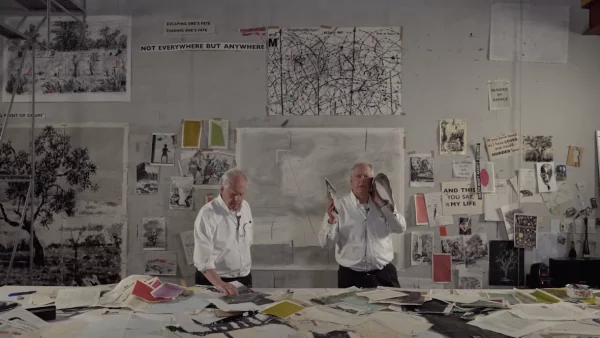
Listening to an interview with artist William Kentridge, he explained the origins of The Centre for the Less Good Idea, an “interdisciplinary incubator space” he started in Johannesburg.
The name comes from a Twsana proverb: “When the good doctor can’t cure you, find the less good doctor.”
From the Centre’s website:
Often, you start with a good idea, It might seem crystal clear at first, but when you take it off the proverbial drawing board, cracks and fissures emerge in its surface, and they cannot be ignored. It is in following the secondary ideas, those less good ideas coined to address the first idea’s cracks, that the Centre nurtures, arguing that in the act of playing with an idea, you can recognise those things you didn’t know in advance but knew somewhere inside of you.
The Centre hosts all sorts of events, in person and online. I was unaware, for example, that Kentridge and Walter Murch had collaborated. Here’s their recent conversation:
The New Rules?
Sarahmore list reactions, yessss!
The cover story of the current issue of New York magazine is a collection of tips, rules, and etiquette for how to behave in contemporary society (ok, urban east coast society). It’s a good list for the most part, if unnecessarily provocative in places — gotta sell those magazines and rile up whoever remains on Twitter. I snipped out several of the rules and gently annotated them with my opinionated thoughts below. Just like bloggers used to do in the olden days. Quaint!
6. Never wake up your significant other on purpose, ever.
And don’t turn on the lights when they’re asleep. Jet-lagged and want to talk? Don’t do it. Think someone is coming in to kill you? Work it out yourself.
Huh? I think it’s the “ever” that bugs me here. Don’t get me wrong, I love my sleep and if I don’t get 7-8 solid hours, I’m more or less worthless the next day. But if you actually need me at 3am, by all means, wake me up. (I feel like the person who wrote this doesn’t have children? Getting woken up in the middle of the night is de rigueur w/ kids around, so your partner rousing you in the middle of the night bc they’re, for instance, having a panic attack or are sick & wondering if they need to go to the ER not only isn’t a big deal but is part of the reason you’ve partnered up in the first place.)
27. The proper response to being told something you already know isn’t “I know.” It’s “You’re right.”
I would like to tattoo this on my son’s arm for reference; I hear “I know” from him like 90 times a day when what he really means is, “That’s right” or “Thanks for the reminder”.
30. When casually asked how you are, say “Good!”
It’s neutral and doesn’t force someone to endure a trauma dump or a spiel on how “the world is up in flames.”
I have some trouble with this one. Even when the grocery store cashier is just being polite, I sometimes answer them like my therapist is asking.
33. If you bring up astrology and it isn’t met enthusiastically, change the topic.
Not everyone believes in your made-up star bullshit.
“Made-up star bullshit”: thank you. Religion too. But this probably goes for anything — if your conversational partner isn’t digging it, move along to something else.
47. Listening is not the time for you to silently rehearse what you want to say next.
We can see your eyes glazing over.
I know what they’re trying to get at here — listening, really listening, is important! — but this isn’t great advice for folks who aren’t neurotypical… Some people simply cannot participate in conversations without being extremely in their own heads about how to respond to what is being said, especially when they don’t know their convo partner well.
50. If your burger is becoming a salad, your restaurant-order modifications have gone too far.
You’re allowed to ask for things based on allergies and preferences. But when your dish transforms into another dish, you’re a problem.
Yes, exactly. This is the dunderheaded “the customer is always right” run amok.
59. The correct number of slices of pizza to order for a group of X people is 2X + X/3.
Any fewer is for misers; any more risks catatonia. N.B.: This rule holds for “classic” New York-style pizza.
I’d never heard this rule of thumb before. Let’s see if it checks out. For 3 people, you’d get 7 slices. For 8 people, you’d get 19 slices. Everyone gets two slices, plus one out of three people gets an extra slice. I feel like this might fail sometimes with smaller groups but with larger ones, things will tend to average out more (some ppl will eat more, some less).
78. Don’t talk about a movie when leaving the theater.
You never know who might overhear you raving about the big twist or panning an actor’s overhyped performance. At a certain point, people have to accept that they’re going to hear spoilers for the film, but not three minutes before seeing it.
Yes! I am always very quiet when leaving the theater, aside from non-specific utterances like, “that was great!” It’s easy to wait like 30 seconds for when you make it to your car or out on the street.
83. Go on, take the last bite.
Nobody wants to be the person who swipes that lone, lingering croquette or slurps down the final oyster from a communal seafood tower. Are you selfish? A glutton? All of the above? No. You are sparing everyone — your guests, yourself, your server — from the limbo of leaving one last bite on a shared plate. Letting something sit on the table uneaten while the bussers wonder whether they should clear the dish: That’s not polite. It’s annoying. Eat the food! That’s why it’s there.
Oh man. As a midwesterner who went to sooooo many potlucks and church picnics as a kid, this has been a tough habit to shake — taking the last morsel of something might as well be a felony in some parts of rural Wisconsin. But I’ve learned that if you’re paying attention (which is the key to many points of etiquette), you can tell when it’s alright to take the final bite of something, when to leave it for someone else, and when to urge someone you noticed enjoying a particular dish to grab the last bit of it.
94. It’s okay to email, text, or DM anyone at any hour.
There’s nothing worse than being woken up at 2:30 a.m. with a dumb text or a Slack notification. So why did you do that to yourself? Phones and computers have great tools now to manage your time away, including setting working hours and muting types of notifications. We’re responsible for which flashing lights and noises we let into our lives. Because of that, anyone should feel free to text a friend or message a co-worker at any hour. We can’t successfully move into the future unless we recognize that the onus is on the receiver, not the sender.
No. I get that other people’s notification strategies should not be your problem, but sending work-related emails and messages at all hours may generate a corresponding pressure in recipients to be awake to respond to them and normalizes the sense that you should be on the clock 24/7/365, which is no way at all to live and should be discouraged at every turn.
108. Don’t try to help a stranger parallel park.
People should be allowed the grace to park alone without being perceived. If you are walking down the street and see that a stranger is parallel parking, avert your eyes. “What if they need my help?” you ask. You are allowed to help only if you are directly and explicitly asked to by the driver. Otherwise, keep walking — it’s what’s best for everyone.
Yes! This is related to a current pet peeve of mine here in VT: people who wave at you or flash their lights for you to turn across traffic in front of them, even though you don’t have the right of way. I get why people do this: traffic is “heavy”, they have a clearer view of oncoming traffic than you do, and/or they are trying to be nice. But in reality, it creates a dangerous situation for you: you feel rushed into accepting their offer of help and move into the intersection before you’ve checked if it’s safe. Or someone behind them gets antsy and passes them on the right and suddenly they’re in the intersection when you’re pulling out. It’s just safer and better if everyone just takes their turn when they have the right of way.
111. It’s perfectly fine to walk through someone’s scene.
Whether it’s Marty Scorsese or someone filming an outfit-of-the-day TikTok, they don’t own the sidewalk.
Absolutely. Especially with people on busy streets taking photos with digital cameras, just walk in front of them…they can always take another one.
139. Post like the wind.
On Instagram, where best practices are unspoken but nearly universal, the conventional wisdom is that you should post on your main feed no more than once a day. Infrequent posting is perfectly in line with Instagram’s social mechanisms — it maximizes likes on each post, prioritizes the consumer, and lends itself to a tasteful, optimized feed where only the best-of-the-best pics make the cut. But if you’re going to participate in social media, the only way to have any fun with it is by consciously defying the incentives it dangles in front of you. Post excessively, indulgently, tastelessly. Maybe even take some shots with the in-app camera and post them as-is (it only seems unimaginable because you’re not thinking big enough). The curated photo-dump carousel, polite and unintrusive, is dead; posting 15 individual photos to your main grid in one day is what freedom feels like.
Ha, I like this advice! But I do not do it. Curators gonna curate, so my social media is pretty metered and controlled and all that jazz. Gonna think about letting loose a bit more often.
140. Don’t post RIPs for celebrities.
“Only the most moronic amongst us post photos of famous people seconds after they die,” Keith McNally recently wrote on Instagram. “It’s not a form of respect for the dead, but an attempt to sycophantically associate themselves with the famous. It’s their 15 minutes of fame, the necrophiliac bastards.” We tend to agree: Unless David Crosby was your actual uncle, or cousin, or whatever, refrain.
Huh? No. The public displays by strangers of remembrance, condolence, and, yes, even grief in the wake of a beloved celebrity’s death is one of the best things about social media. What this point should have been instead: If the dead were monstrous, go ahead and speak ill of them after they die. When Dick Cheney finally goes, I want to hear all about how he helped fuck America up for decades to come, please and thank you.
Tags: how to listsDouglas, 27“I’m wearing a vintage Doncaster coat, Doc Martens...

Douglas, 27
“I’m wearing a vintage Doncaster coat, Doc Martens boots I’ve had for 11 years, vintage black knit Missoni skirt, mesh t-shirt, Banana Republic poodle pin, thrifted necklaces & bracelets, and my grandfather’s Casio watch I inherited. What inspires my style currently is a sense of ease, function, playfulness, being free-spirited, sustainability, and breaking out of the boxes (imposed by myself or society). I’m trying to break away from wearing all black.”
Ifeoluwa”I’m wearing a blazer made by my friend Grace, her brand...
Sarahlove this

Ifeoluwa
”I’m wearing a blazer made by my friend Grace, her brand is called Purities. My top is from Daily Paper, pants were given to me by my older sister but she thrifted them, my shoes are the Bryant Giles x New Balance collab, and my bag is from Escama Studios. I keep my jewelry quite consistent and it’s also very sentimental to me. My mom has passed down so many pieces to me and I wear them every day. I also like to source my jewelry from vintage sellers and thrift stores. I want my style to feel consistent but still have an element of surprise.”
AI imagines my cat in costumes
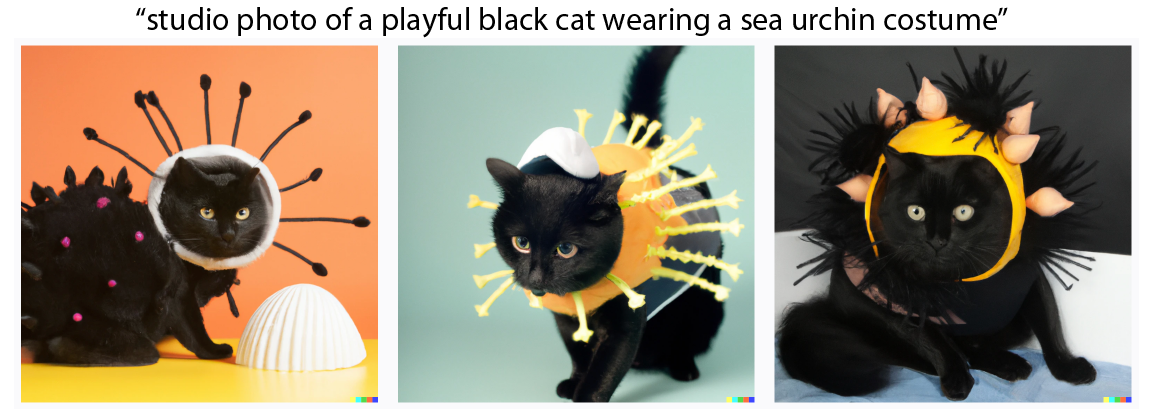
I don't dress my cat in costumes because, without even trying, I know she would hate that.
But now I can use text-to-image generators like DALL-E2 to imagine what she would look like in costumes. After all, even if it never saw my cat in a robot costume in its online training, it's seen cats, it's seen robots, and it's seen costumes, so it can try to put them together.
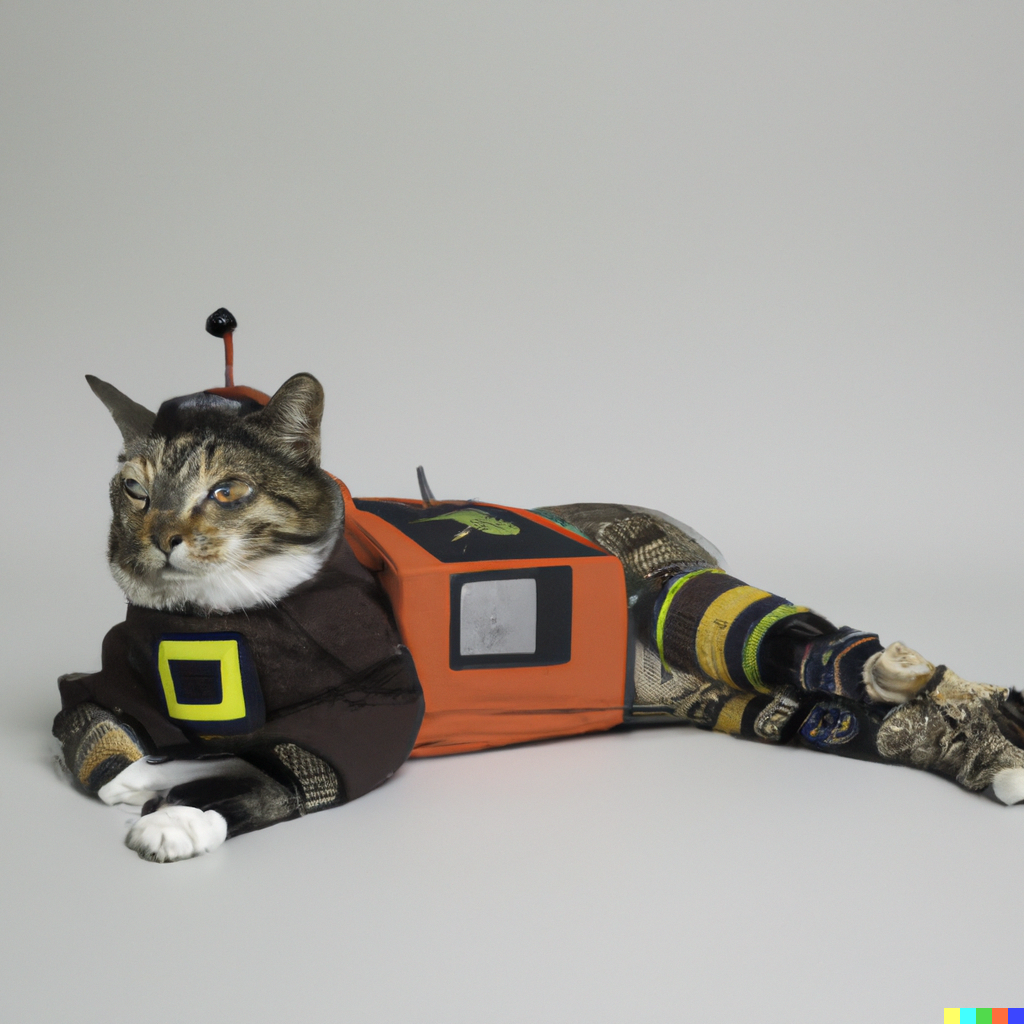
Everyone knows that squares = robots so this costume makes perfect sense.
When I try to get DALL-E2 to dress my cat up as other animals, one common failure mode seems to be... this.
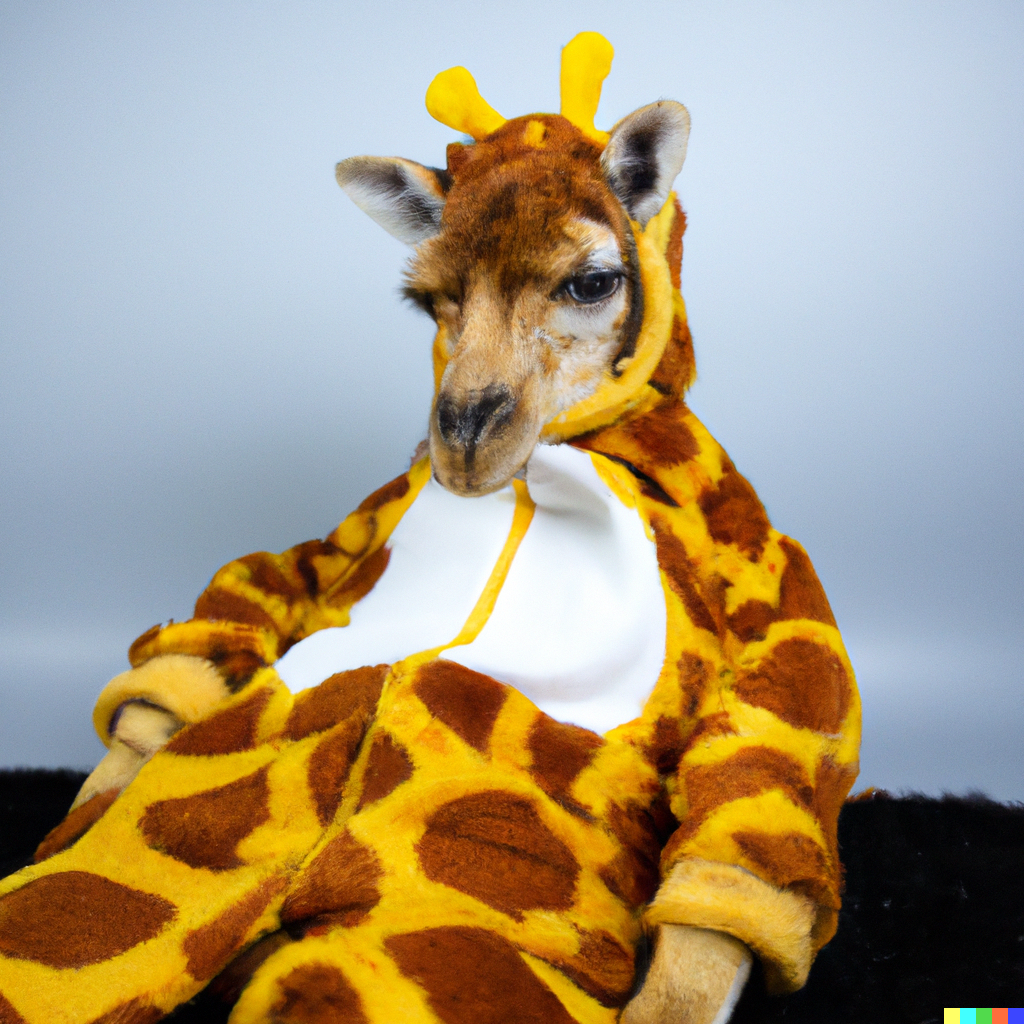
It has accurately put my cat into a plush giraffe onesie complete with hood, cuffs, and zipper, but it has also turned my cat into a giraffe.
There's a similar failure mode with its tortoise costumes.
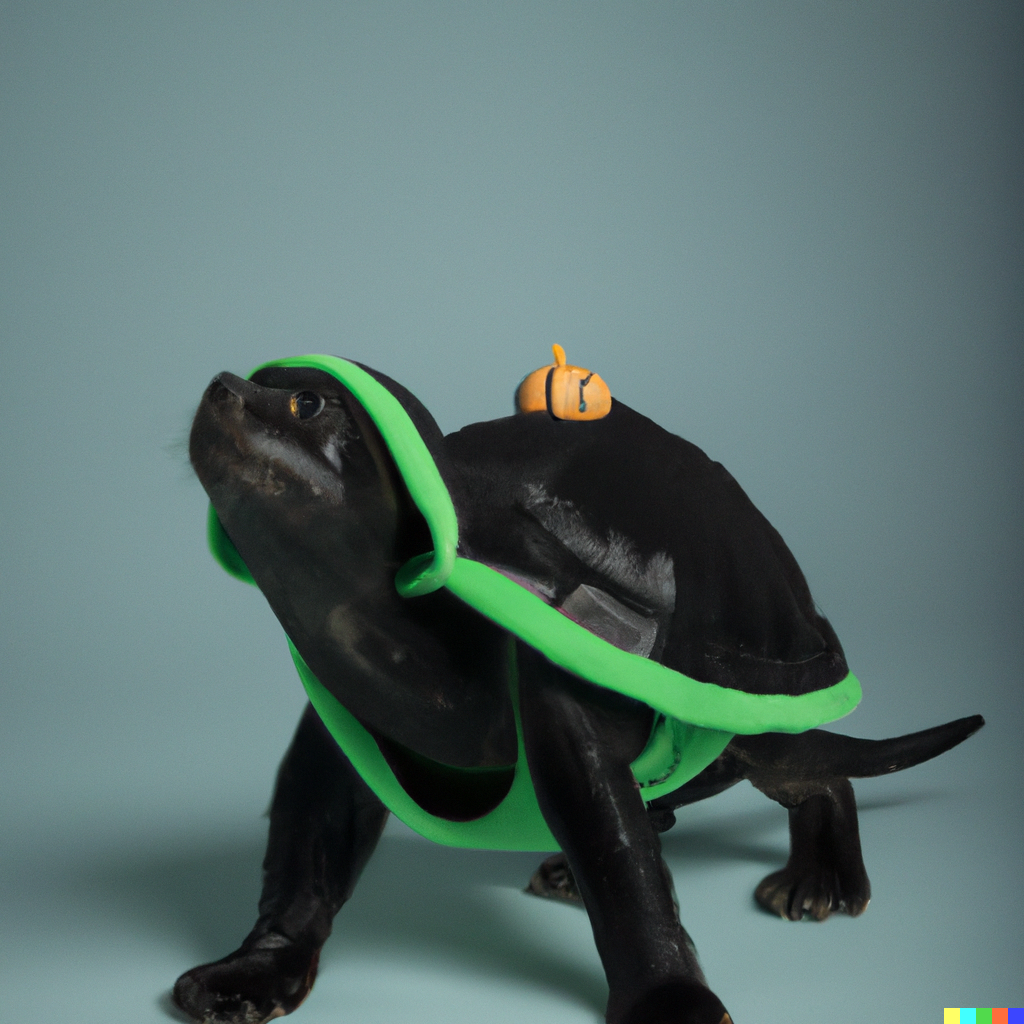
(It has also taken the libery of adding a pumpkin to the costume, I see.)
Here's what it did for a scorpion costume.



It has picked up enough about "scorpion" to know that it should start doing insectlike stuff, but it's throwing in ears, cow horns, bee stripes, wings, everything but the iconic scorpion tail and claws.
And here's "caterpillar".

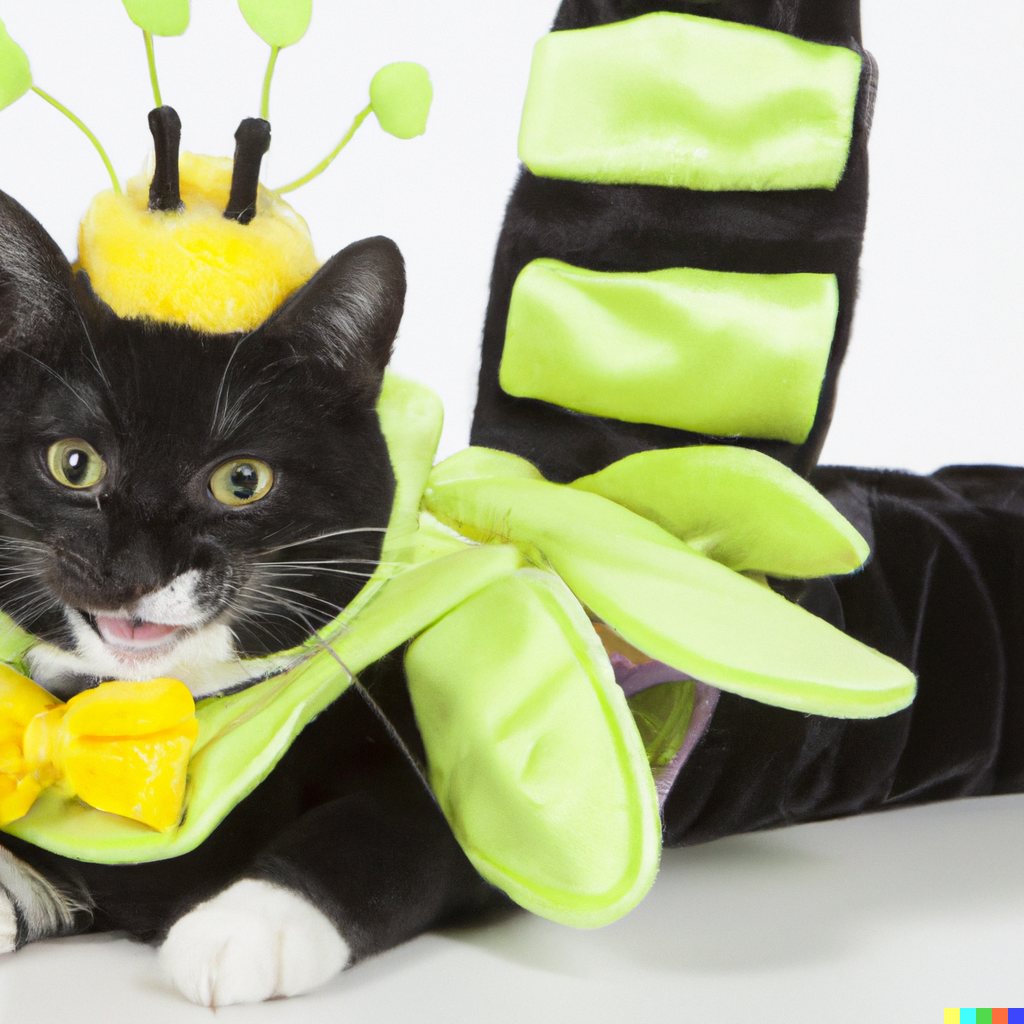
Its antenna game is strong, I'll give it that.
Another category of costume that gives it trouble: things with horns and snouts.
Its triceratops is spikes everywhere, plus a curly unicorn horn.

Its elephant is also somehow a unicorn.
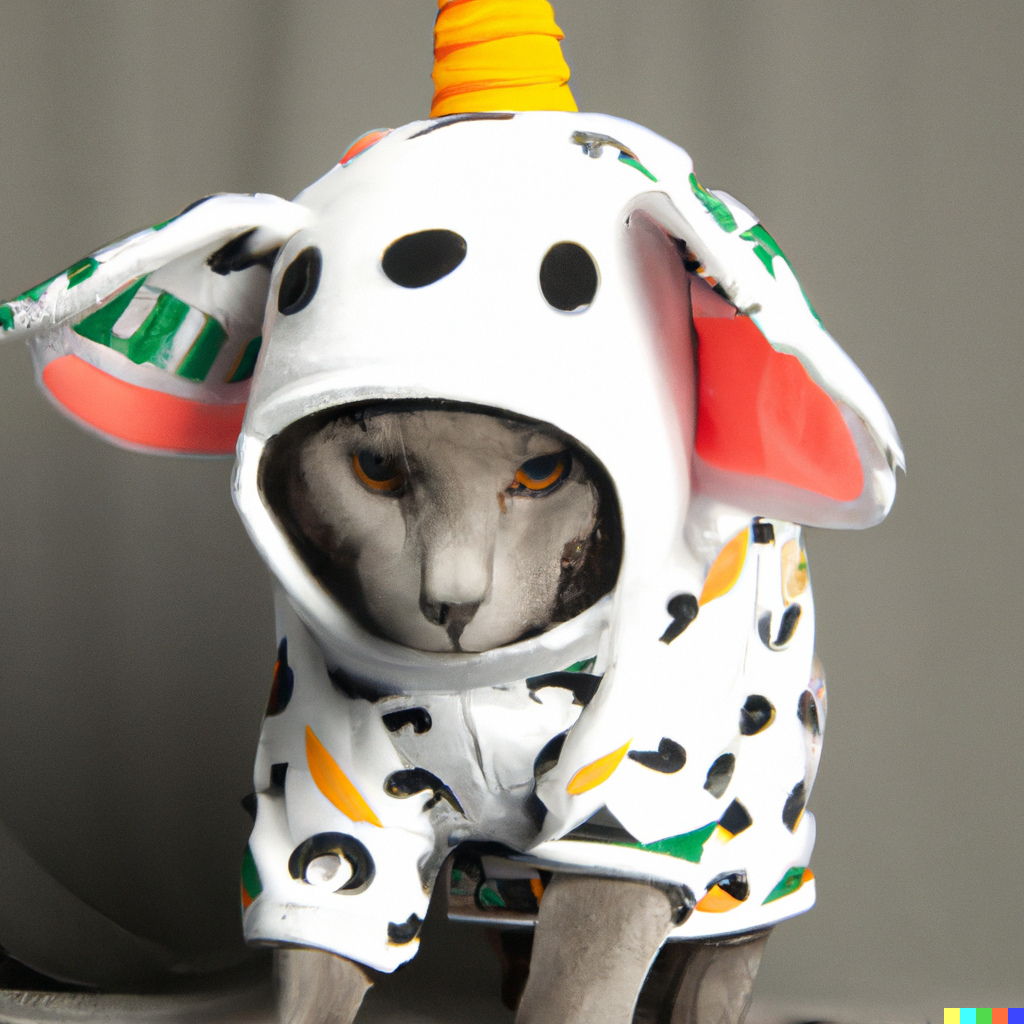
Its anteater, which shouldn't even HAVE horns, is also a unicorn. And the cat is some kind of weasel?
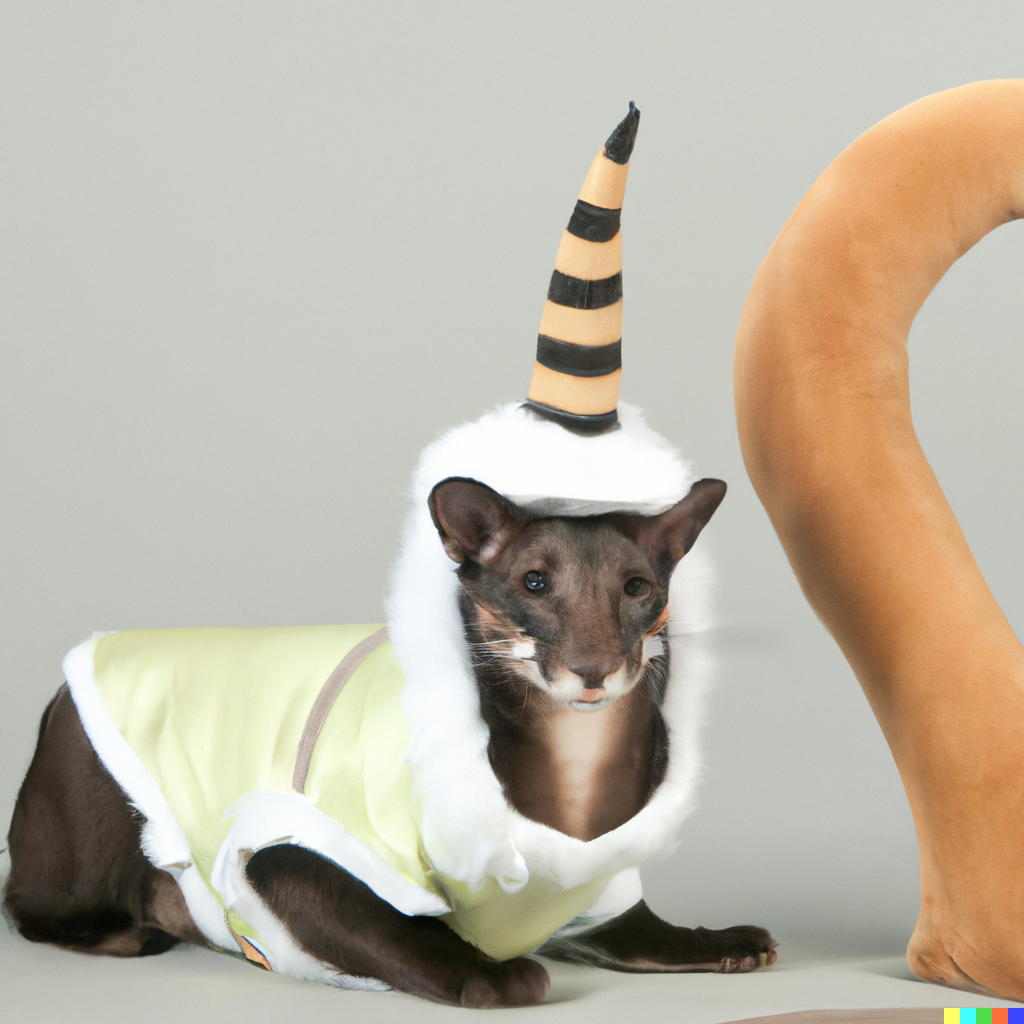
This is also an anteater costume. Here an anteater appears to also be some sort of quail in a sweater.
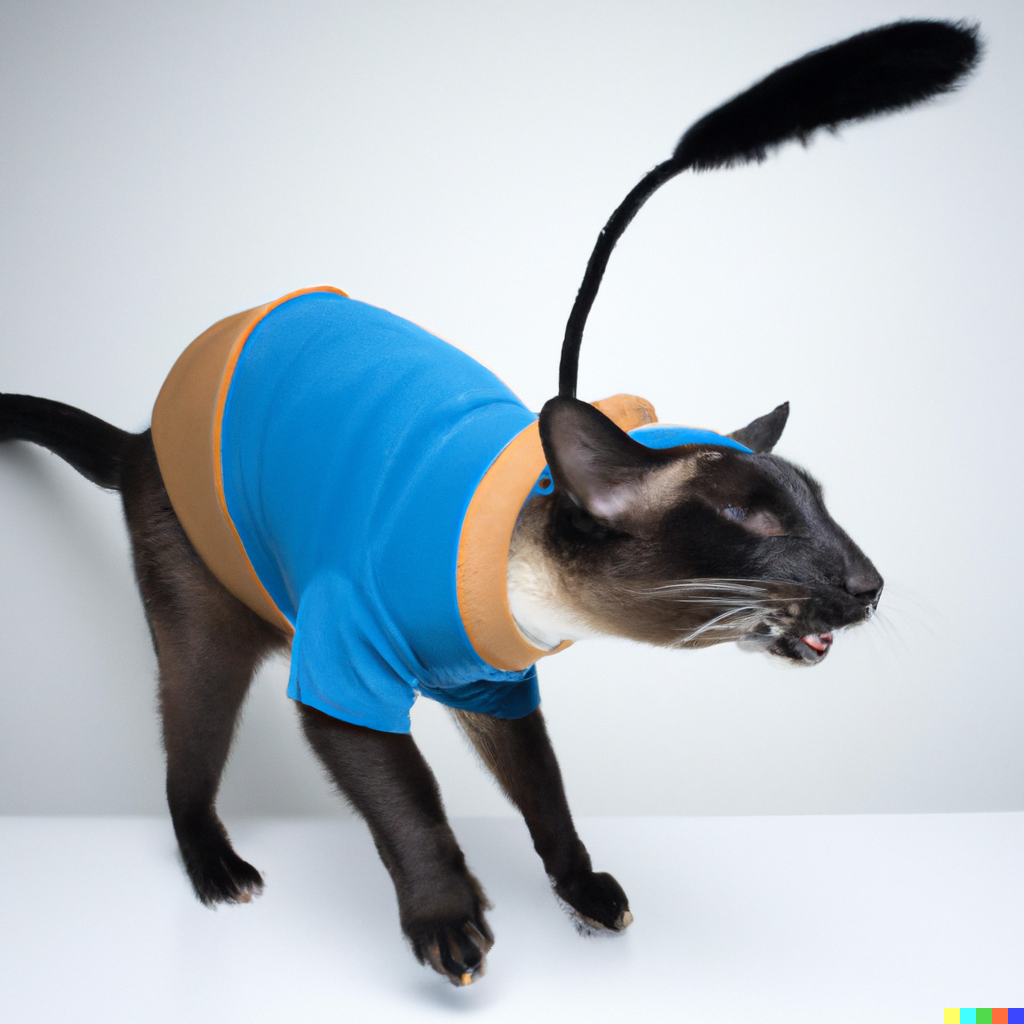
DALL-E2's tapir costumes were also really weird.
"Tapir"

"Tapir"

Clearly a tapir.
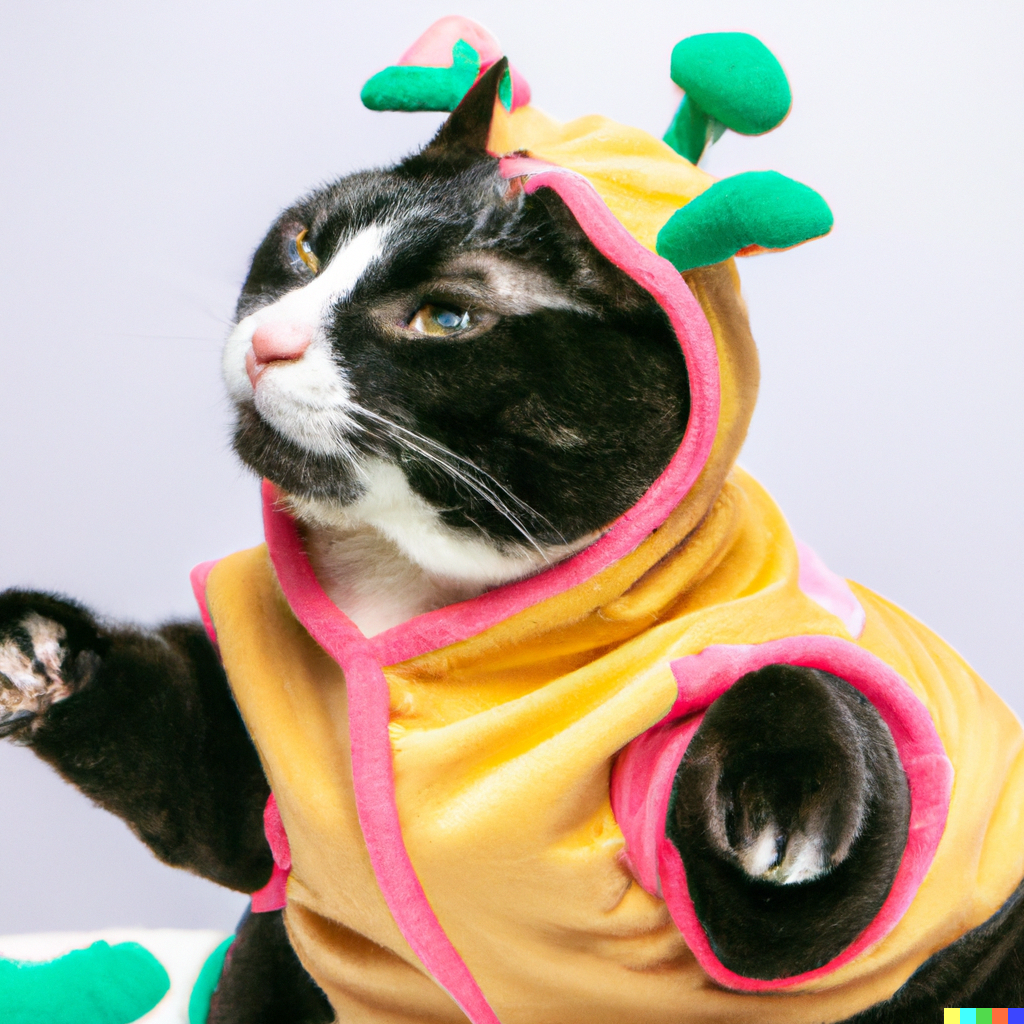
It's not that it doesn't know what a tapir looks like. Here's its attempt at a tapir in a tapir costume.
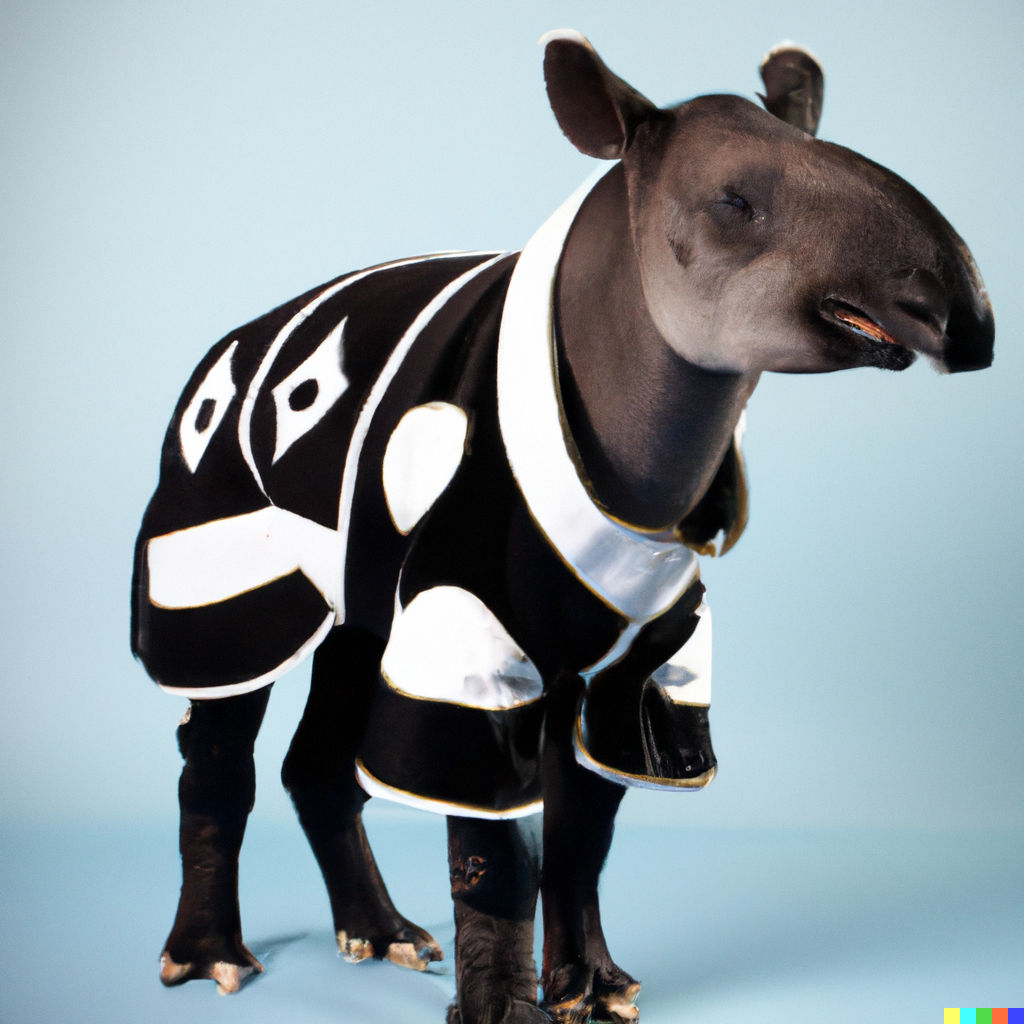
I've previously noticed that something is weird about how DALL-E2 deals with multiple kinds of animals in an image, usually choosing just one kind of animal to generate, or blending the two. It seems a similar kind of weirdness might apply to animals dressed as one another.
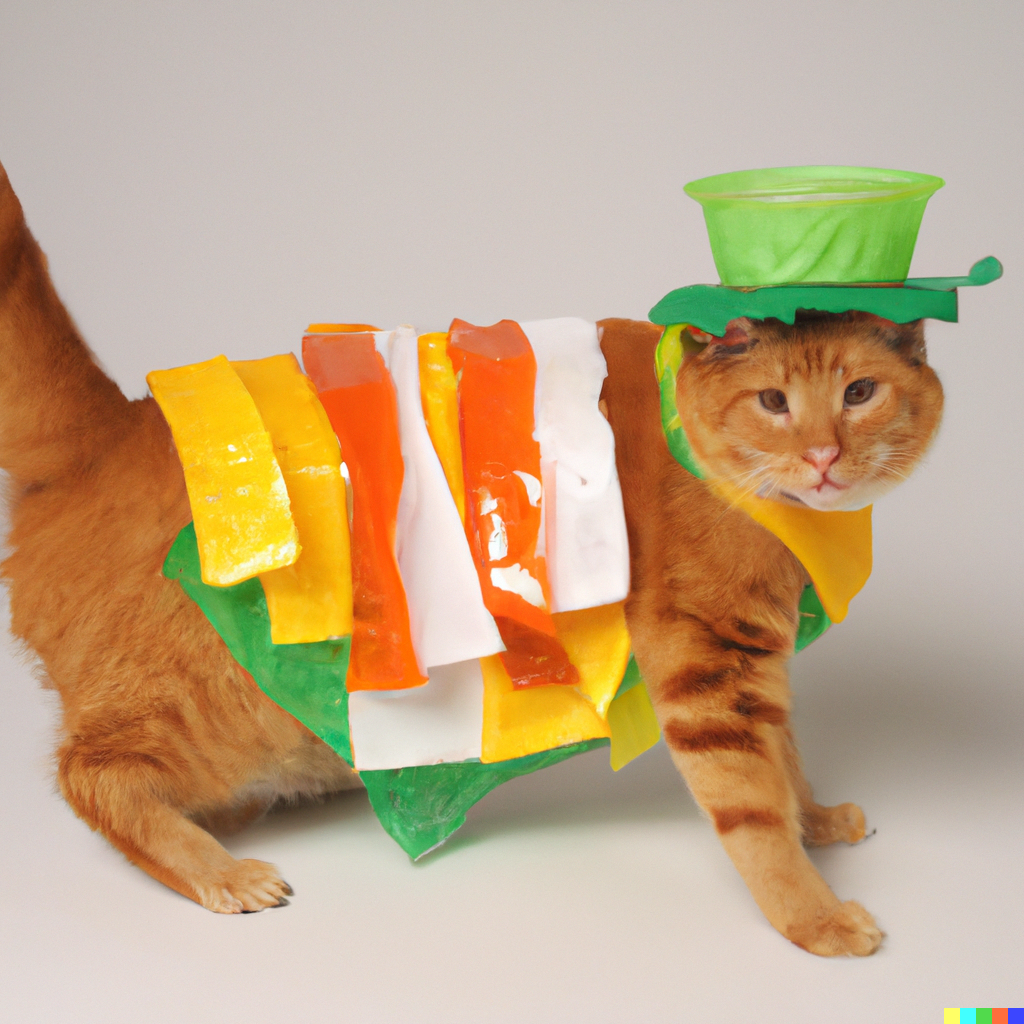
Jasper‘The white shirtdress is Helmut Lang, silver mesh tank...

Jasper
‘The white shirtdress is Helmut Lang, silver mesh tank ASOS, gingham pants by Hugo Boss, tassel loafers and beetle buckle belt both by Paul Smith, metal necklace by Mango. Most of what I wear is rooted in classics that I like to twist, mess up and make more interesting.”
At New York Fashion Week, Baked Goods Make for the Best Accessories
Sarahyes pls
Alien Parade At Exeter UFO Festival
Sarahgosh i want to be excited about something dumb and silly and well anything to be frank
The Exeter UFO Festival’s Alien Parade traveled from Town House Common Park to the Bandstand outside Town Hall today.
The small southern New Hampshire festival is inspired by the famous UFO “Incident in Exeter” of Sept. 3, 1965, when an 18-year-old hitchhiker reported seeing strange flashing red lights hovering above Route 150 around 2 a.m. He told police, who went back with him to the site, and they reported seeing a strange hovering object with red flashing lights.
The festival, which was founded in 2010 by the Exeter Area Kiwanis Club, offers speakers, a children’s craft area, a couple souveneir tents, a burger stand, a tent selling tickets for the upcoming rubber duck race, and a bus tour to the 1965 “Incident in Exeter” site. Some shops also offer UFO inspired merchandise.
If this is the kind of coverage of arts, cultures and activisms you appreciate, please support Wonderland by contributing to Wonderland on Patreon. And sign up for our free, occasional newsletter so that you don’t miss any of our reporting. (All content ©Greg Cook 2022 or the respective creators.)
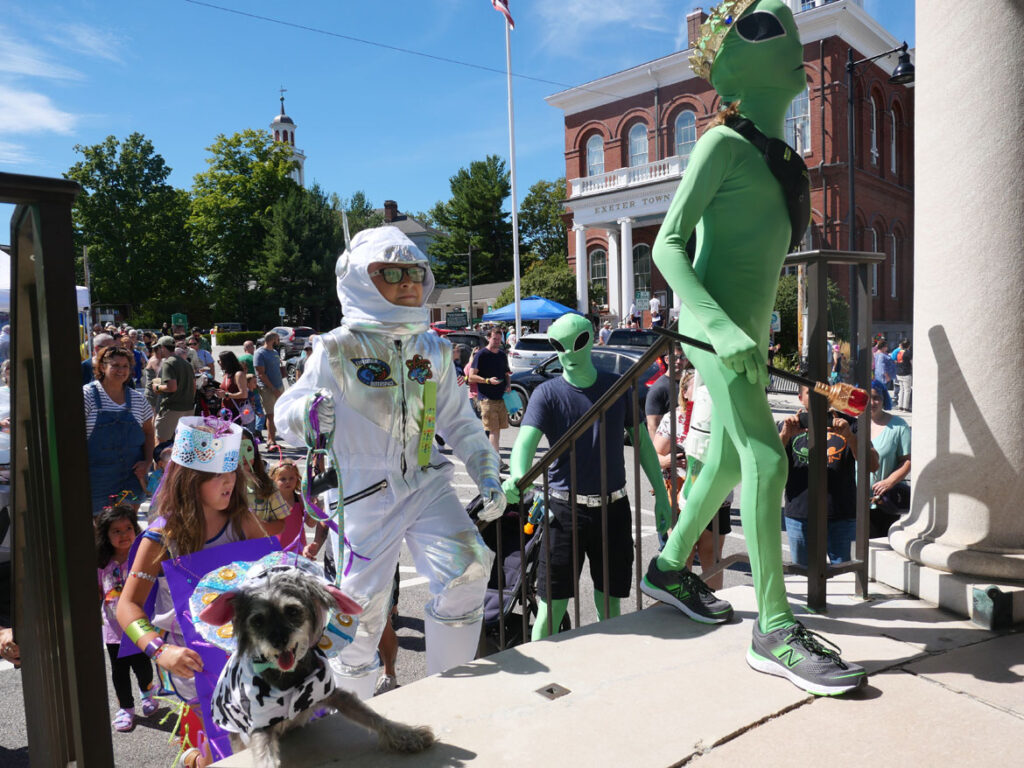

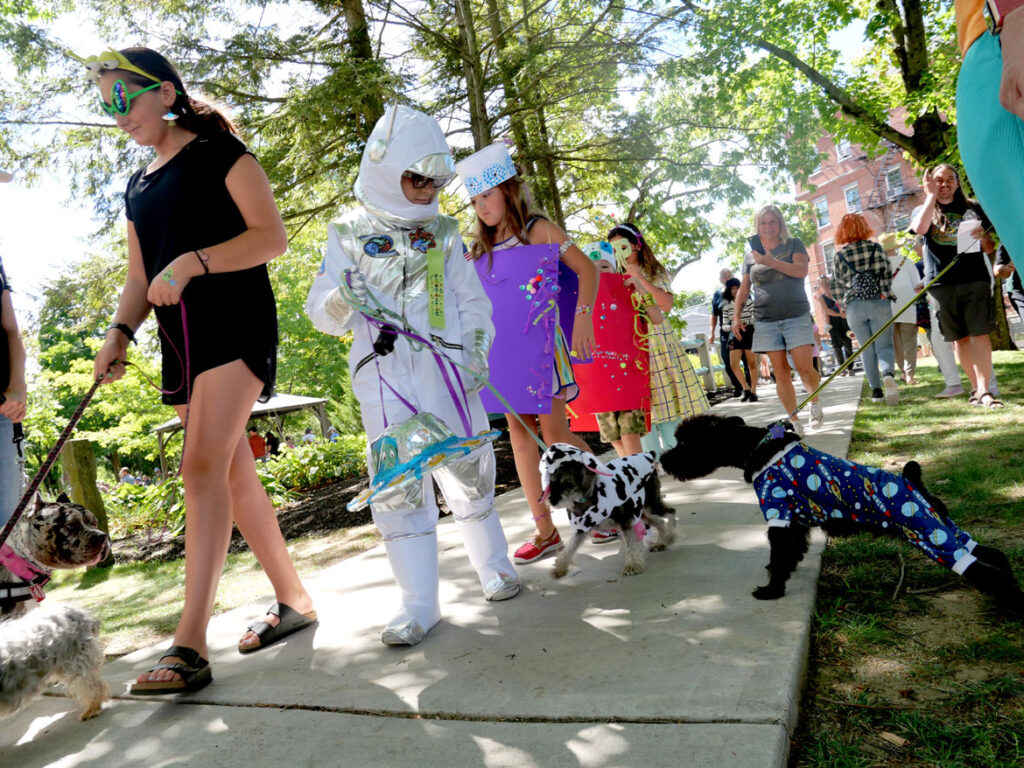
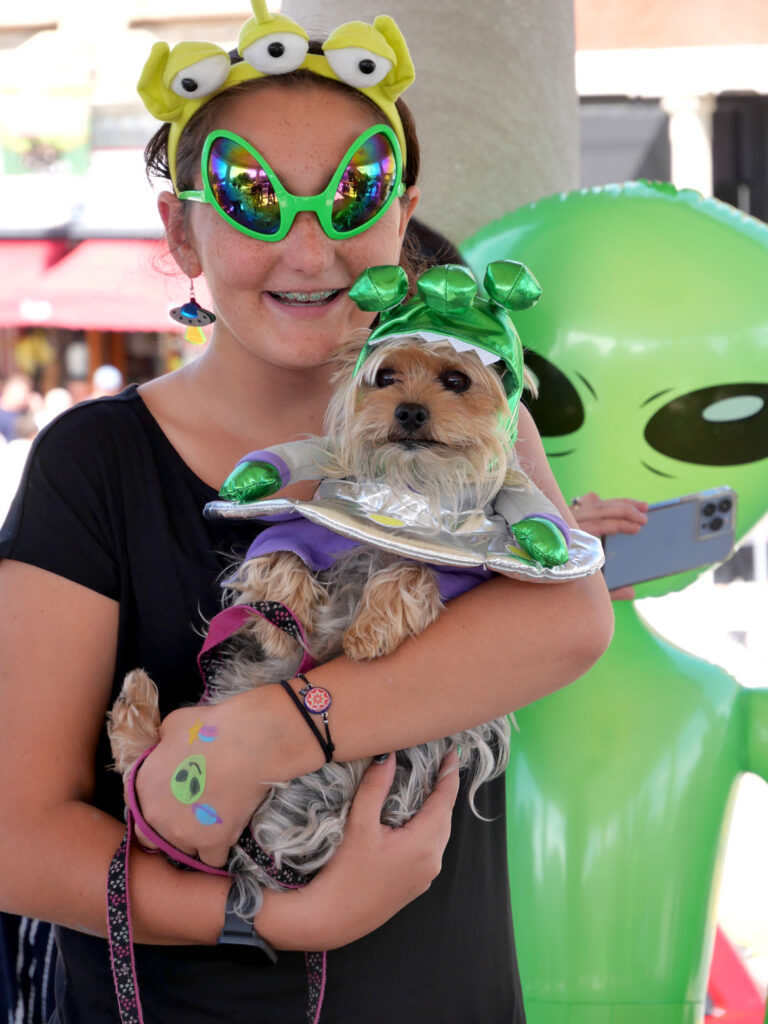


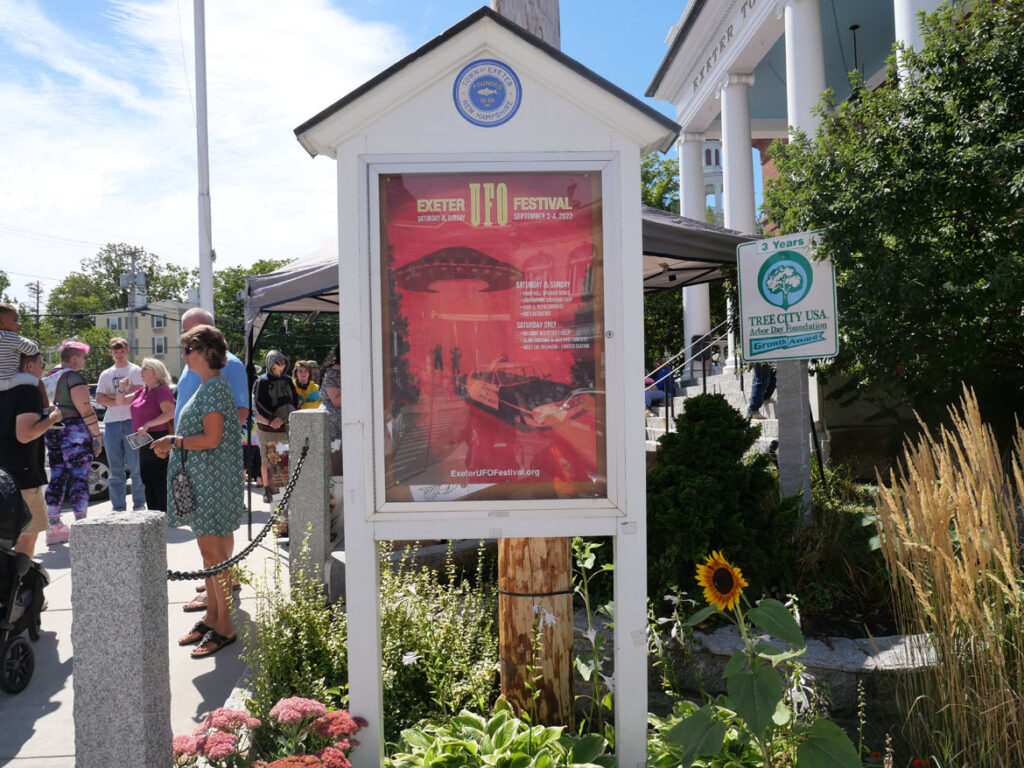
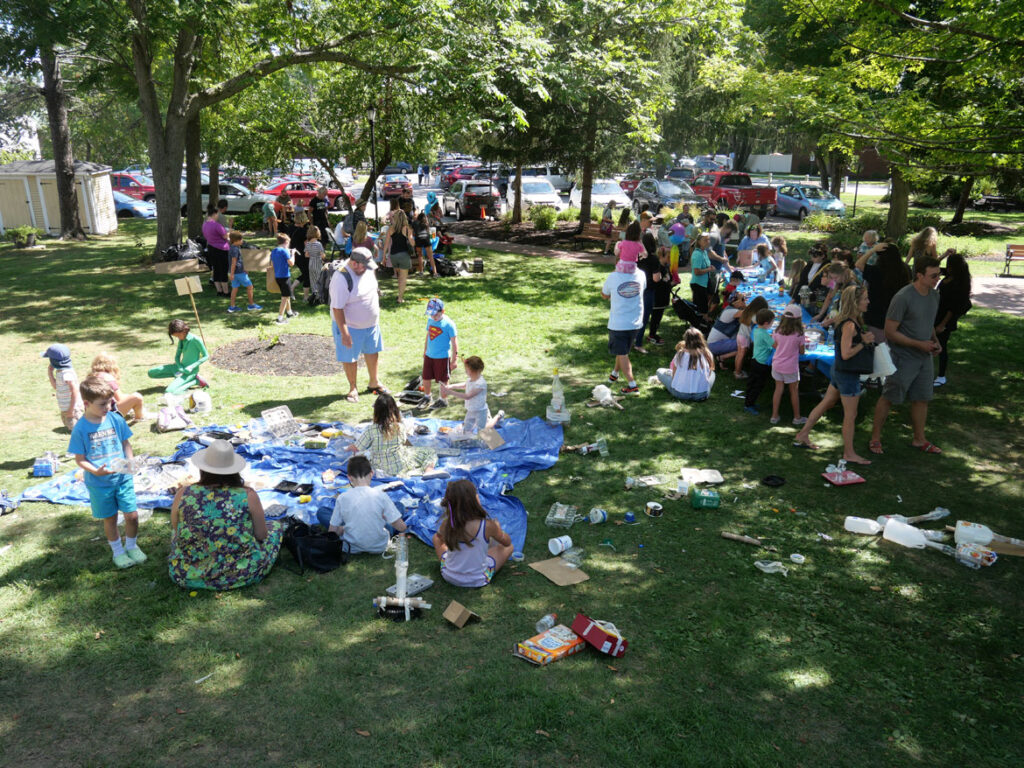
The crustaceans among us
SarahI love pill bugs!
Cambridge Day brings us up to speed on roly-poly little pill bugs, which aren't actually bugs but are instead the only crustaceans that live on land (with gills, even).
Feeling Nameless Feelings
“Consider that collectively, we are in a place where many of us are feeling nameless feelings right now. It is possible that years down the line, we may have to create new words to describe what we were feeling in this space. Some of the words we use to describe what we’re experiencing right now just might not feel like enough… and maybe, that’s okay… because we have never been here before. This is all brand new, and maybe, in time, the words will need to be new, too.
Perhaps, feeling what you need to feel is a process… and finding the language for those feelings is a process, too.”
Not To Ne Reproduced
Sarahahhh these are amazing!
Ichiro Suzuki is a Japanese born menswear designer currently based in Paris. He graduated from Royal College of Art and was trained in the art of cutting in a Savile Row tailor before he moved to Paris. Suzuki's major influences are rooted in traditional British bespoke tailoring. Savile Row tailors display a classicism and eccentricity that, while meticulously adhering to luxury craftsmanship, also reveals elements of breathtaking originality.
In this collection, Suzuki was heavily inspired by Belgian surrealist artist, René François Ghislain Magritte. Familiar patterns such as the classic Burberry check, paisley pattern, tartan and cable knit are given an almost Trompe-l'œil treatment, dripping down these classically tailored trench coats.








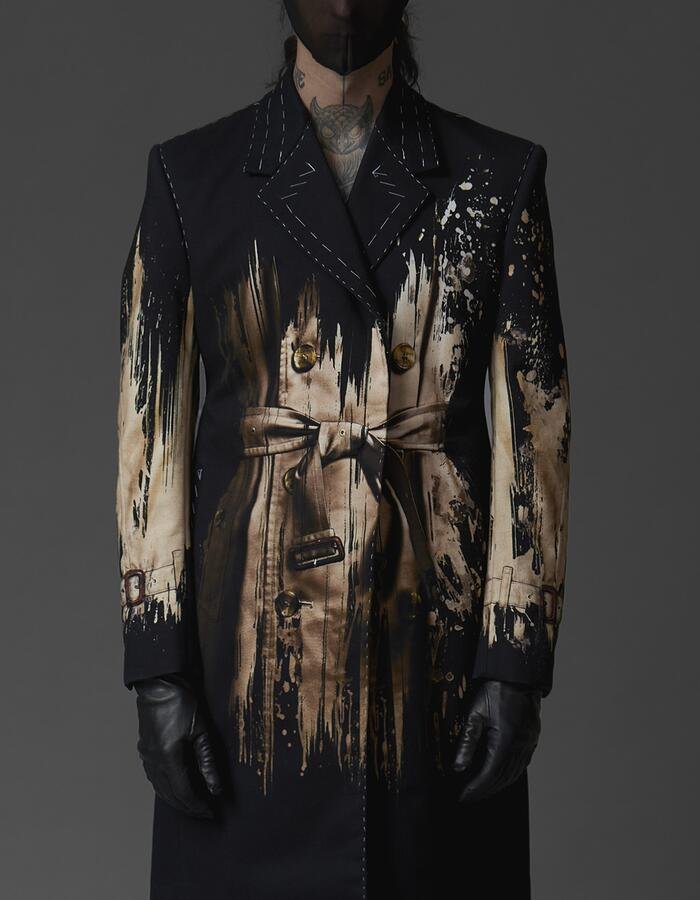




Misako, 36“I’m wearing a 40s blazer, 70s top, Dries Van...

Misako, 36
“I’m wearing a 40s blazer, 70s top, Dries Van Noten dress, Maison Margiela tabi boots, and 70s bag. Layered style is my style! I mix the essence of old, new, fashion, vintage, ethnic costumes and handcrafts in my own way.”
Saturday Morning Breakfast Cereal - Liberal Education

Click here to go see the bonus panel!
Hovertext:
Thank you to patreon typo squad for finding the one typo amongst 8 trillion words.
Today's News:
Remember when people used to read the little blog posts under comics? They don't now, so I can write whole lines of gibberish, squinkle dabyougargh nunglepeep.

